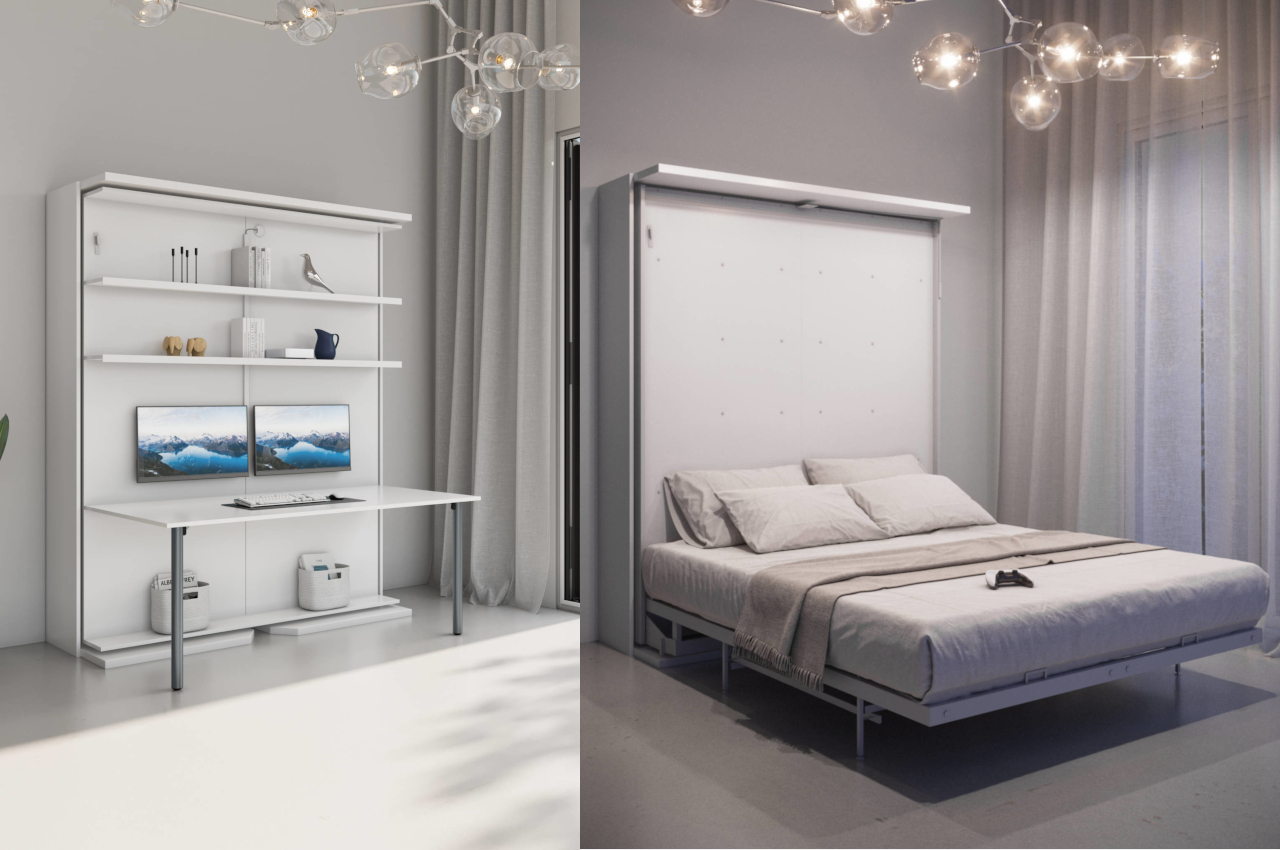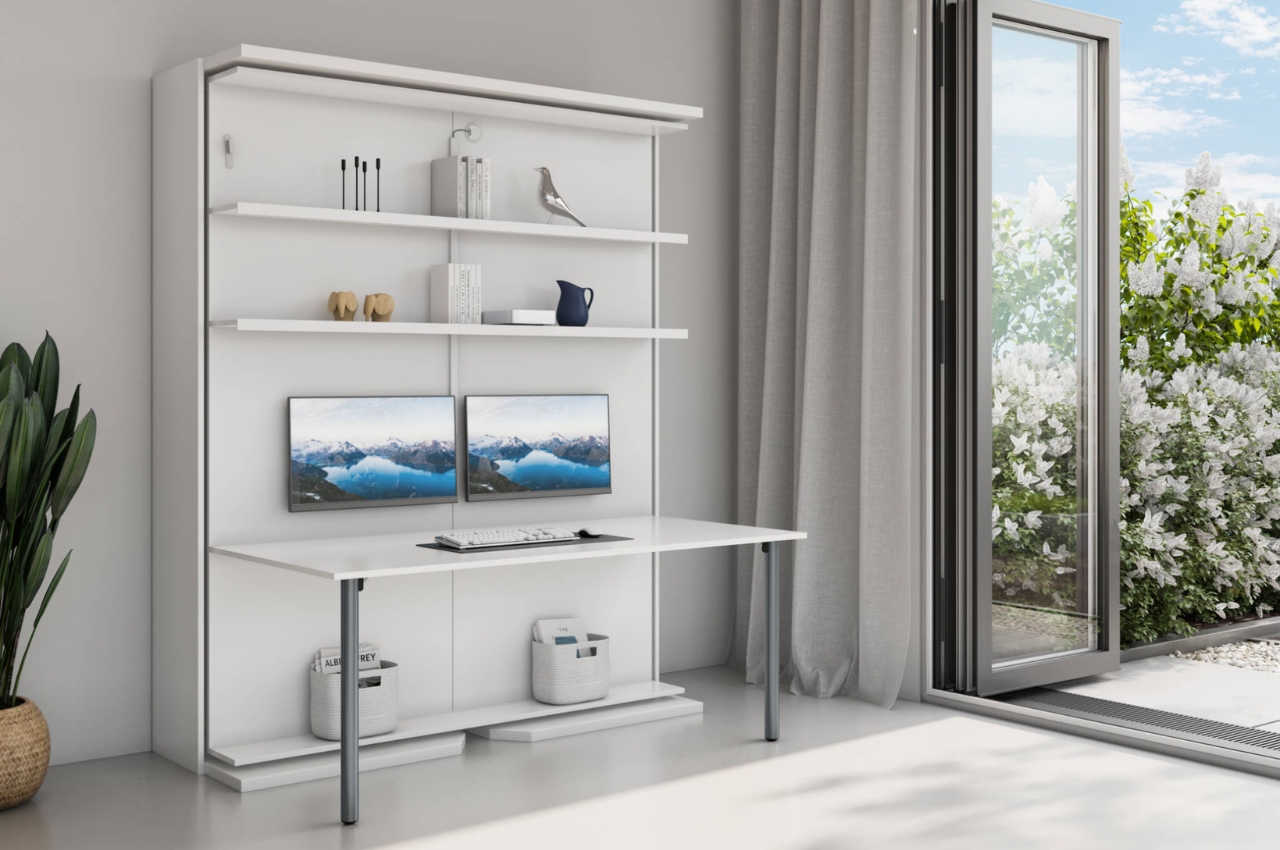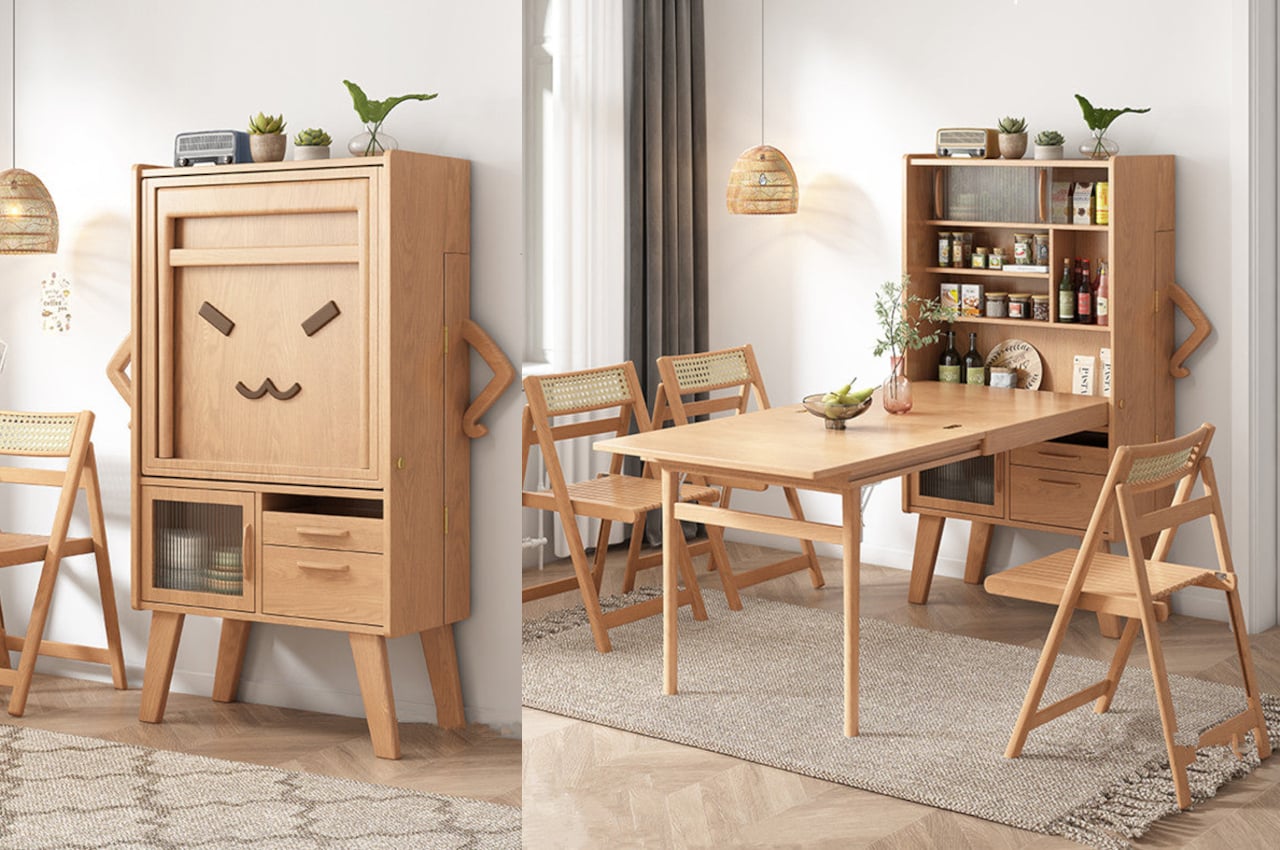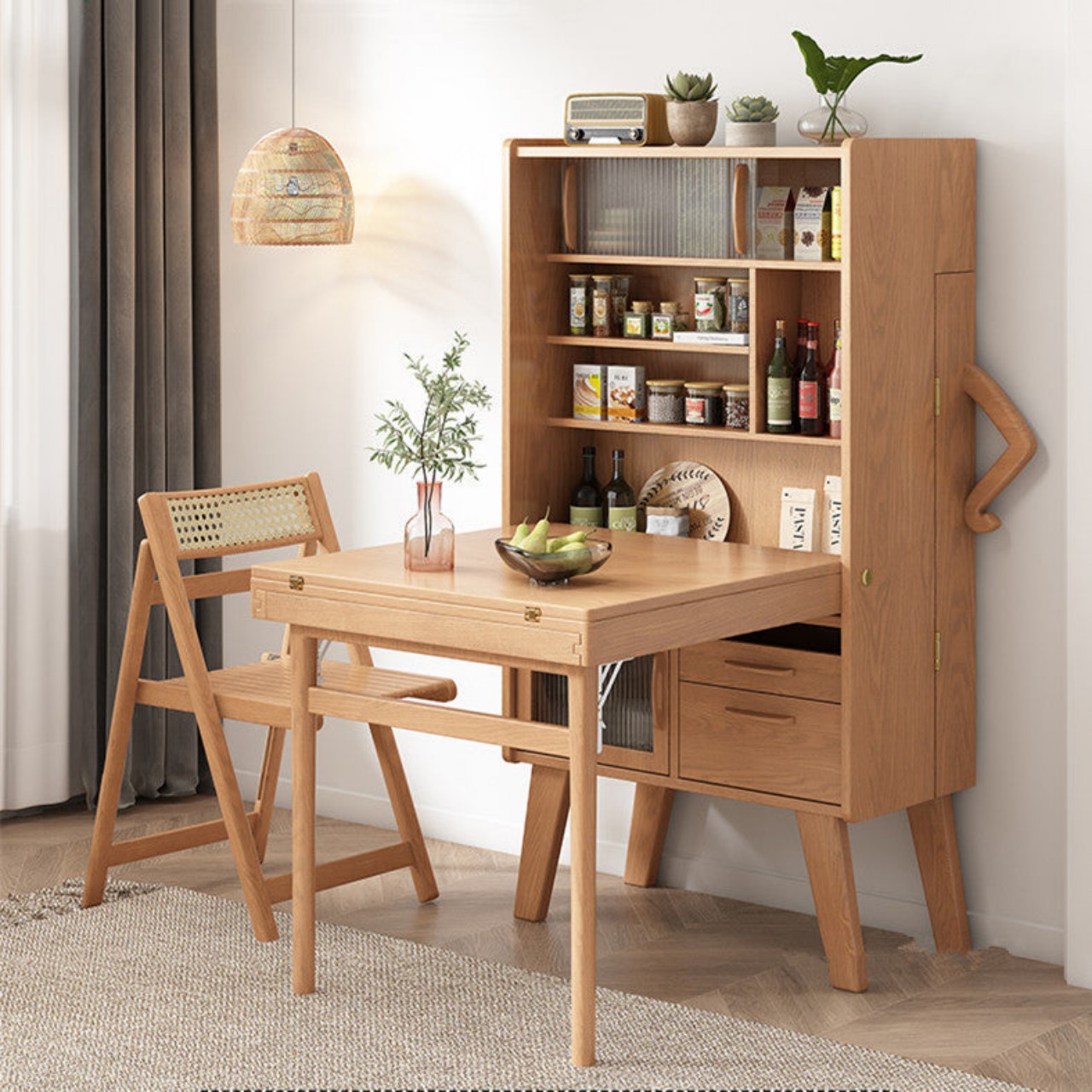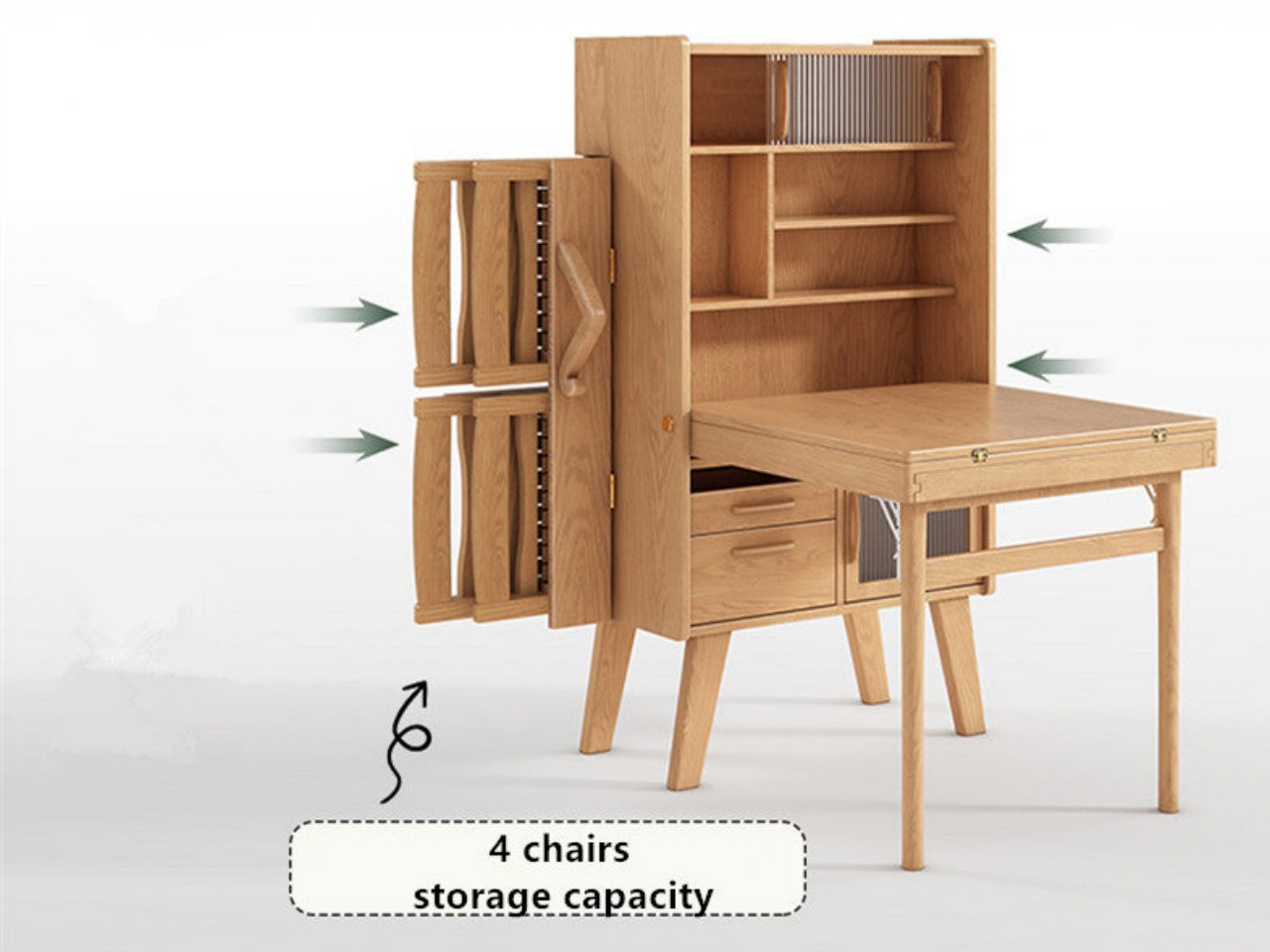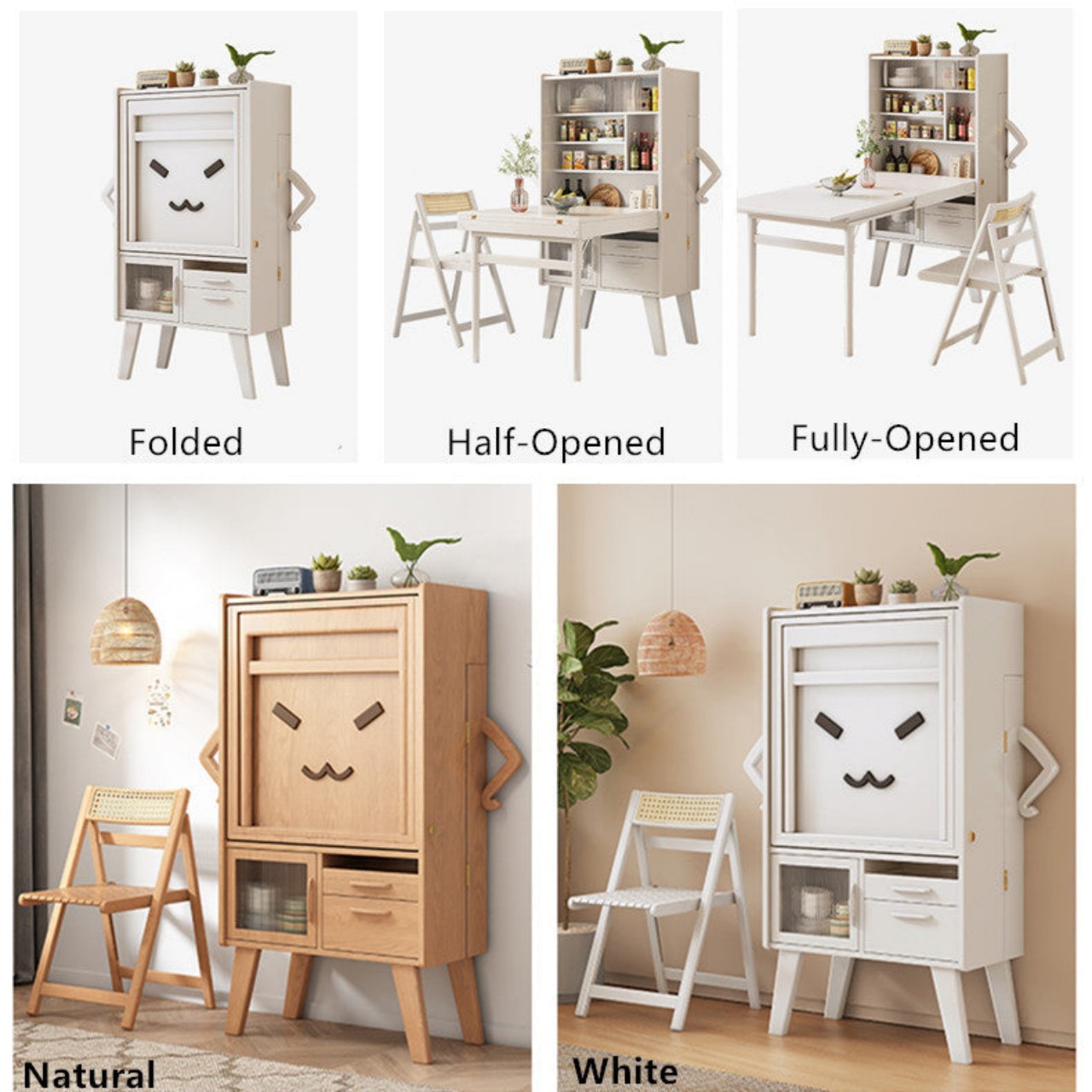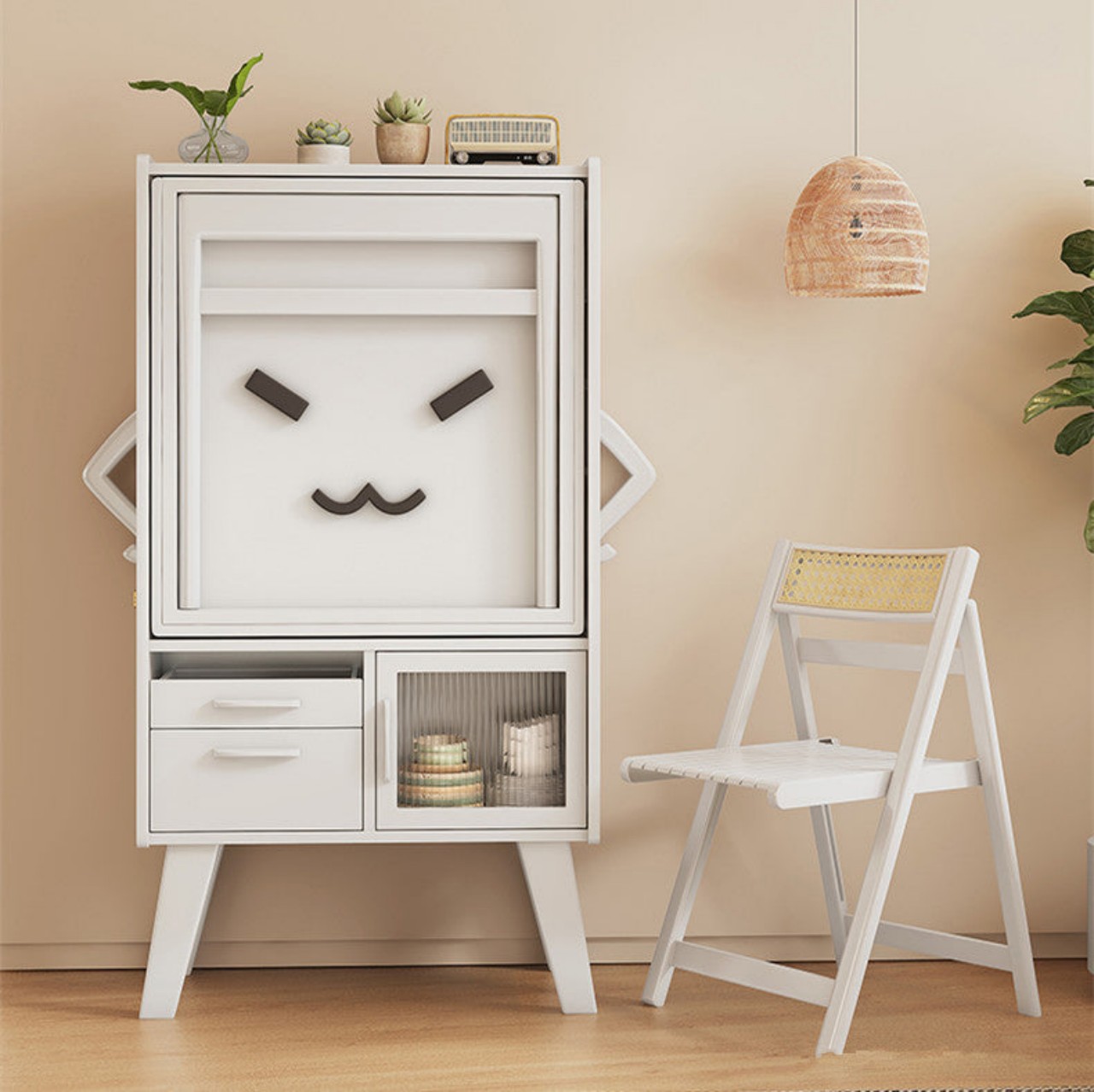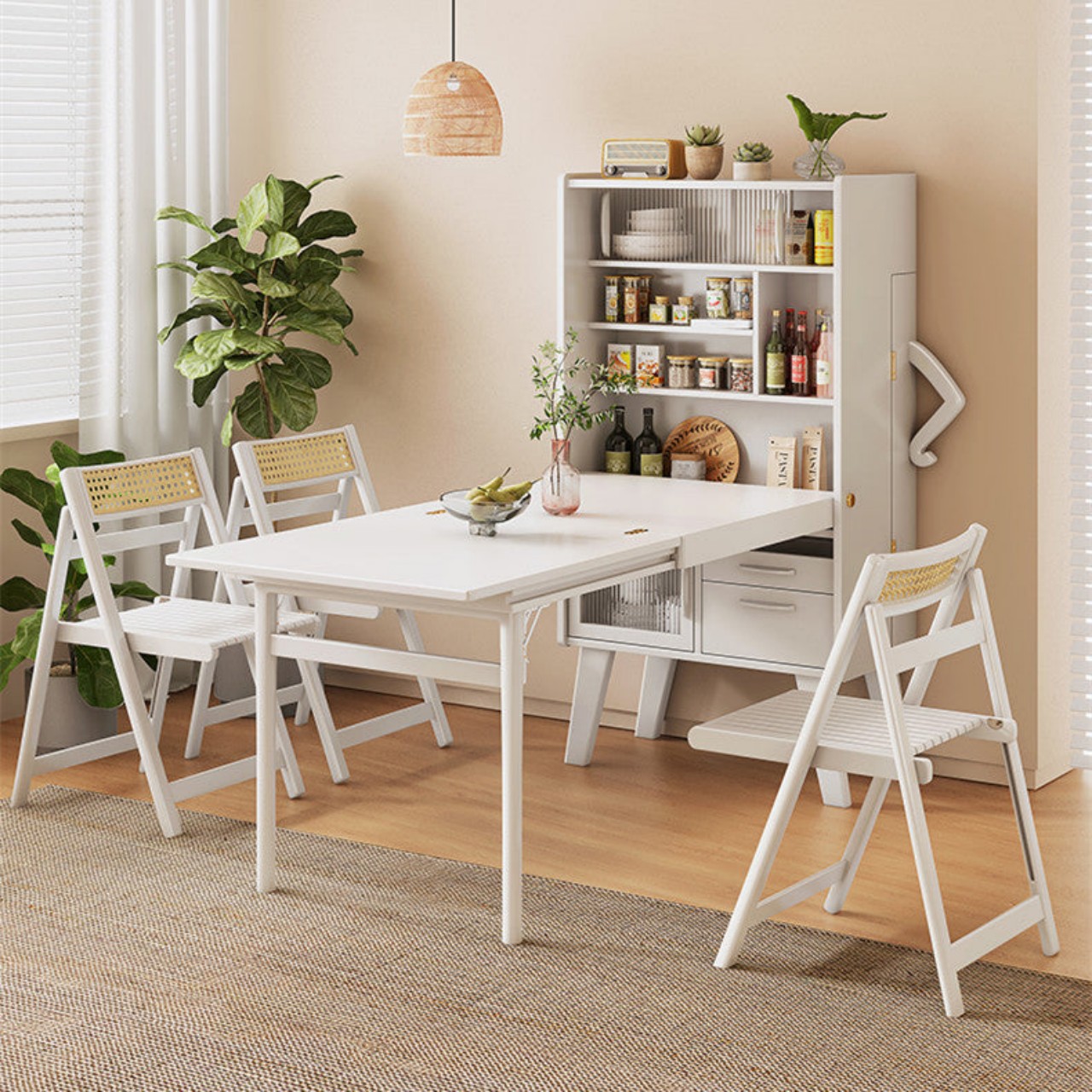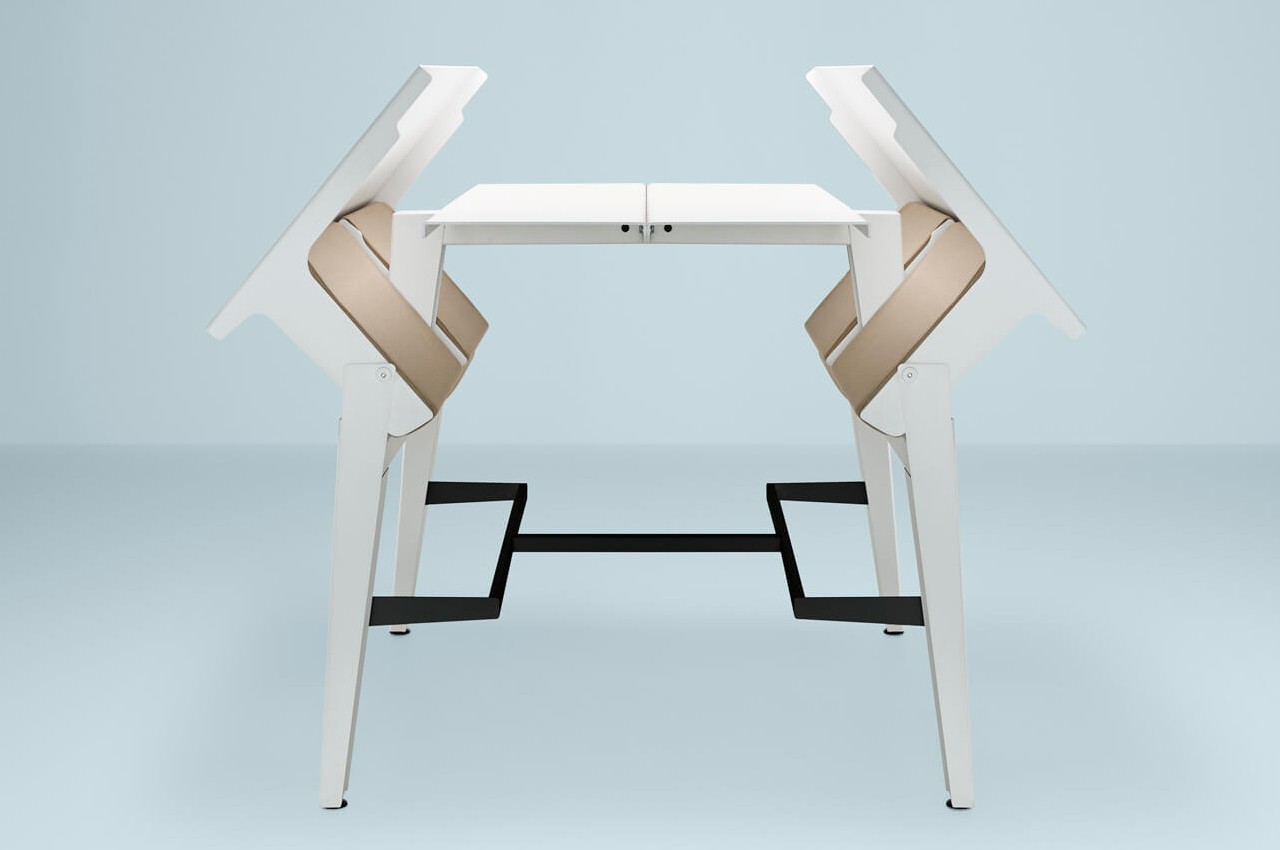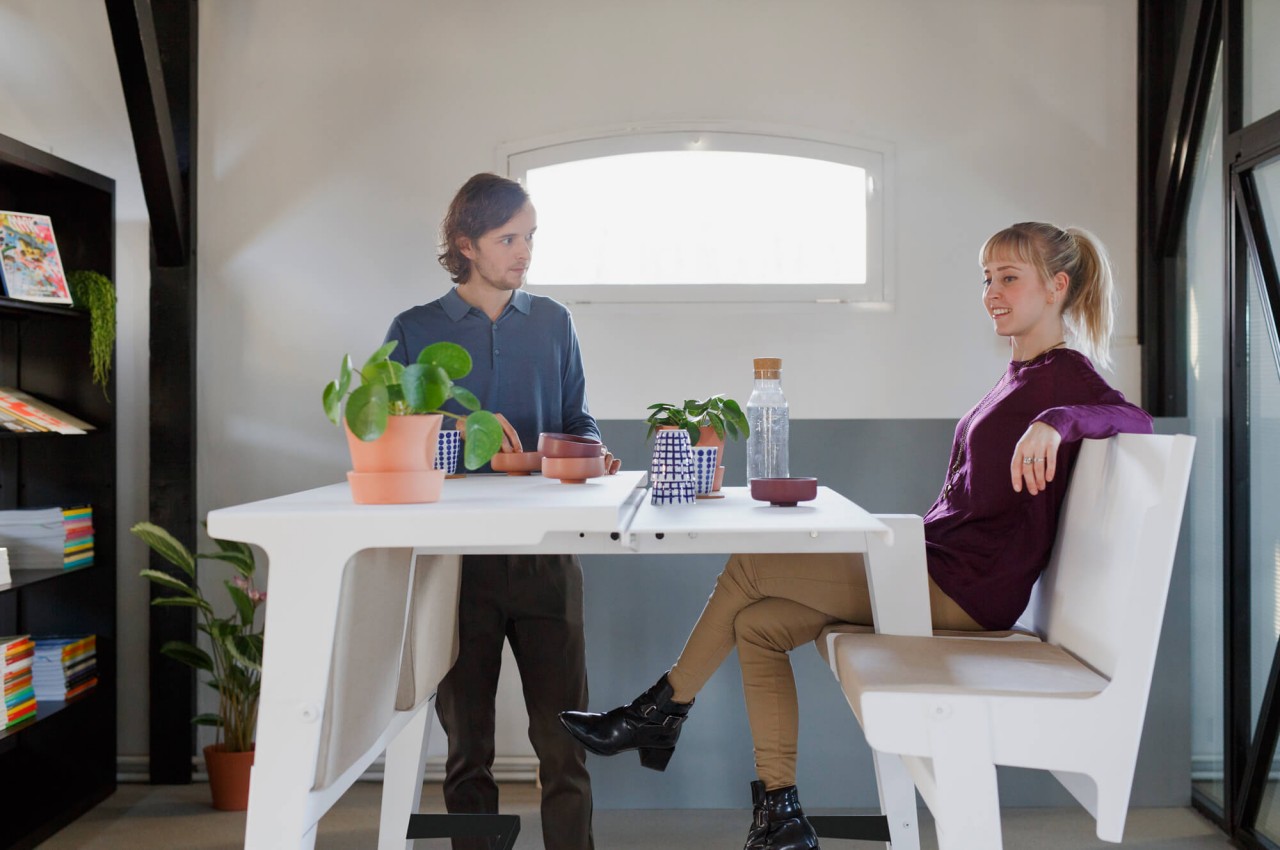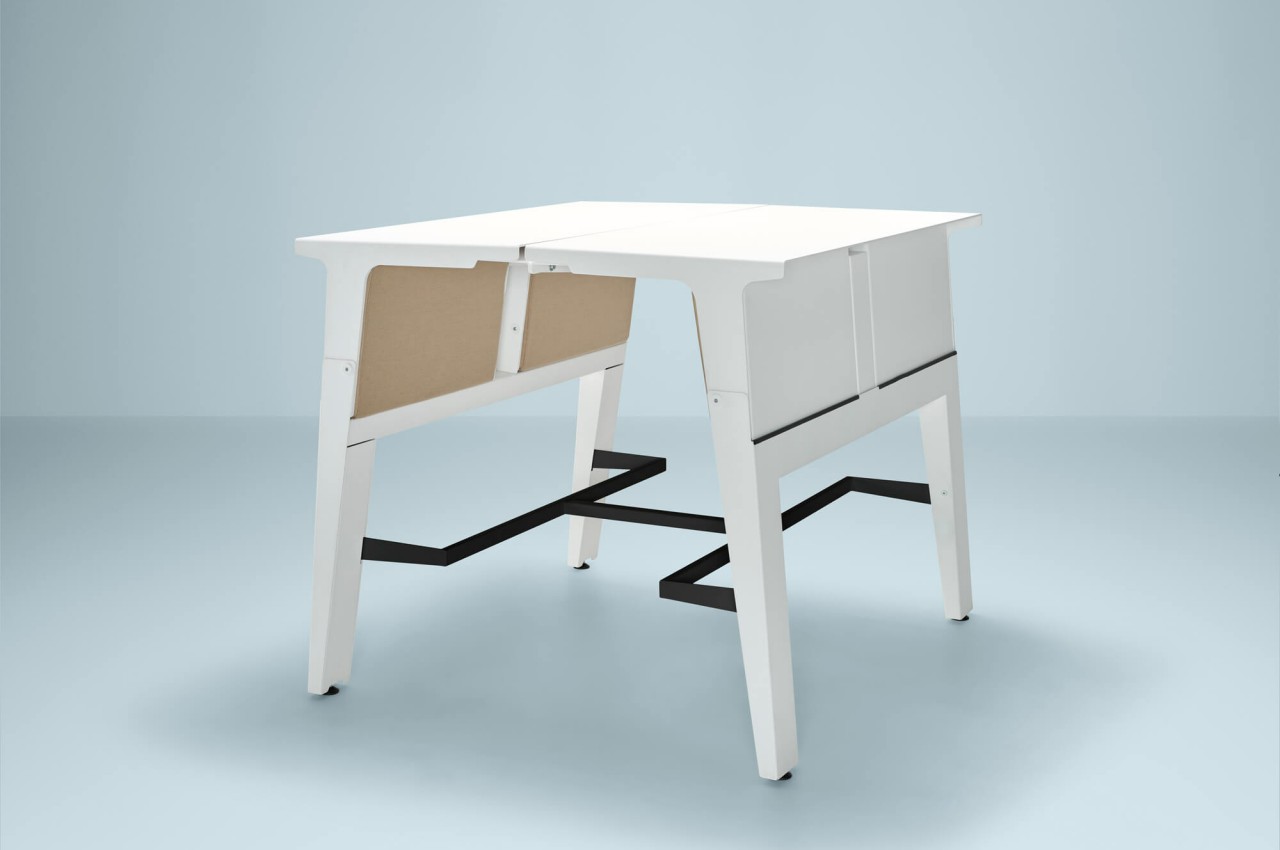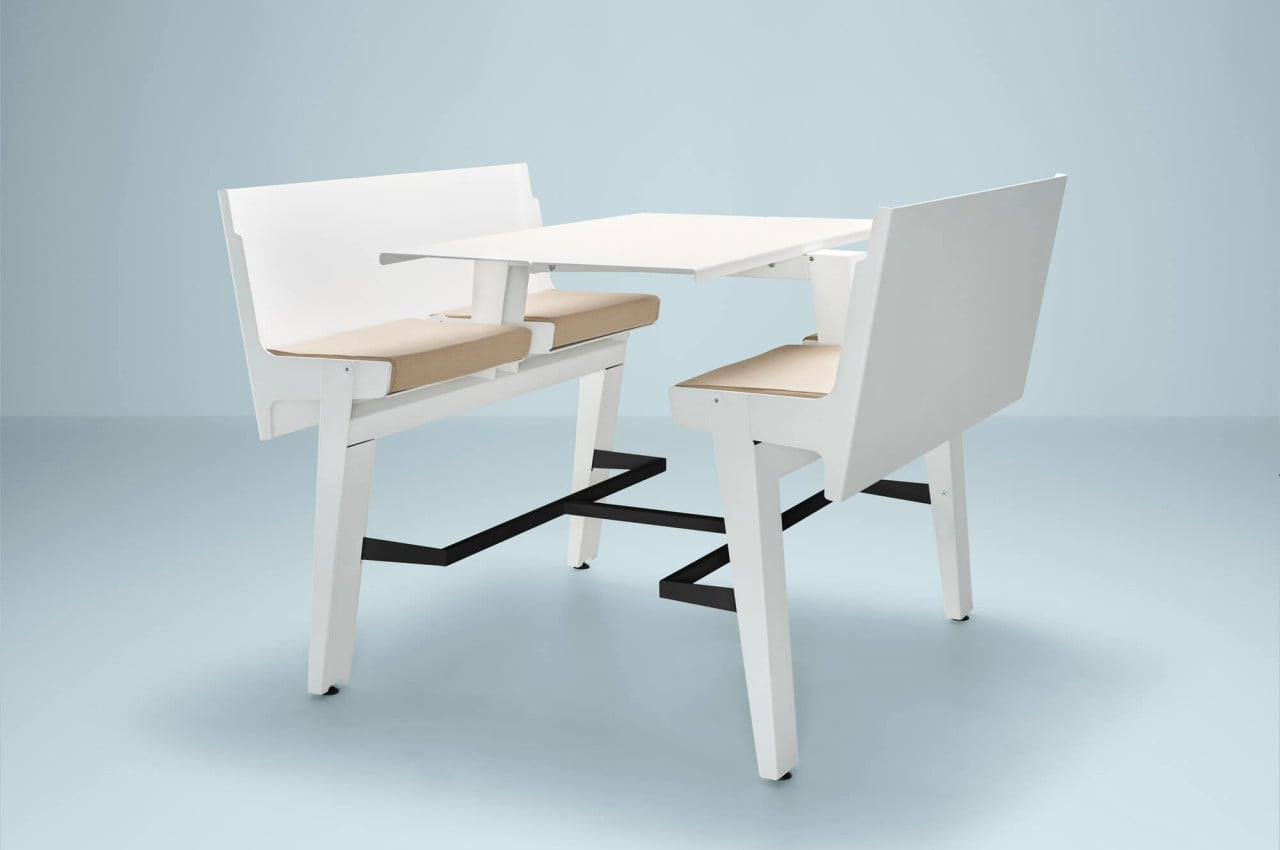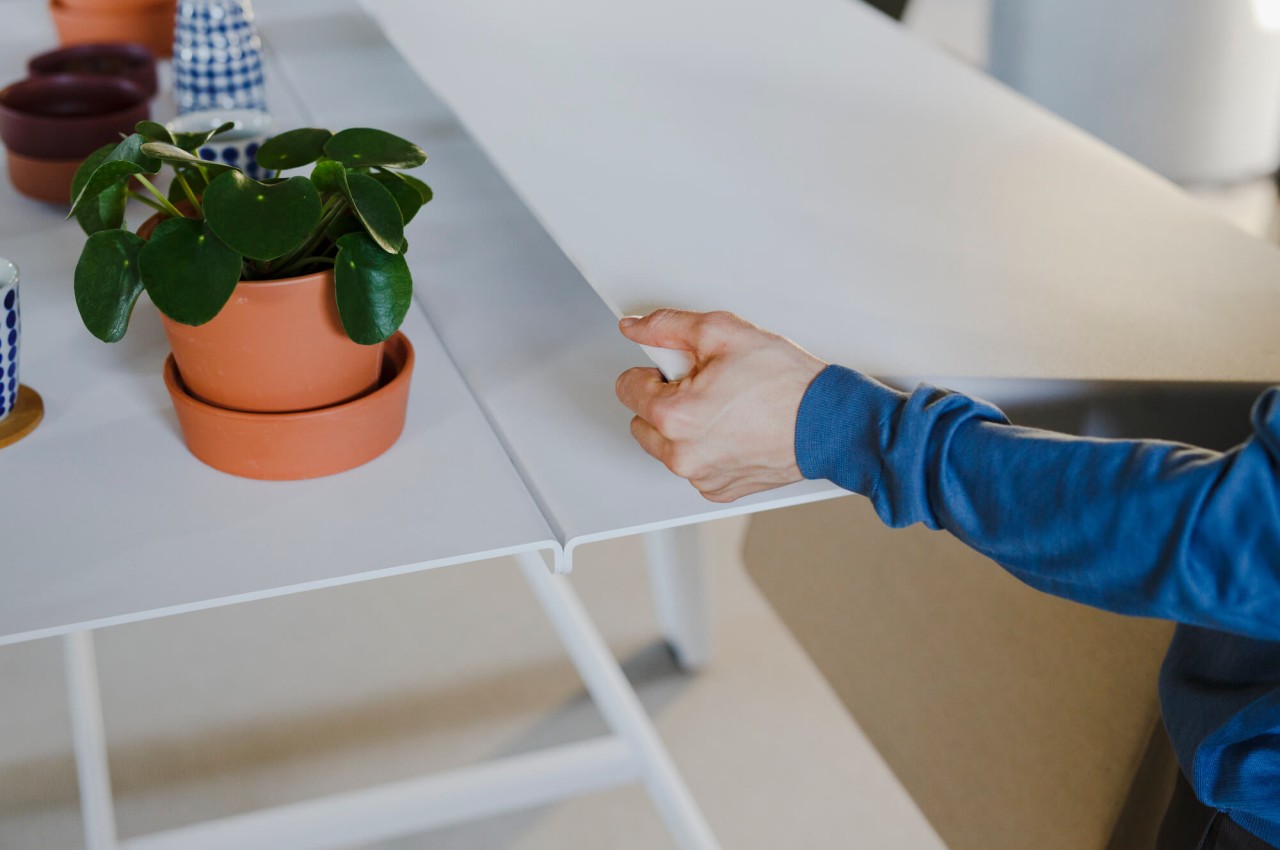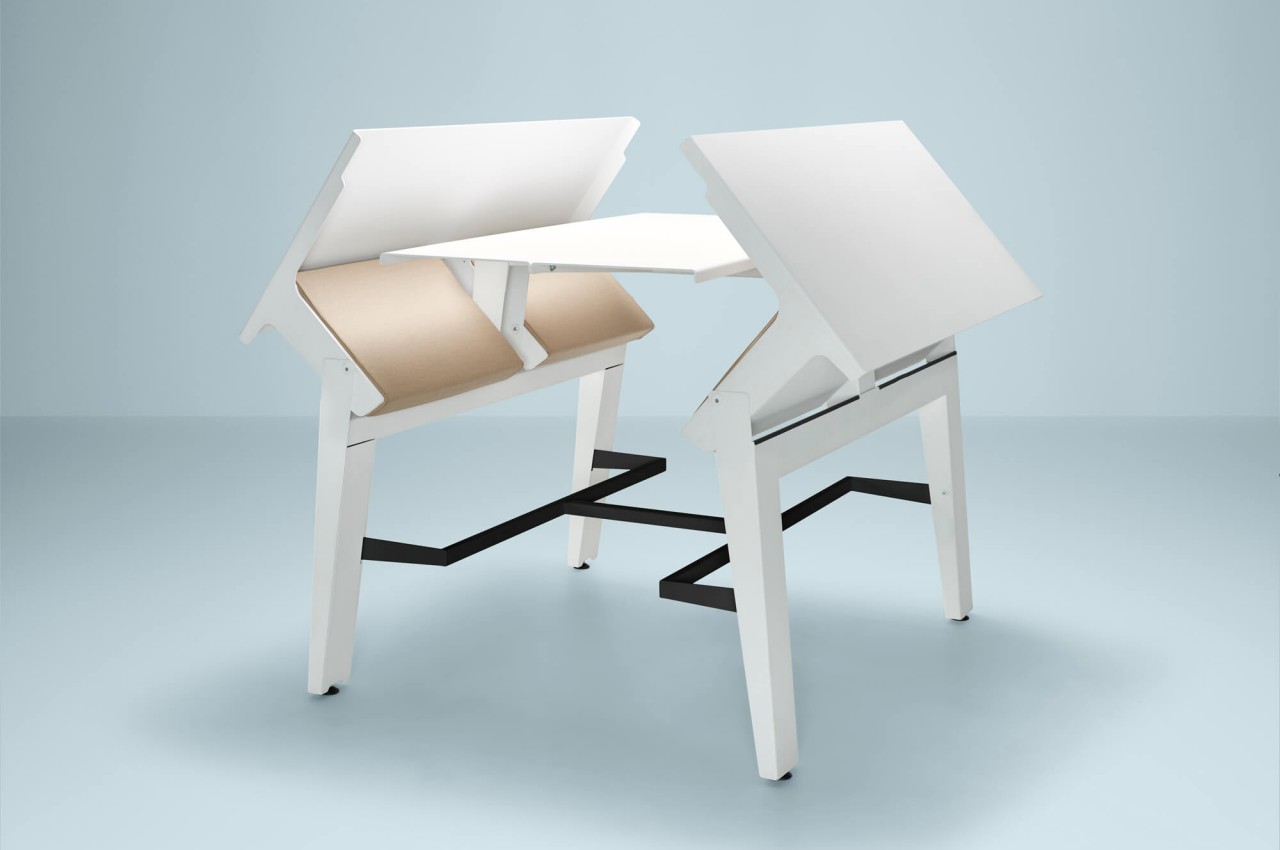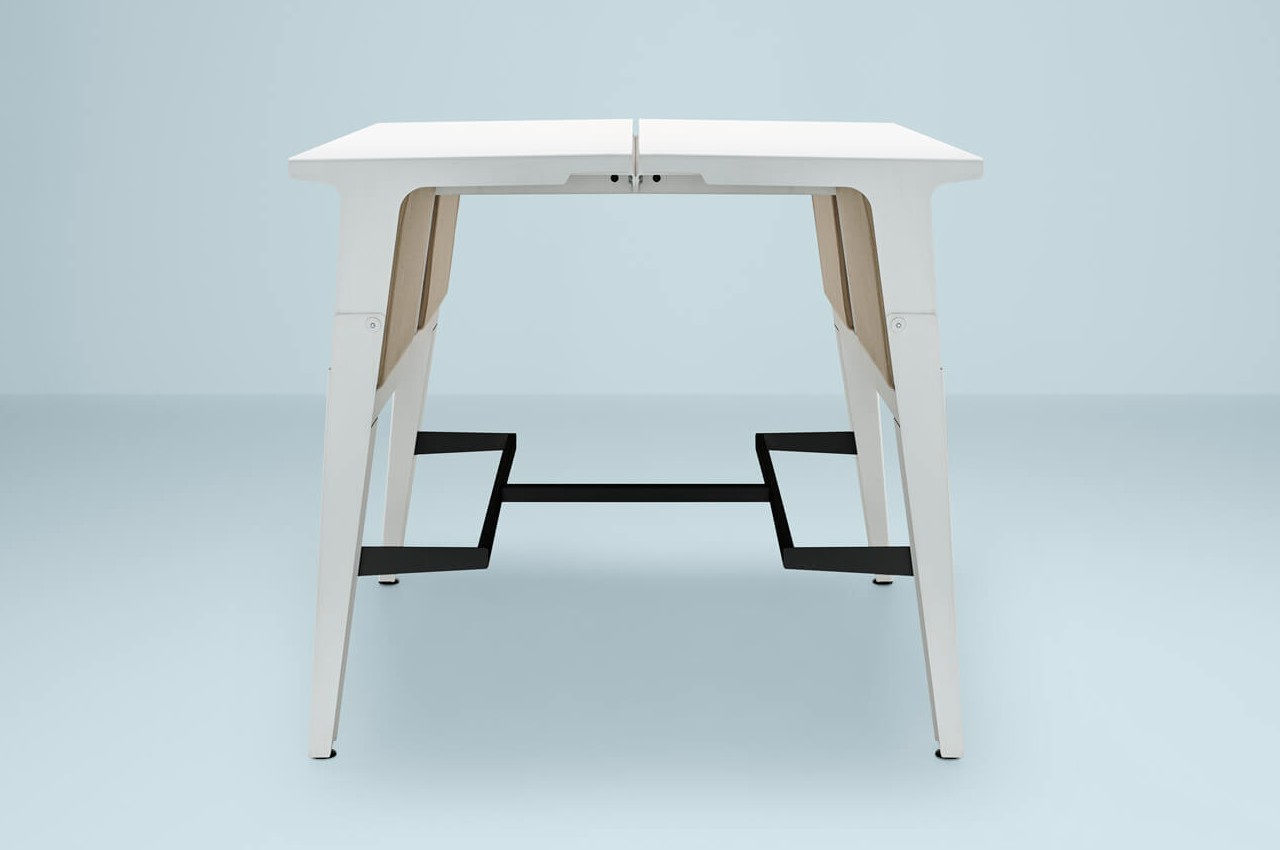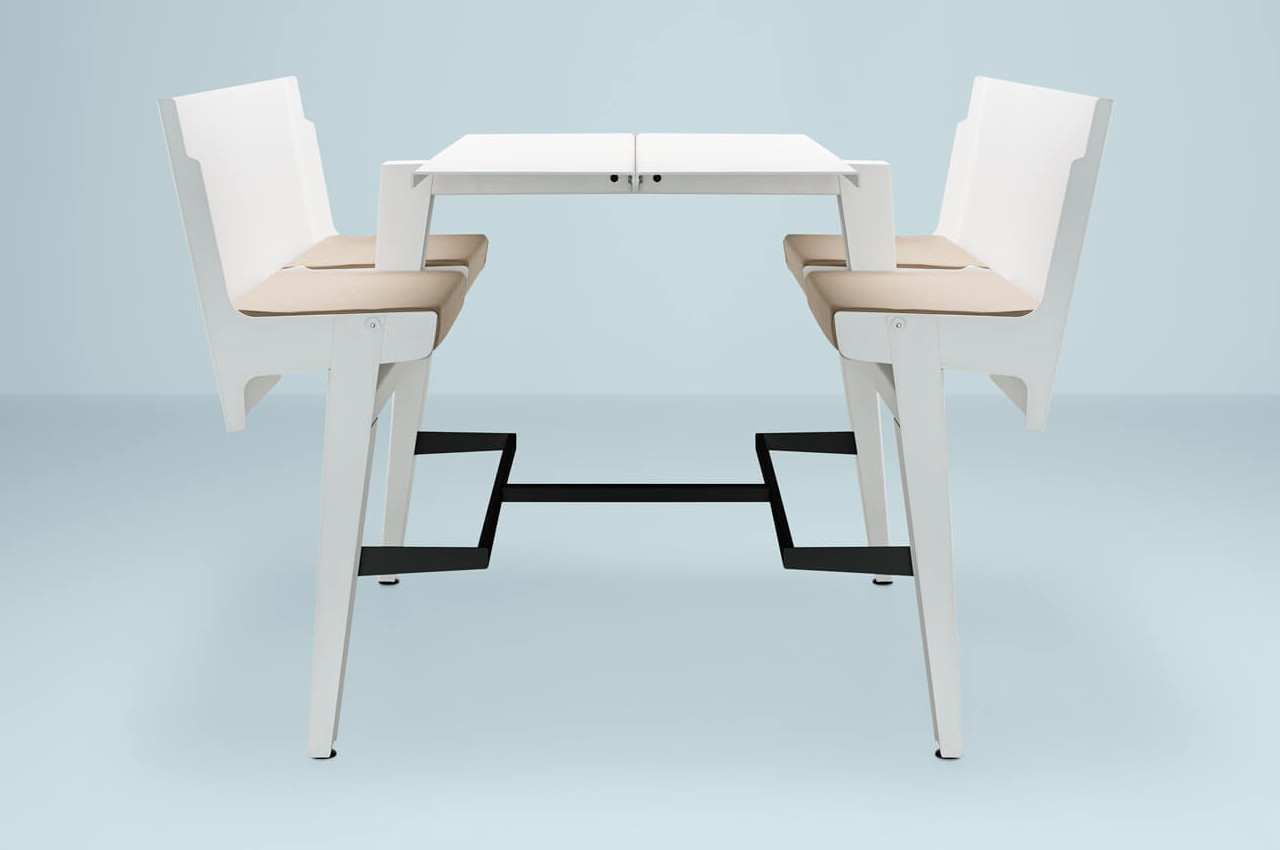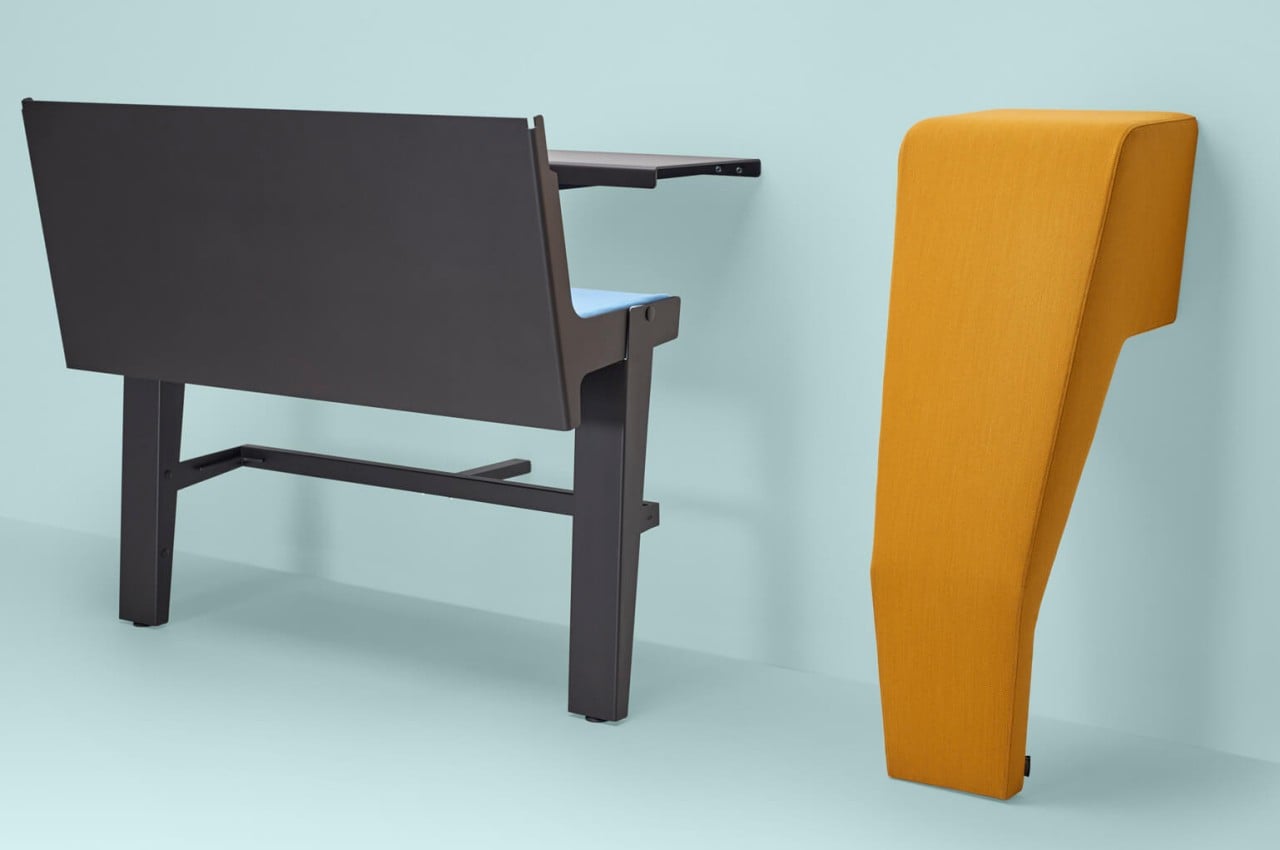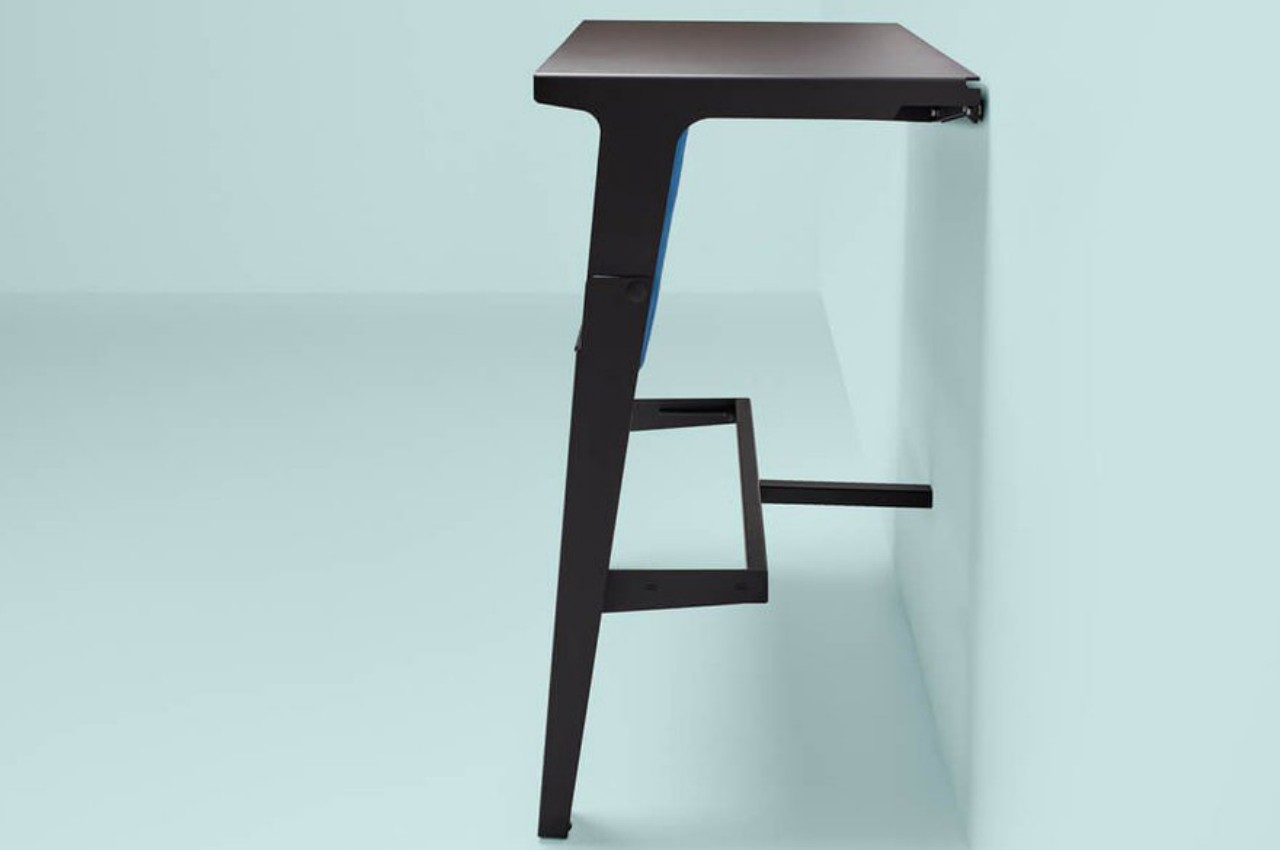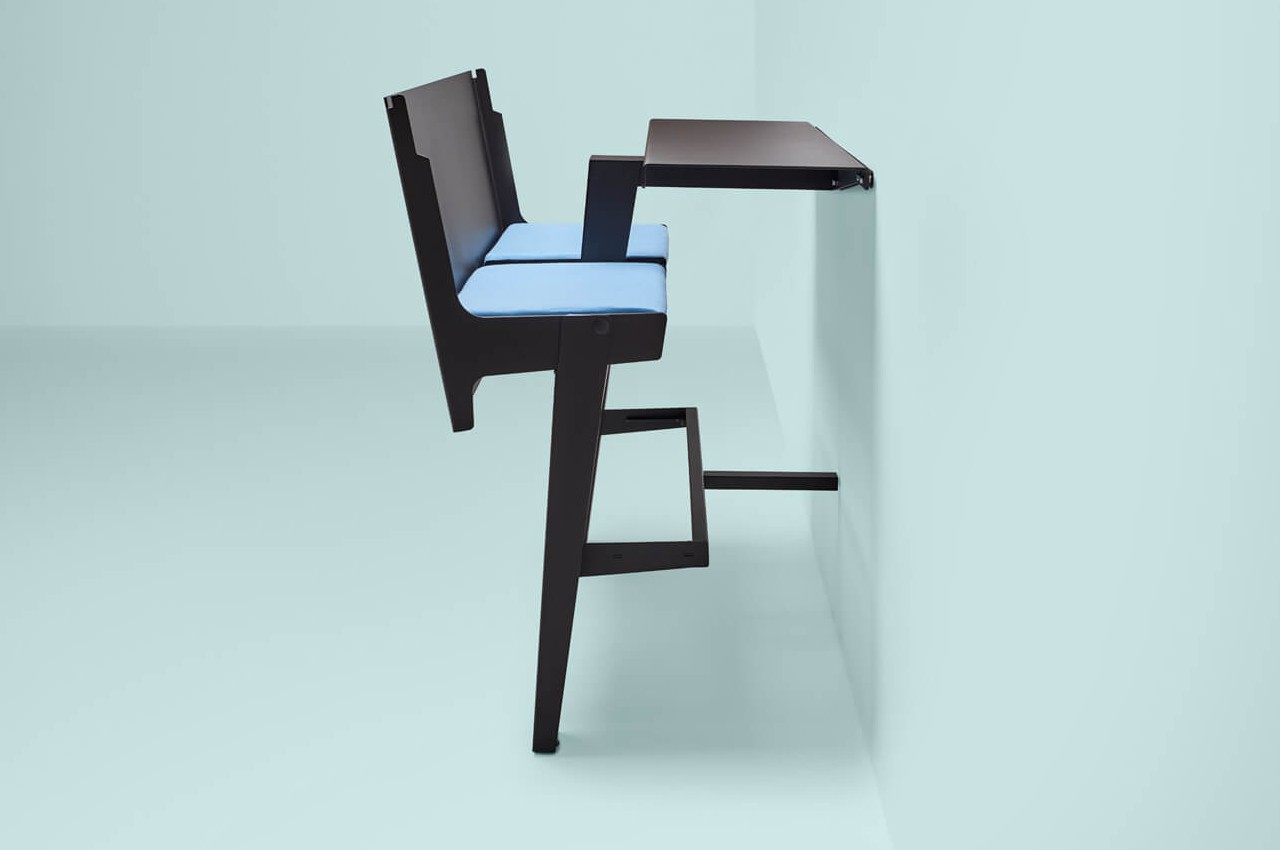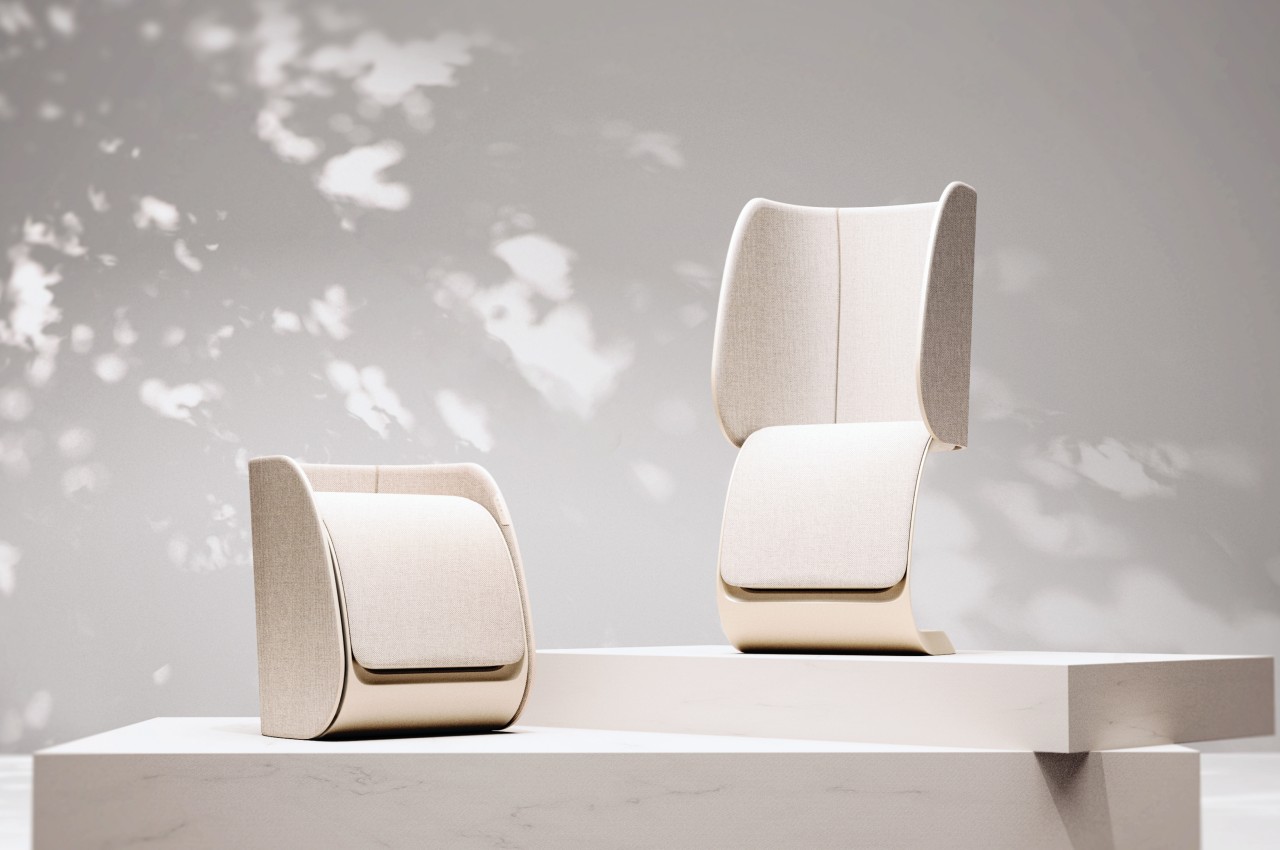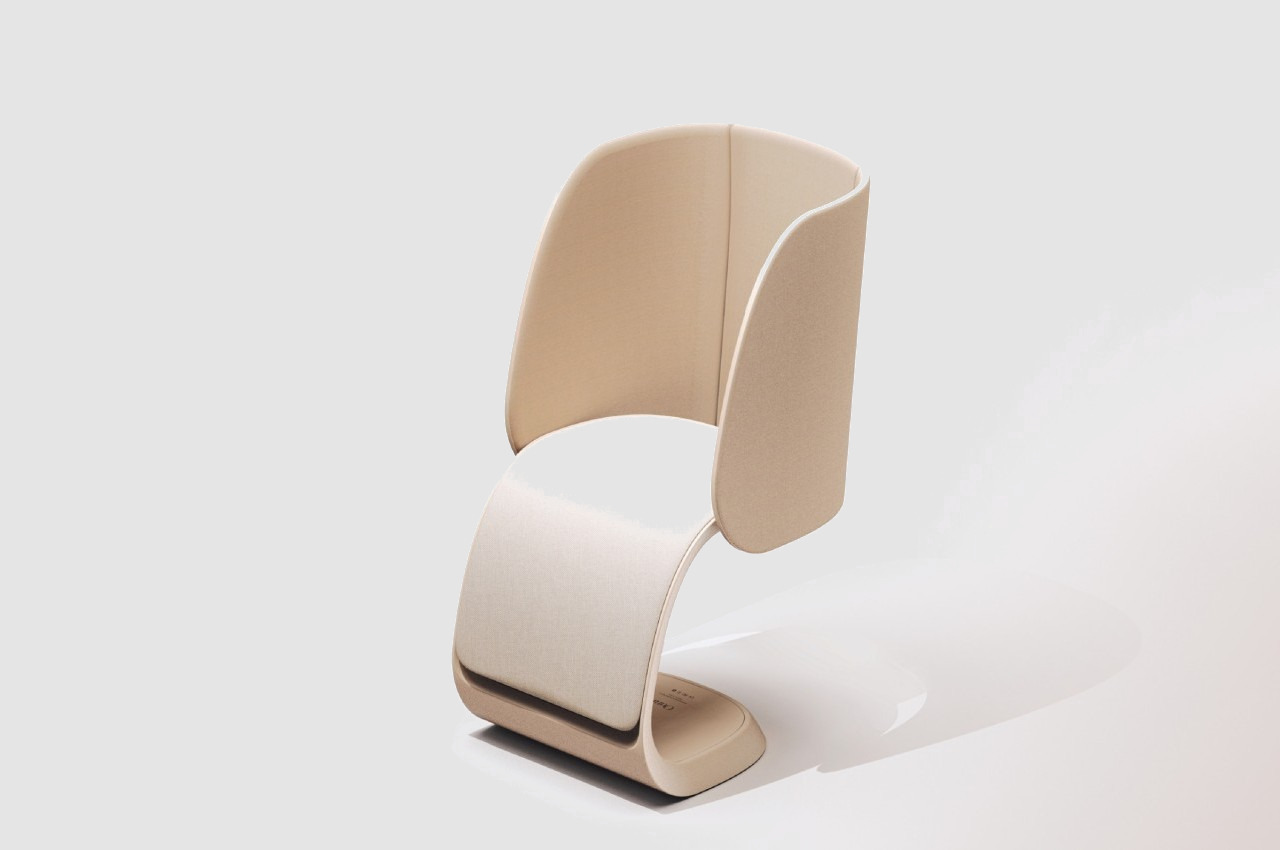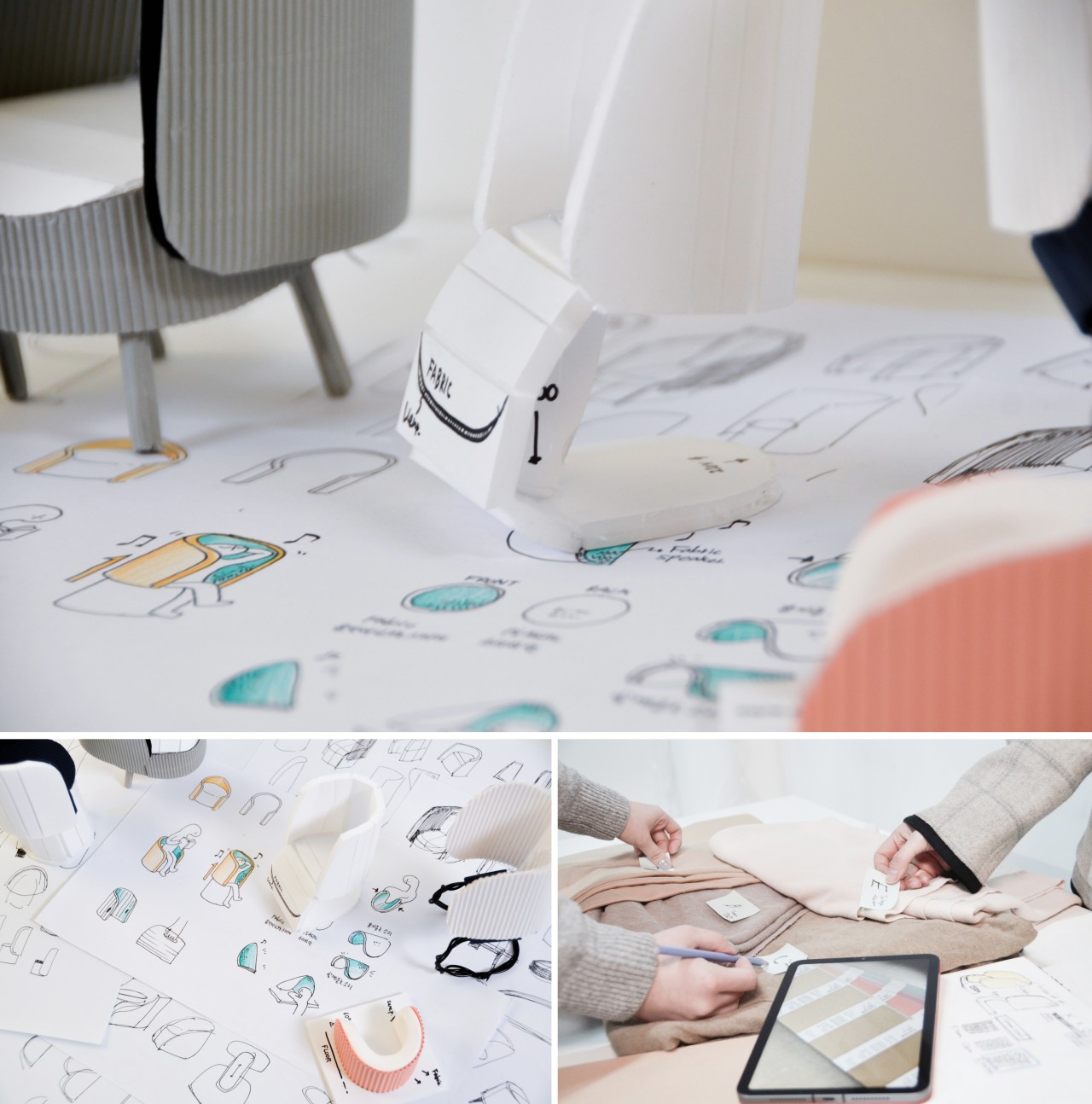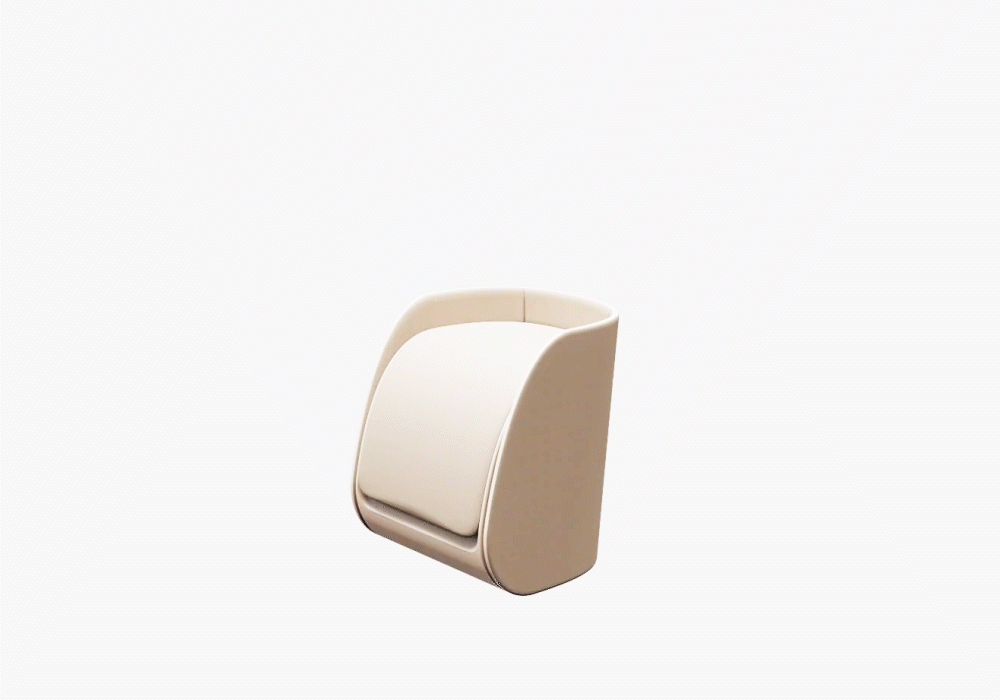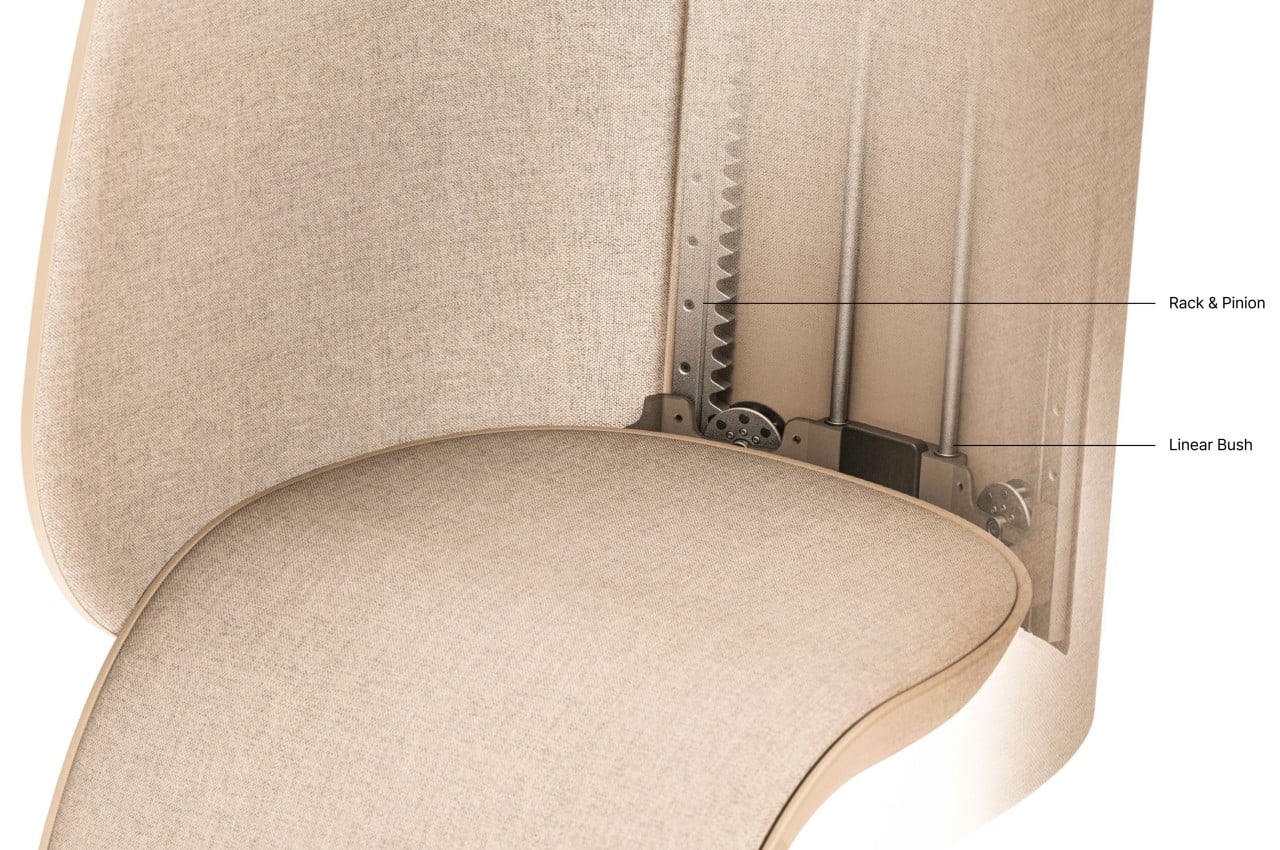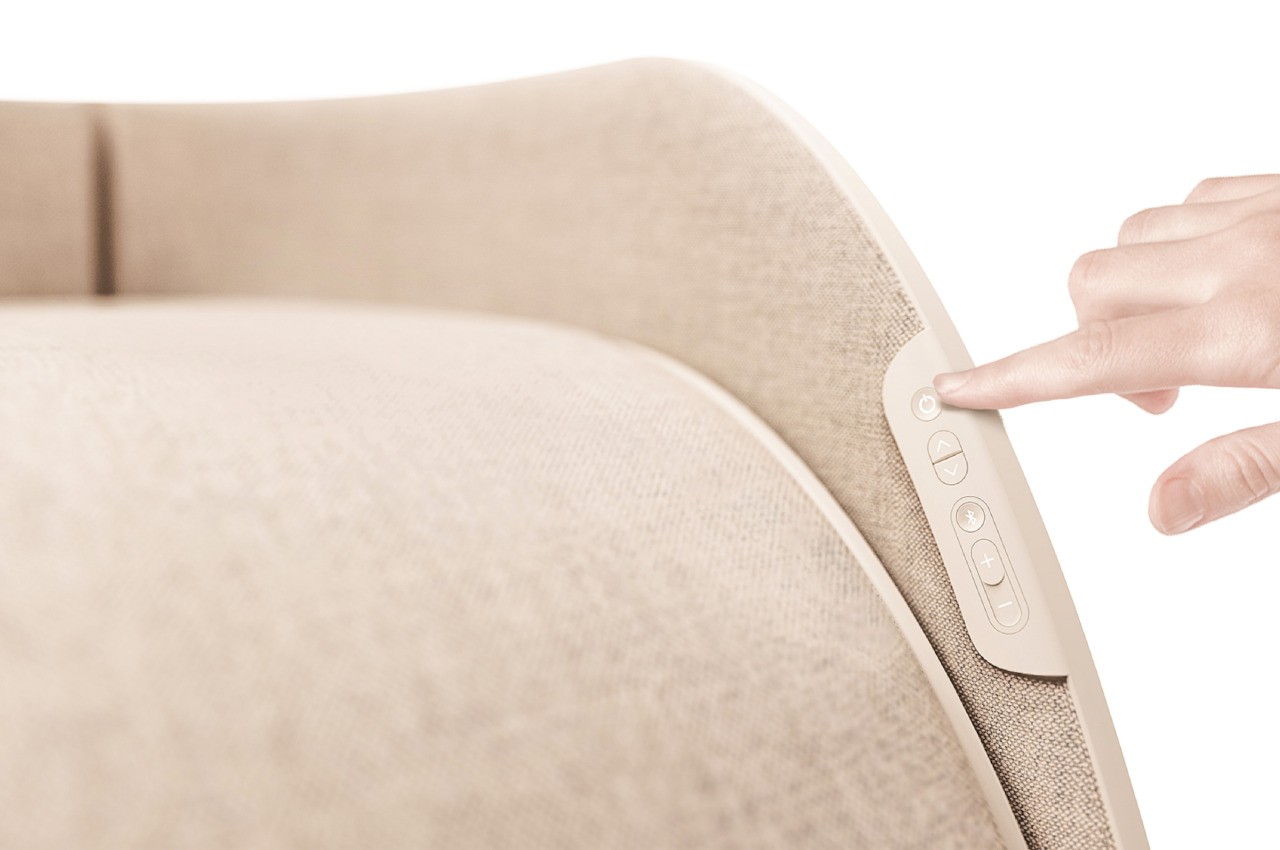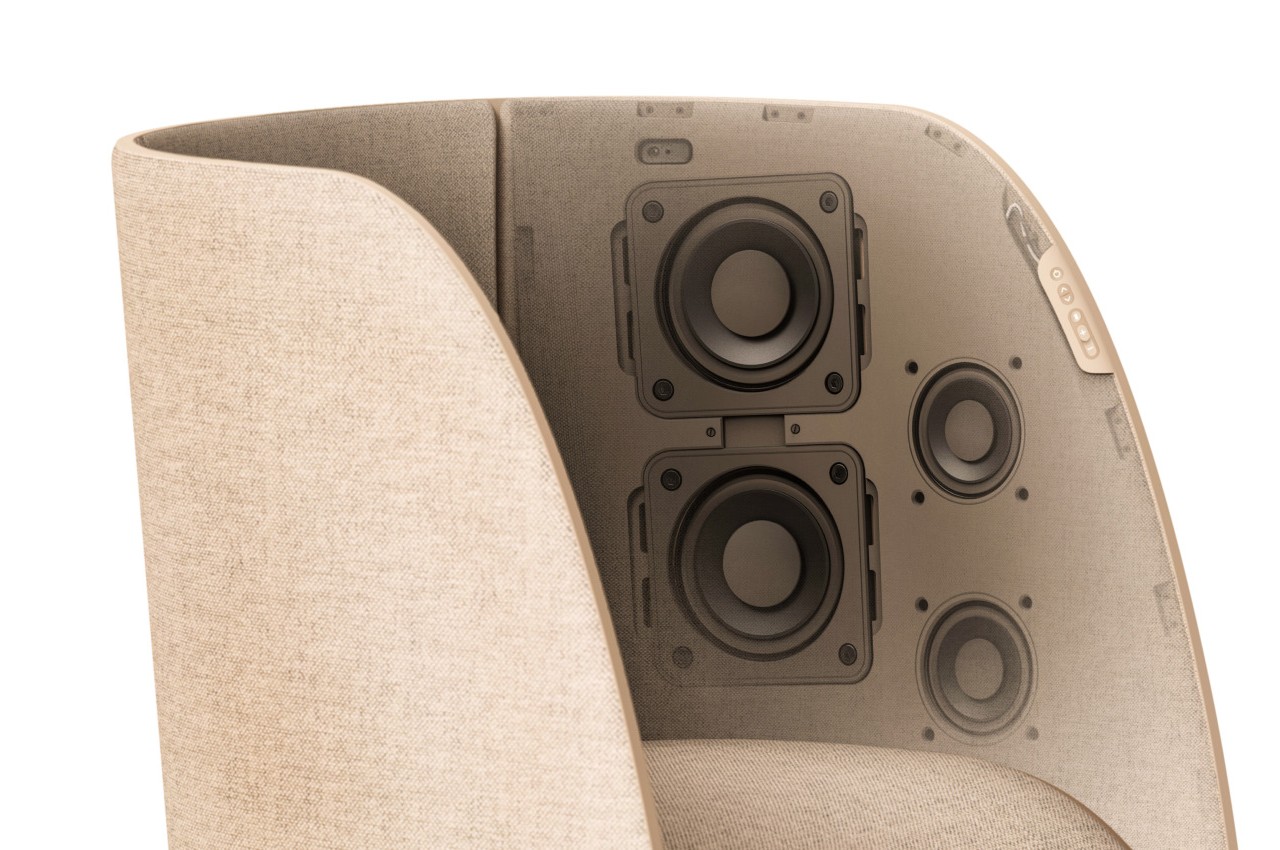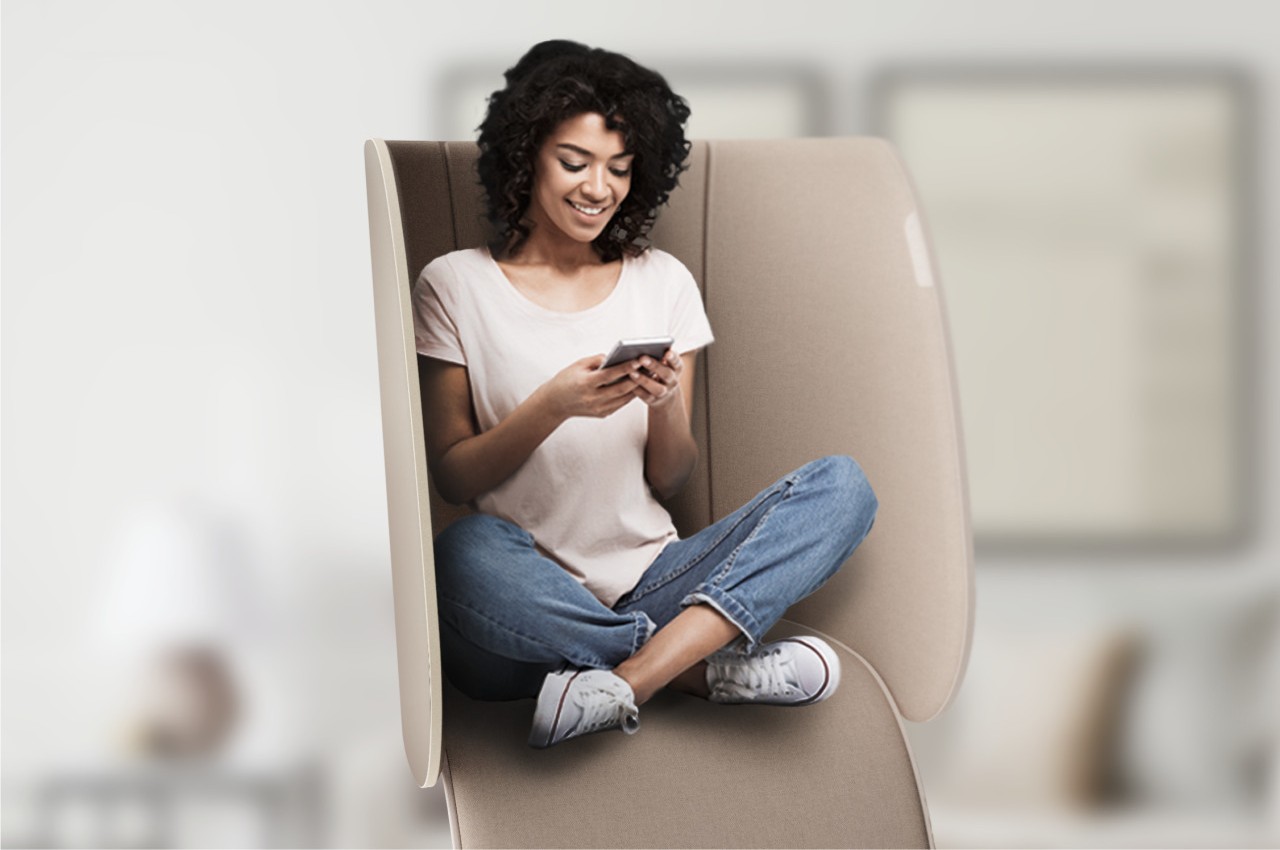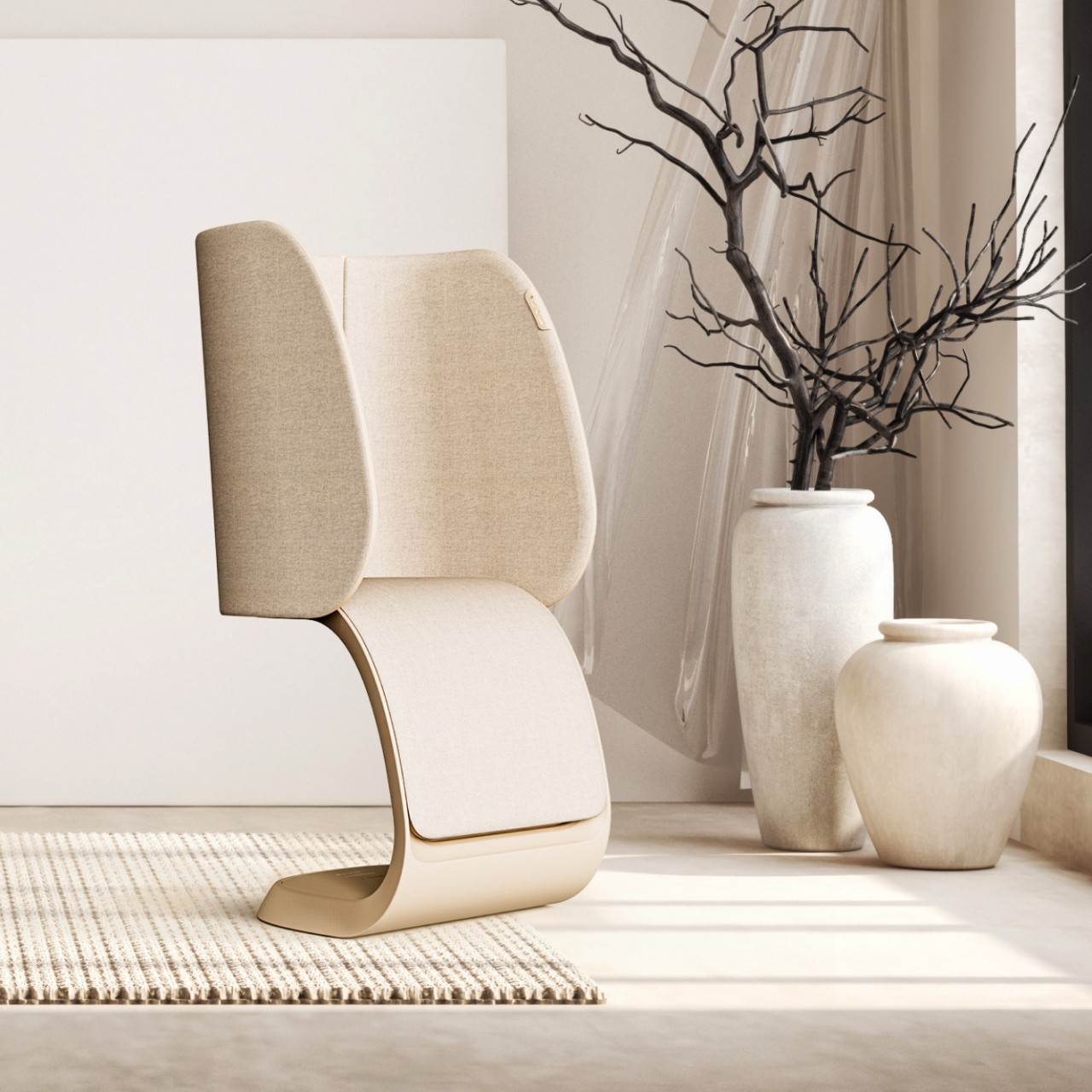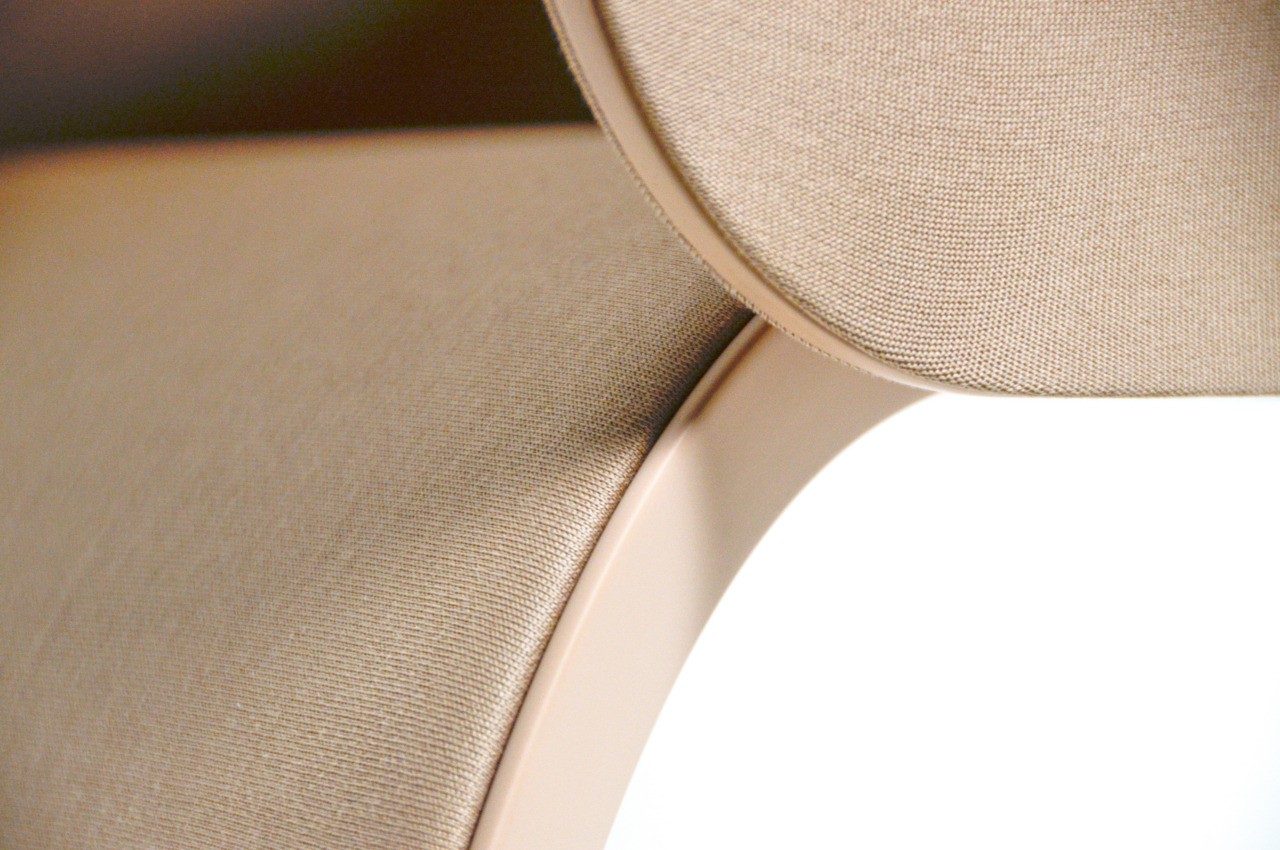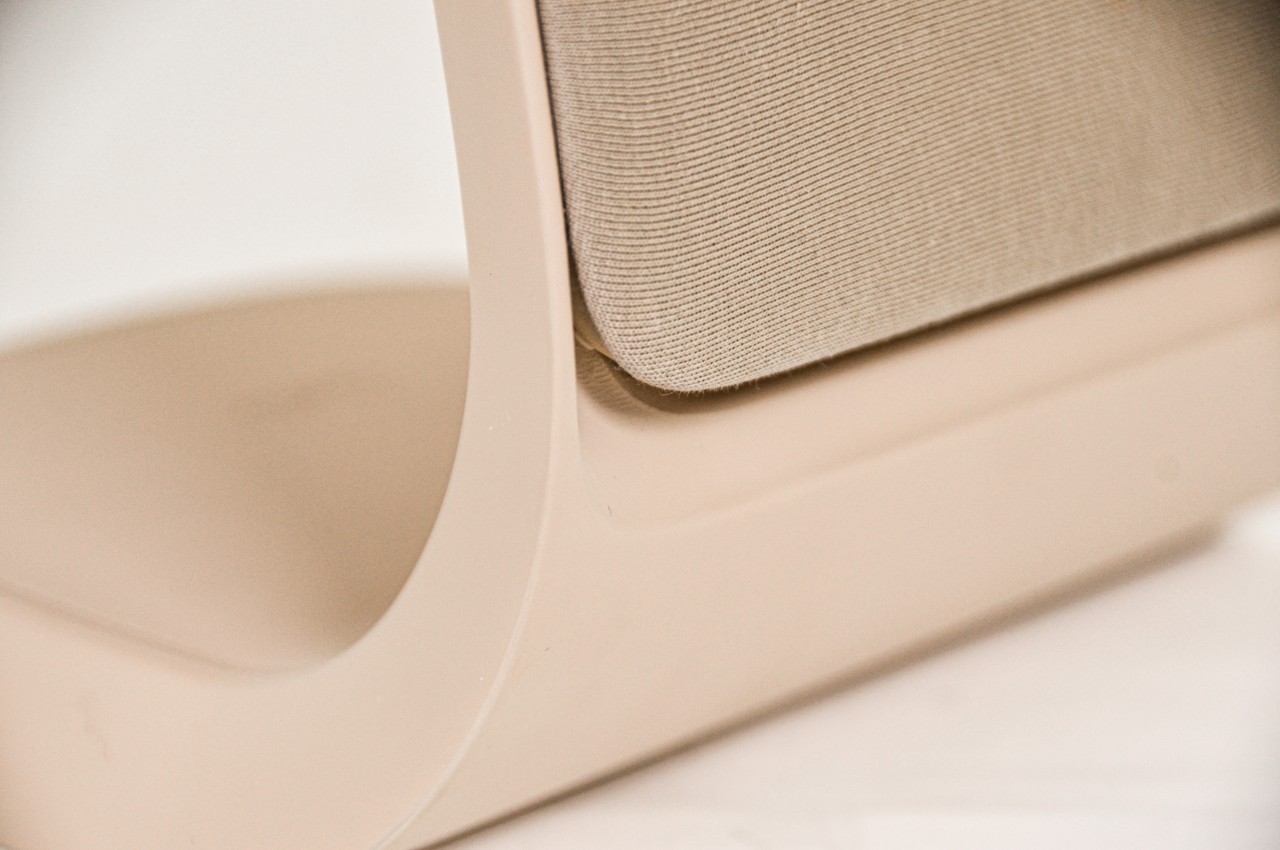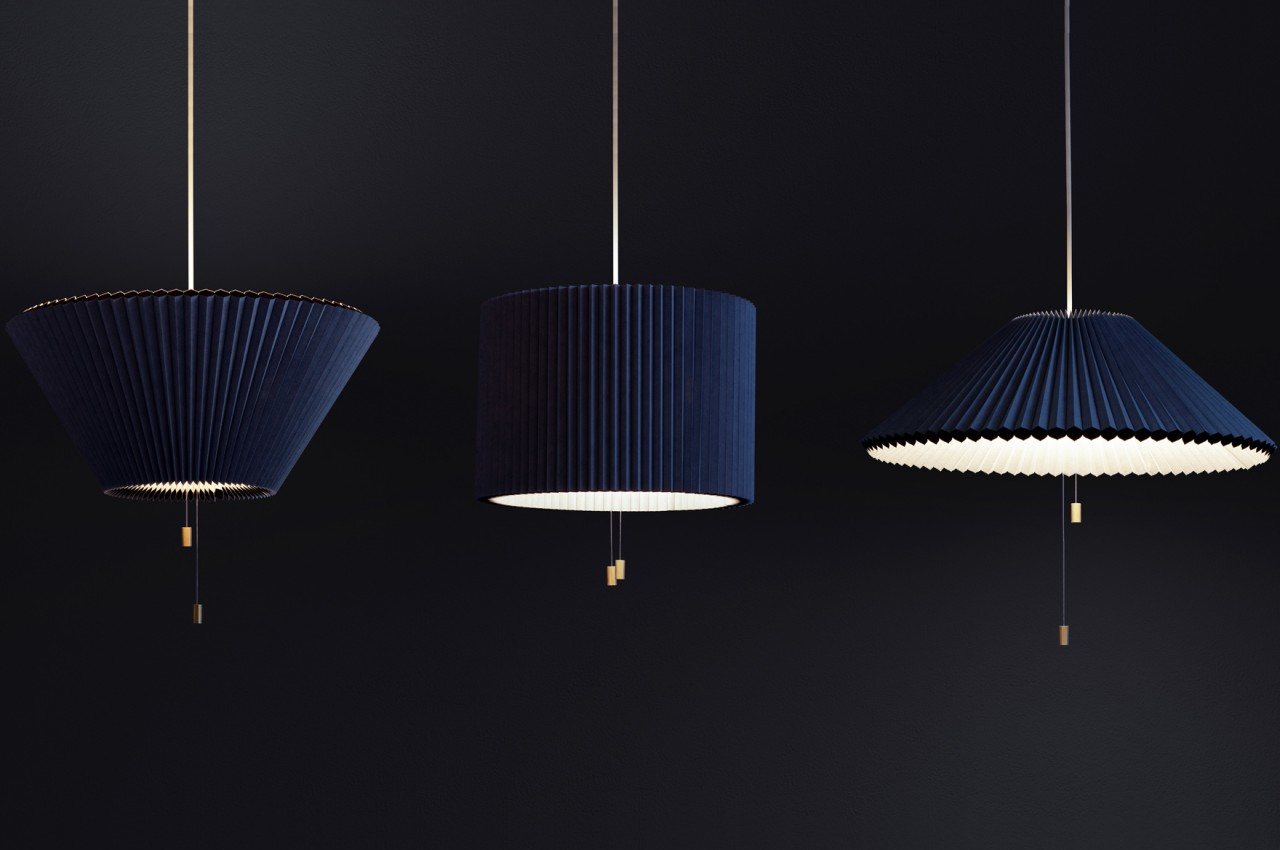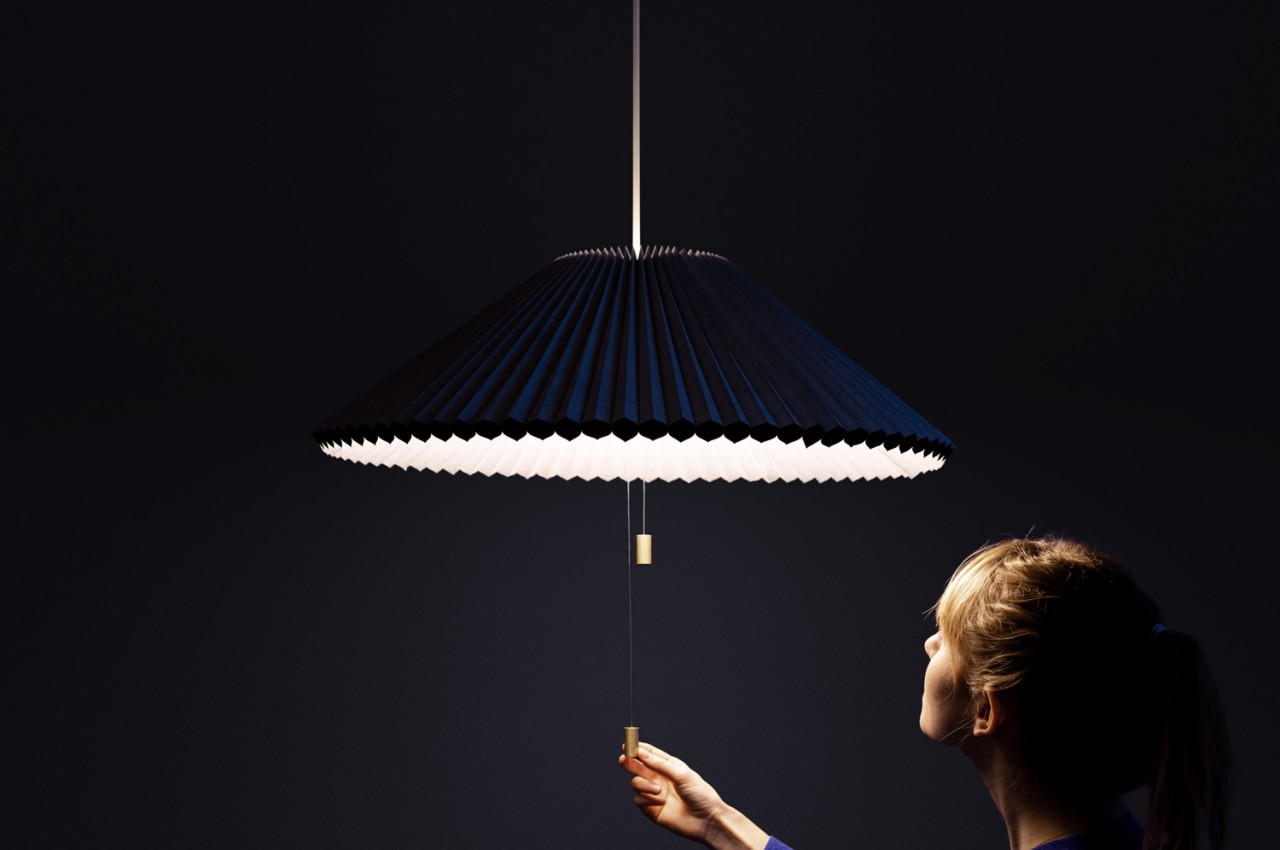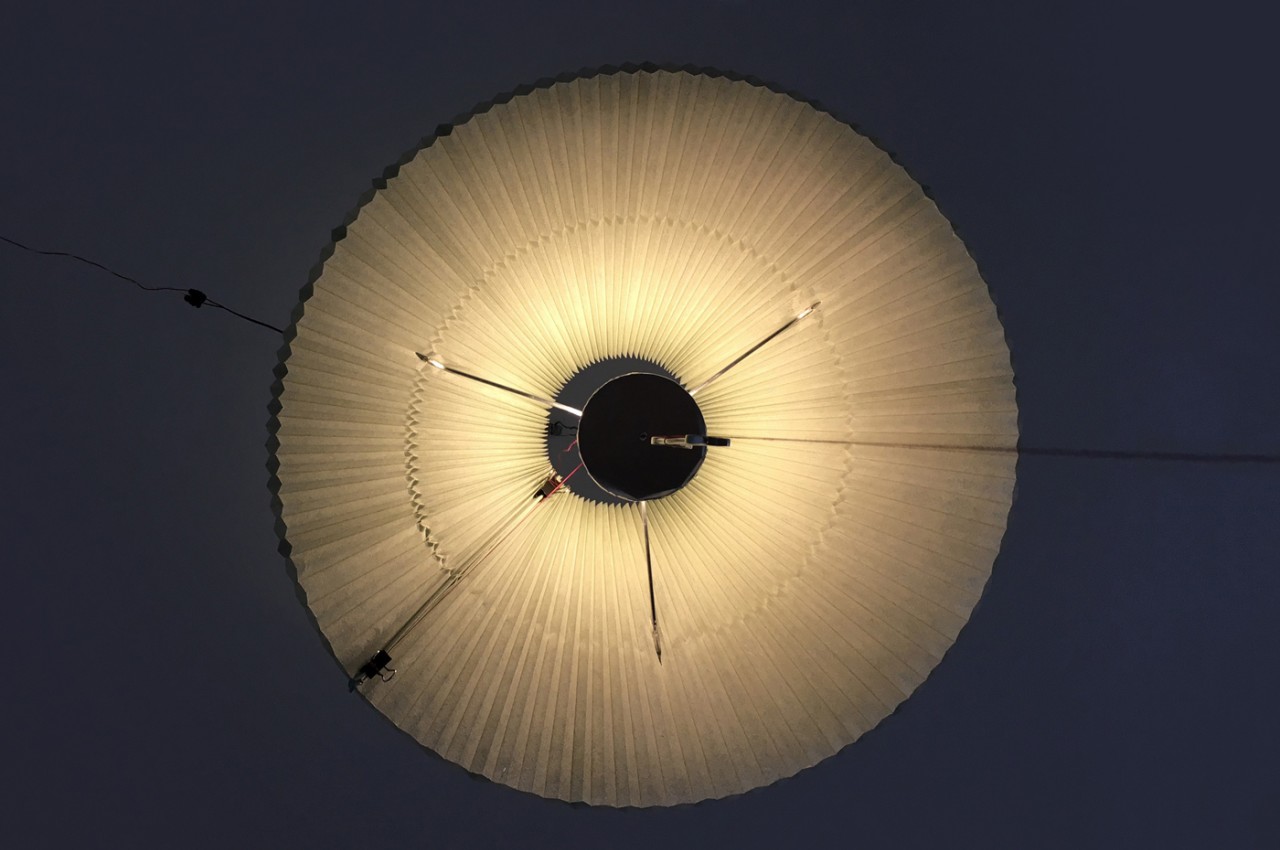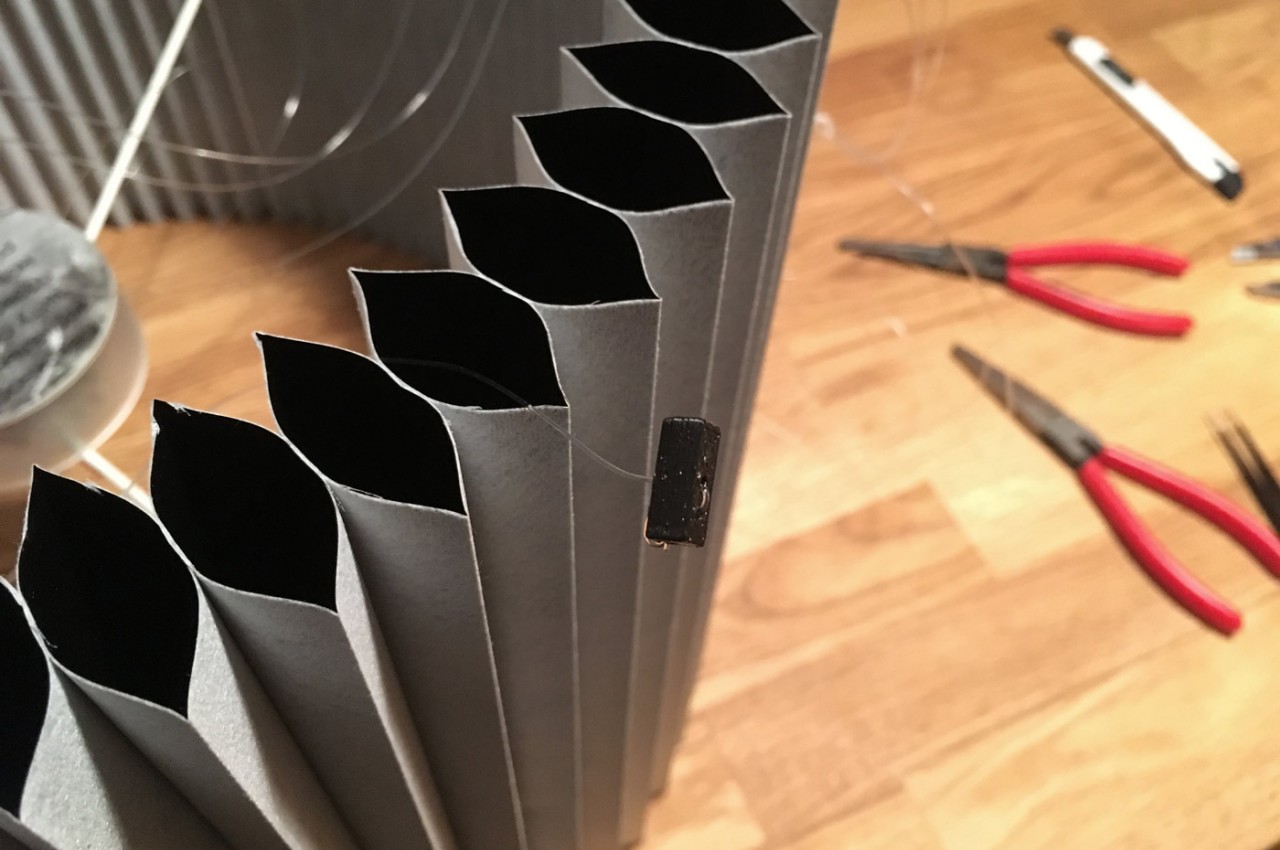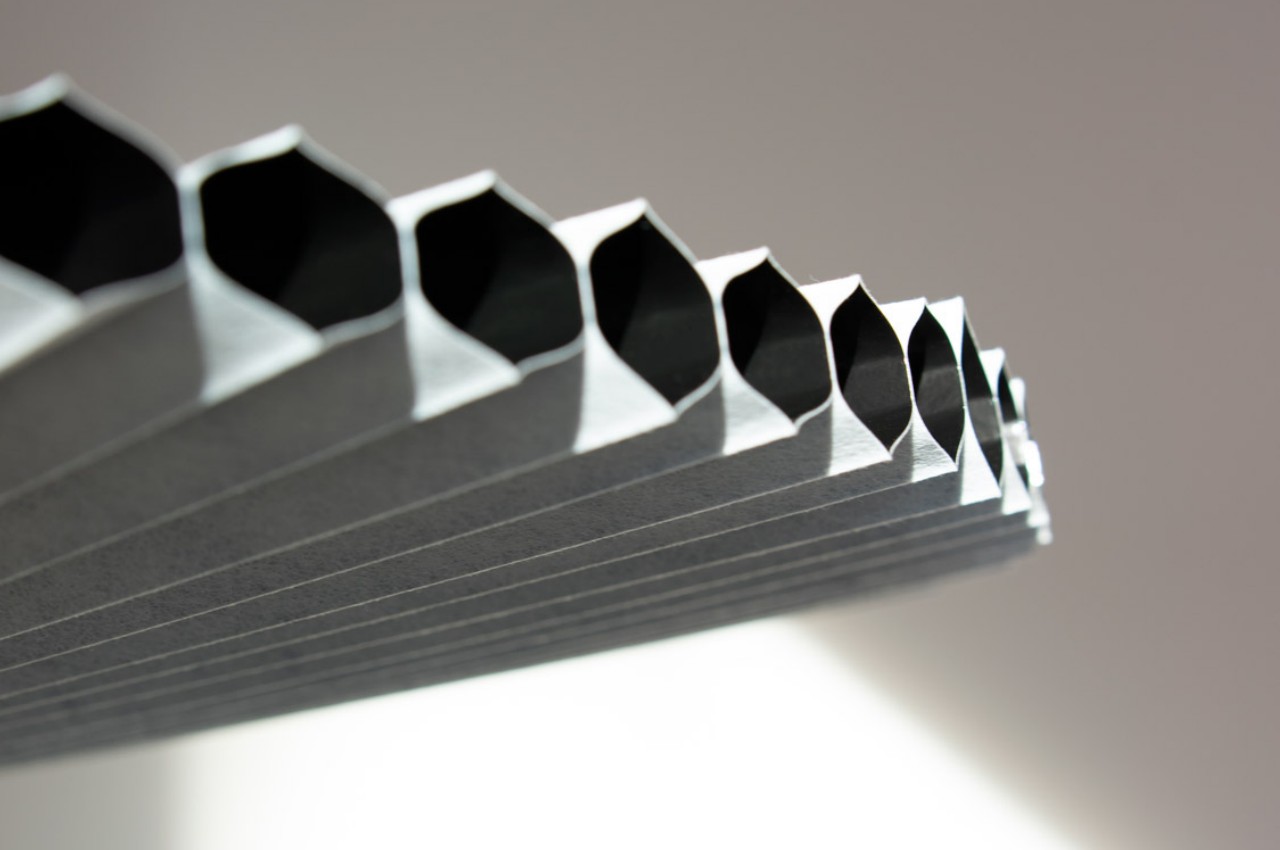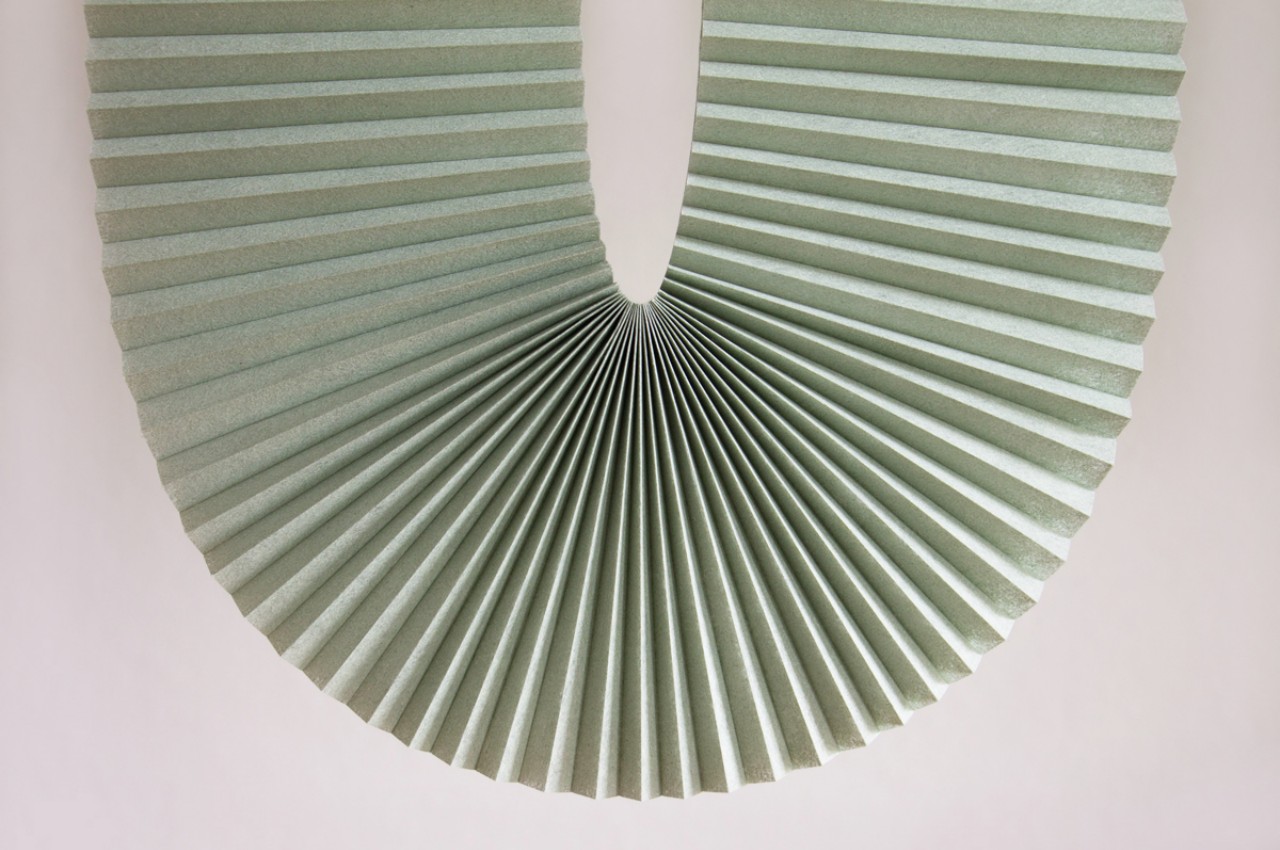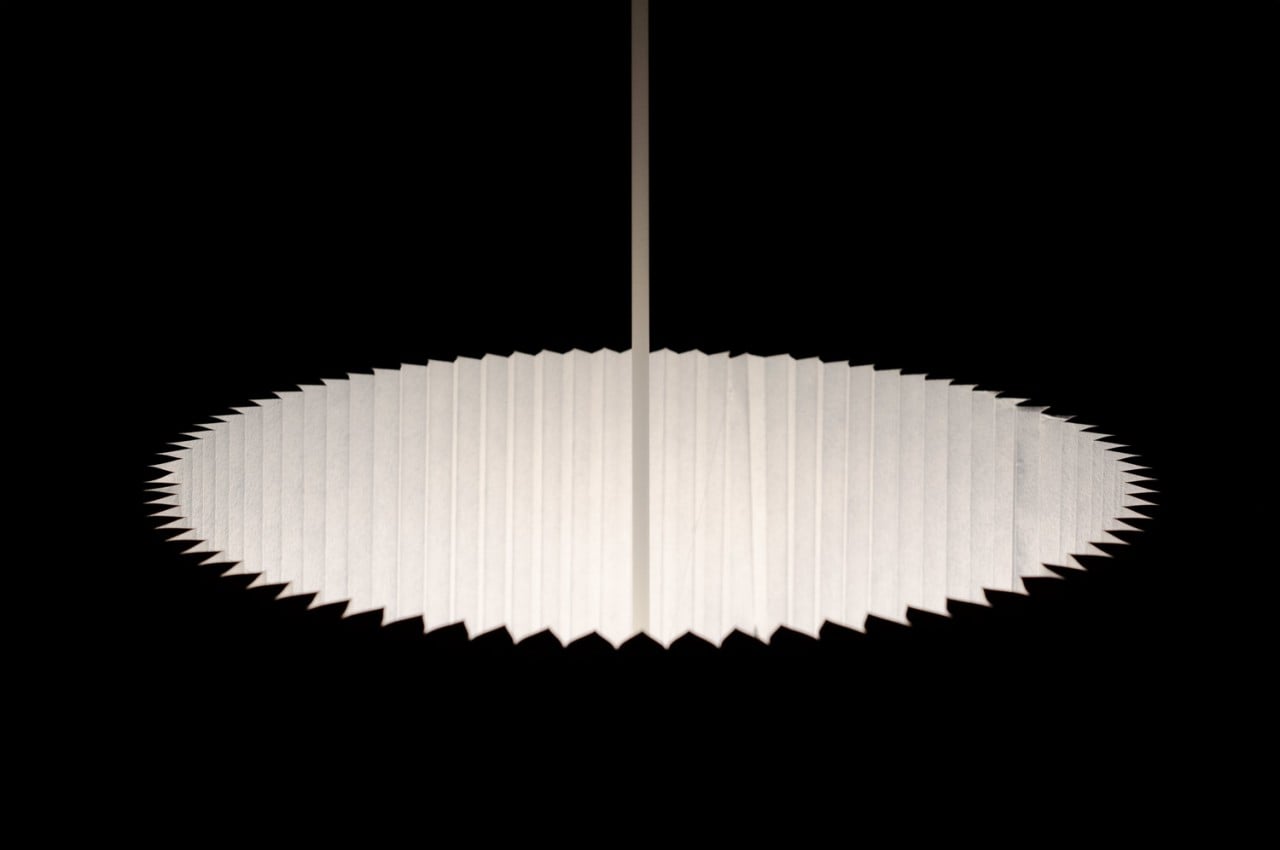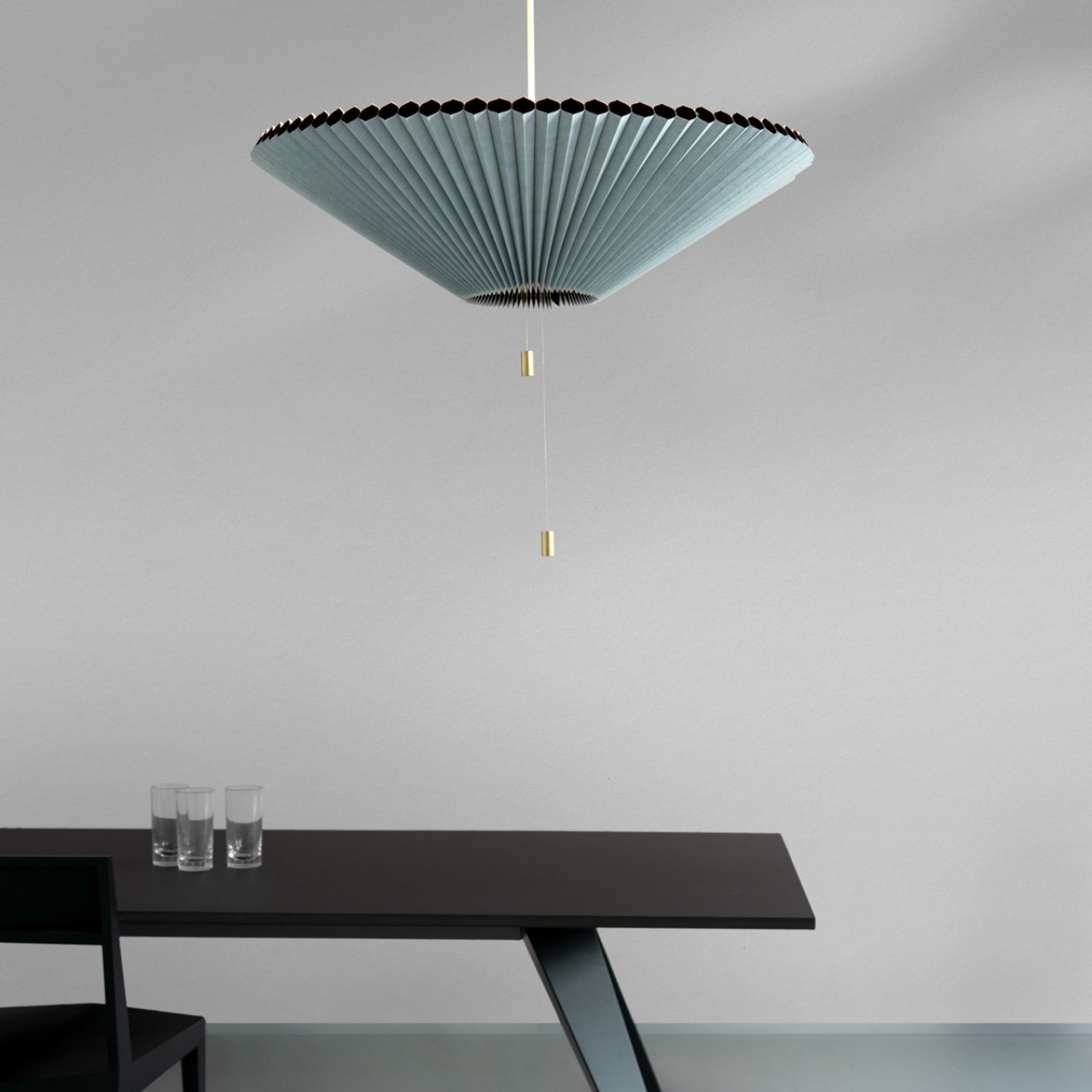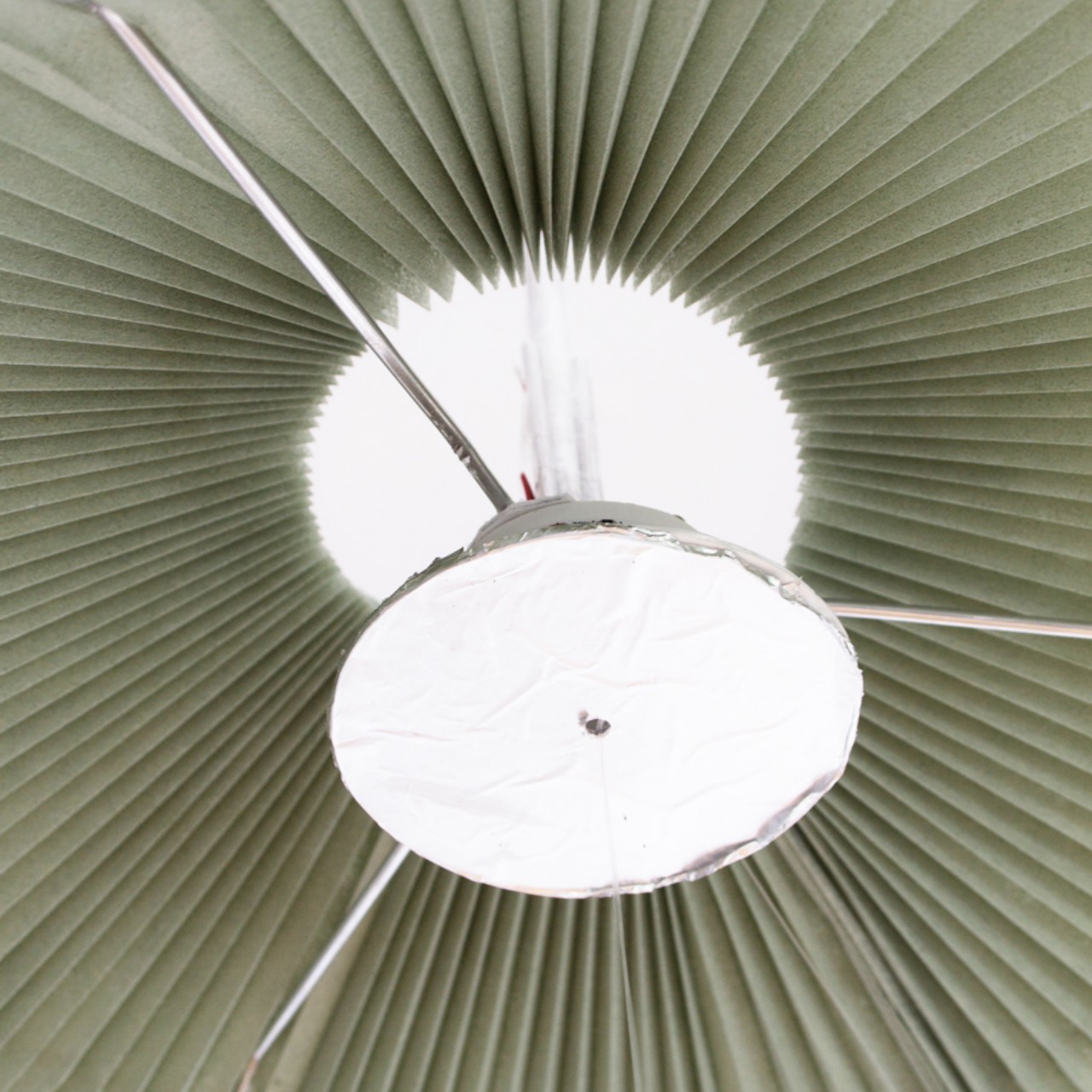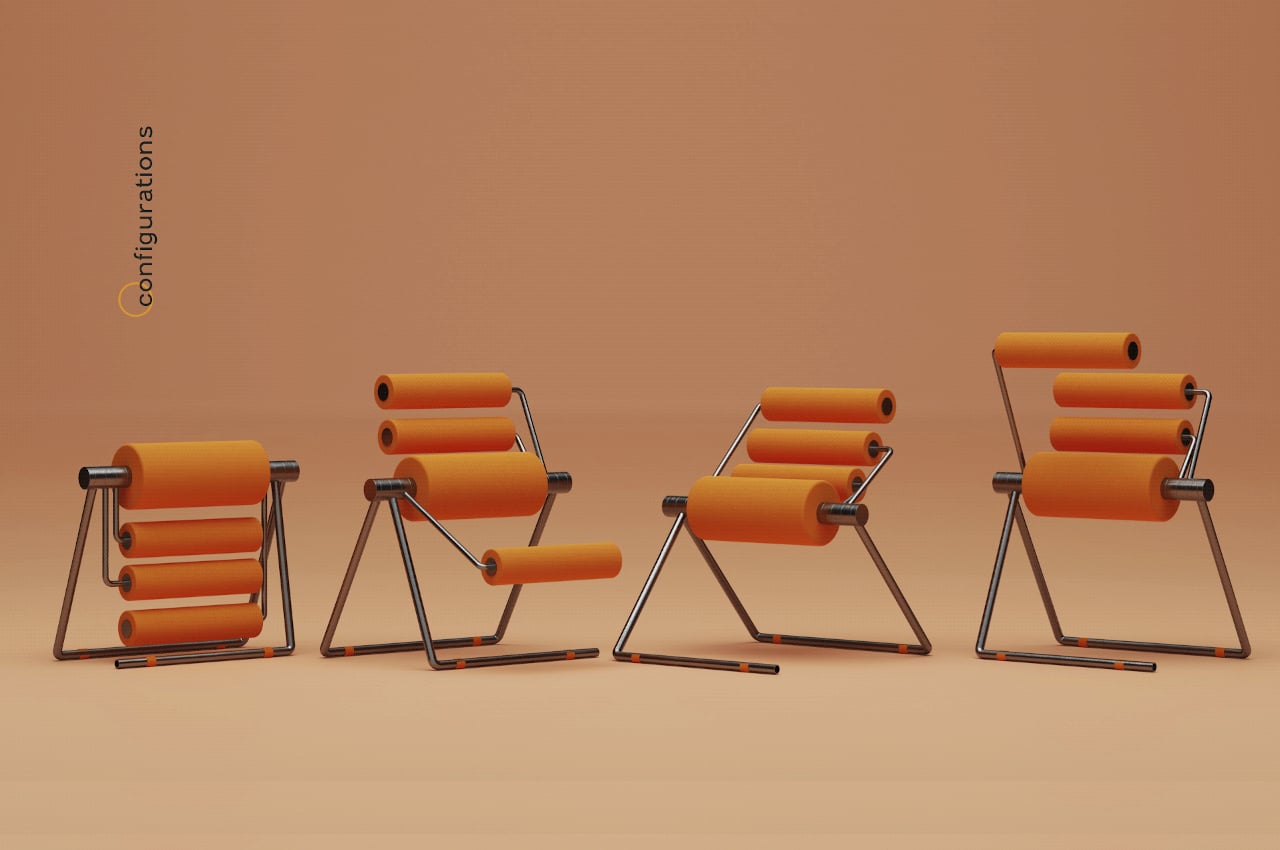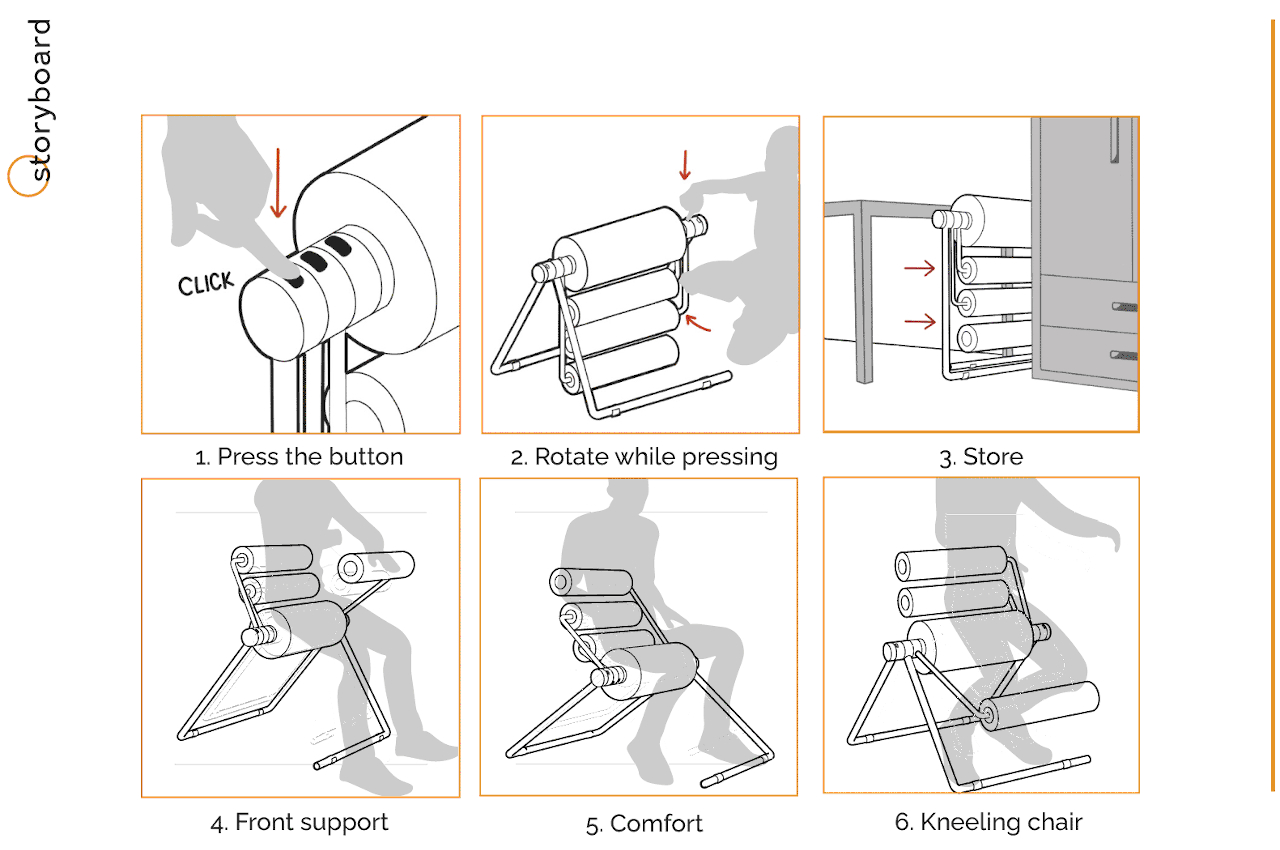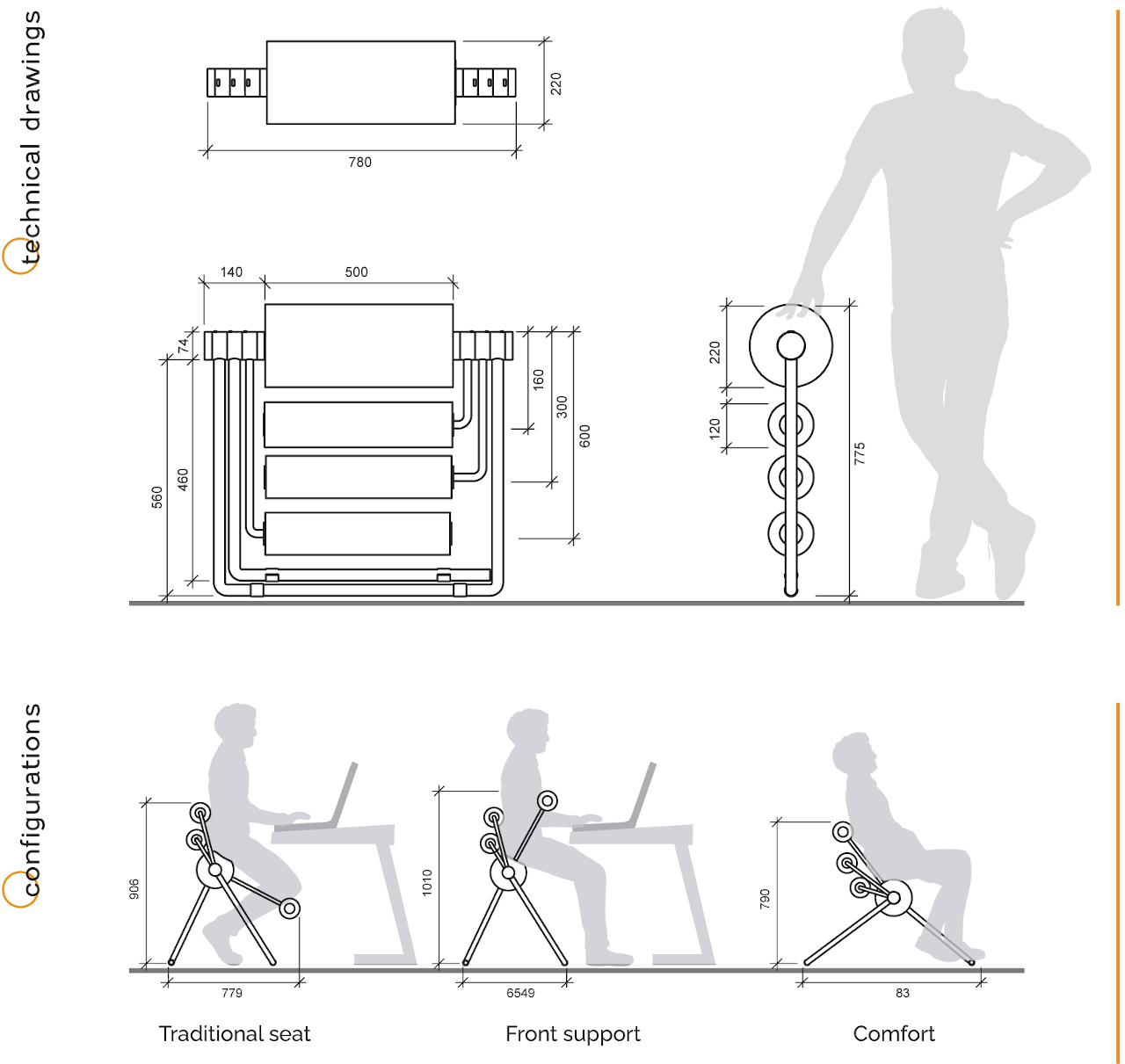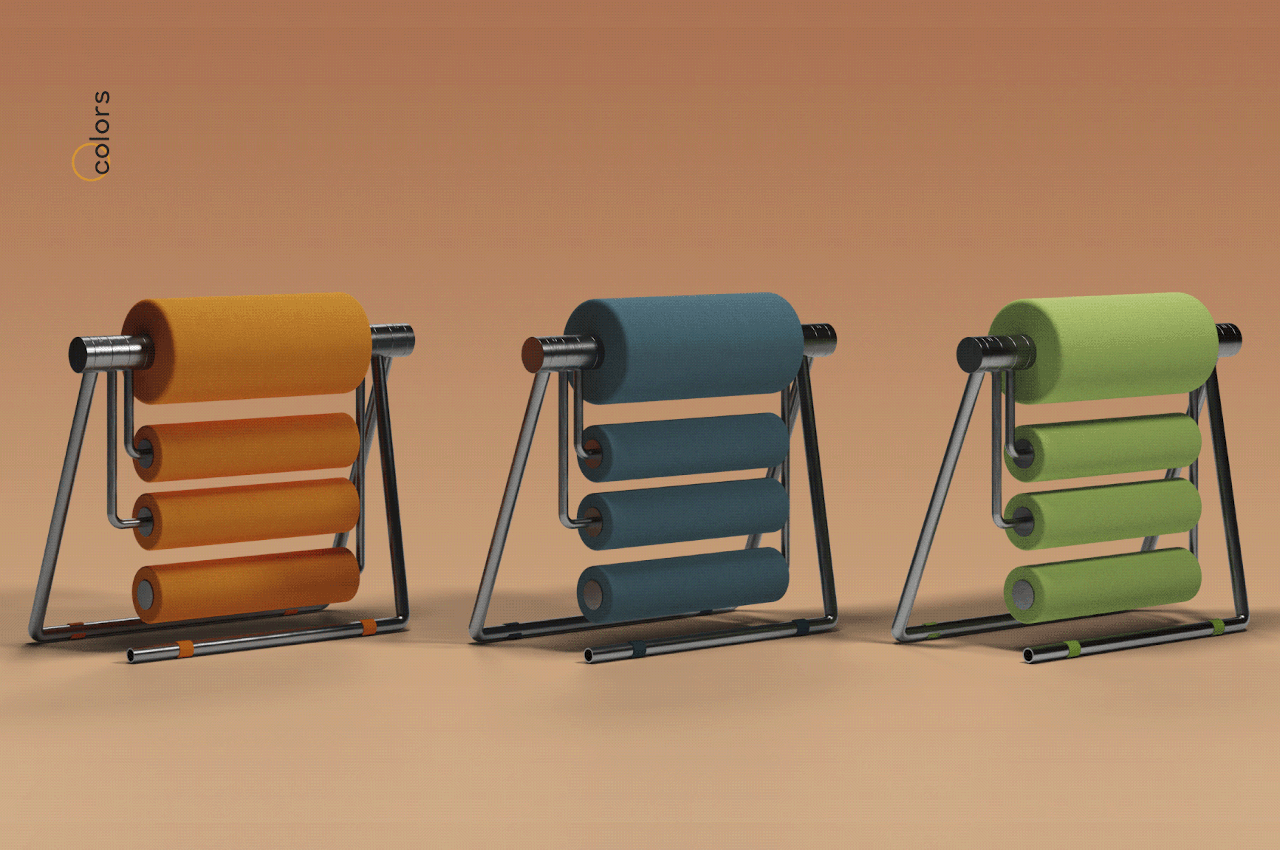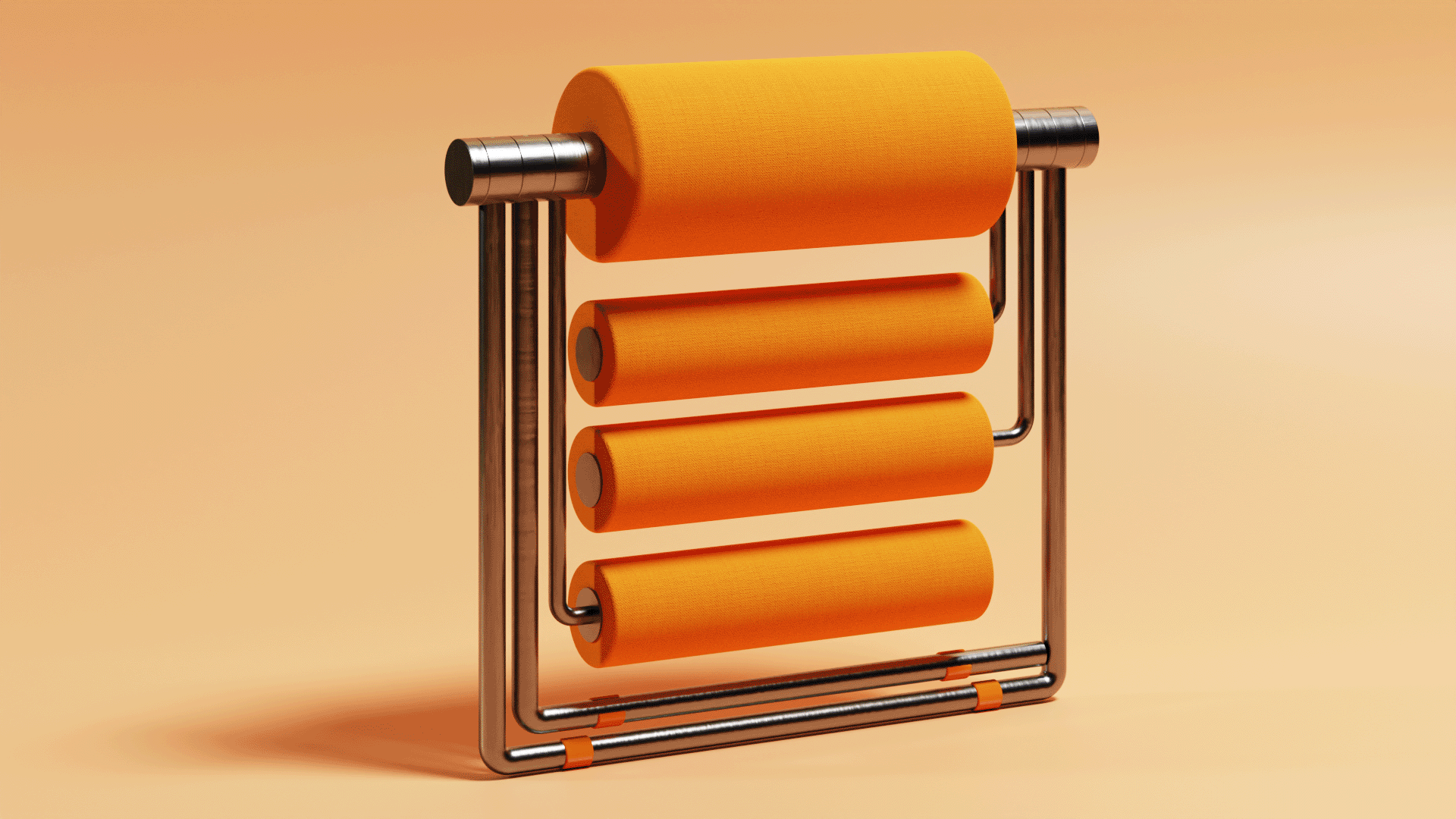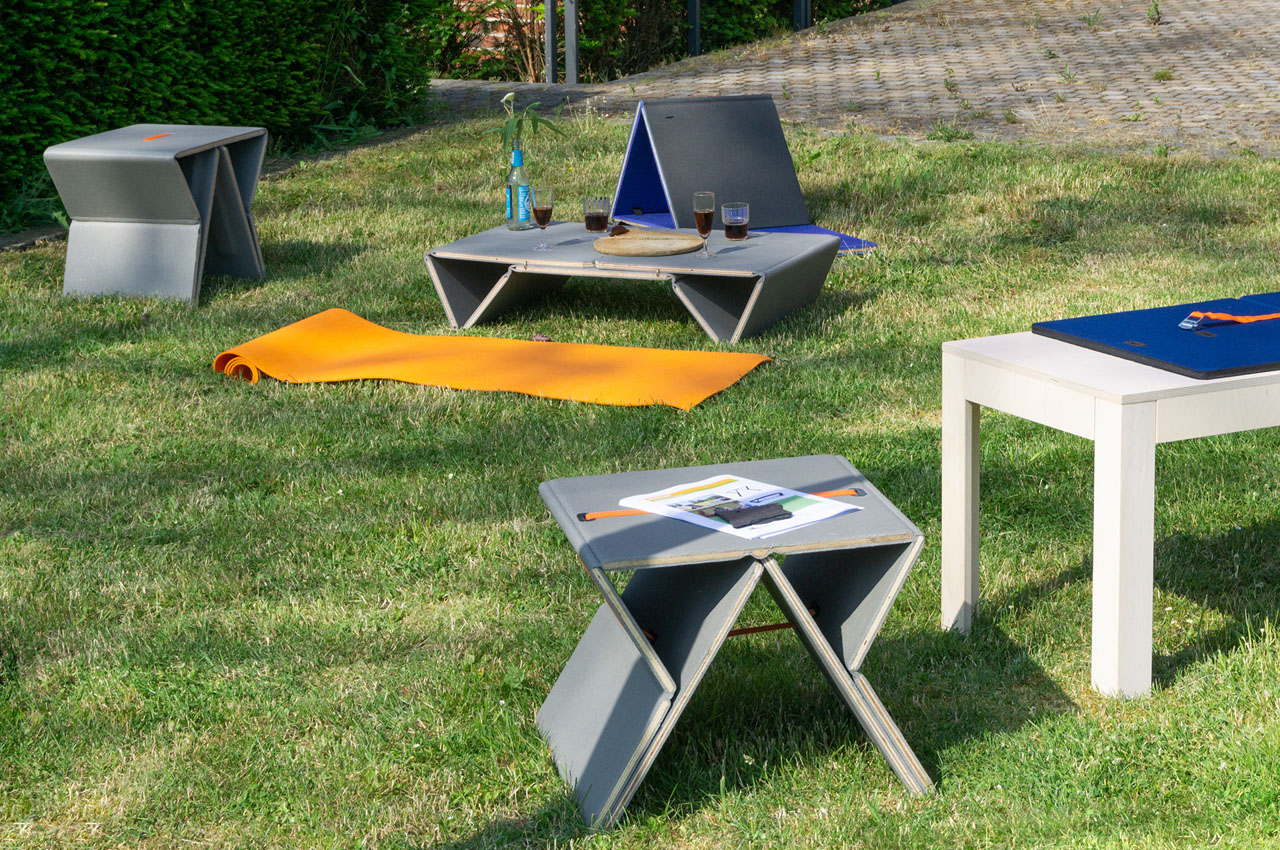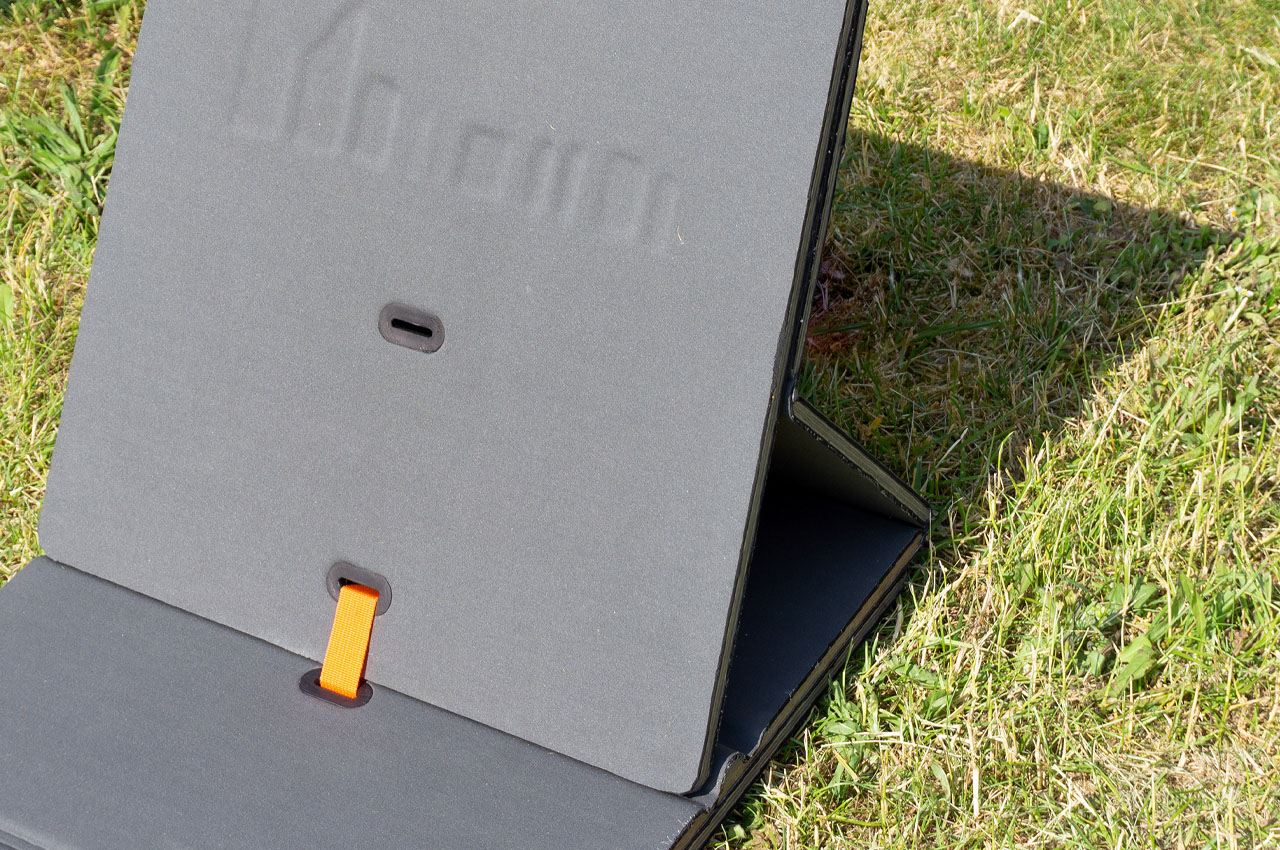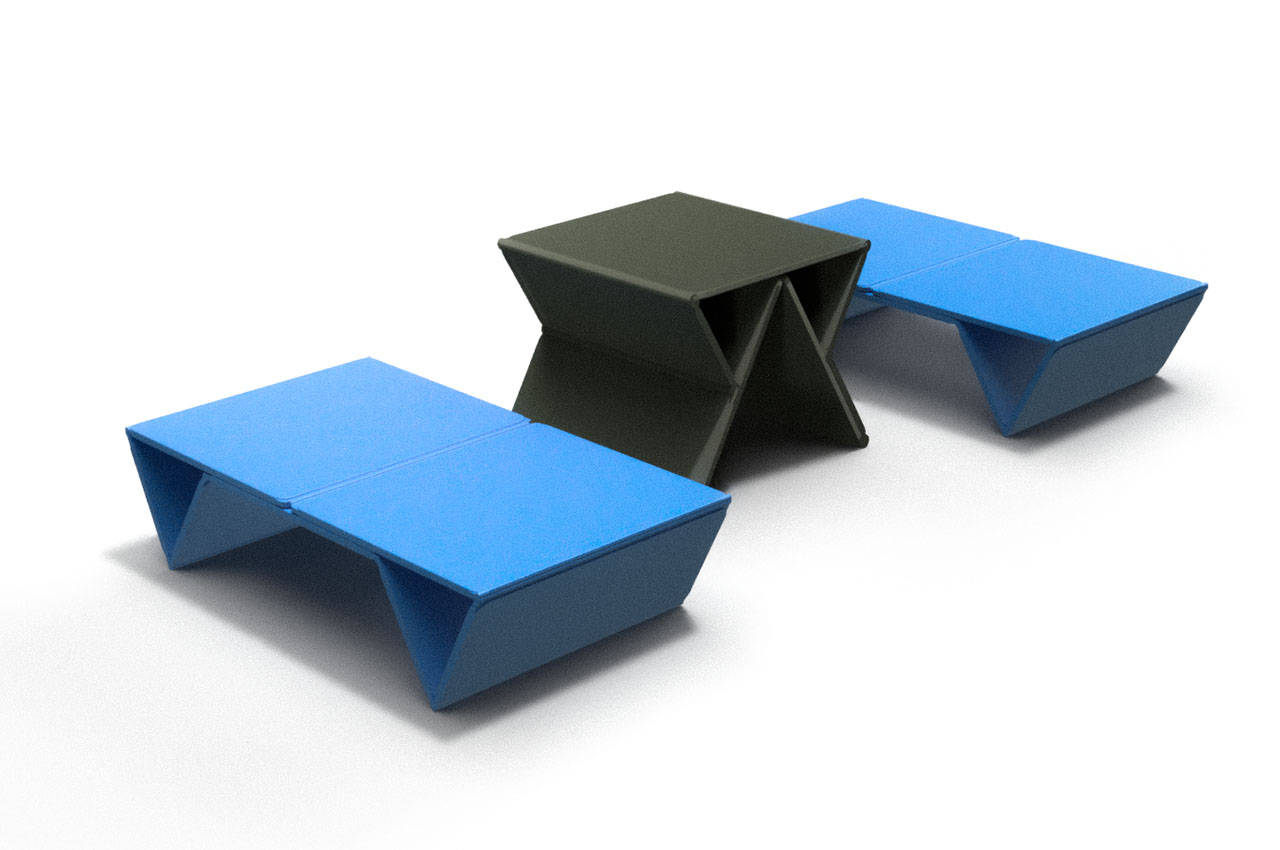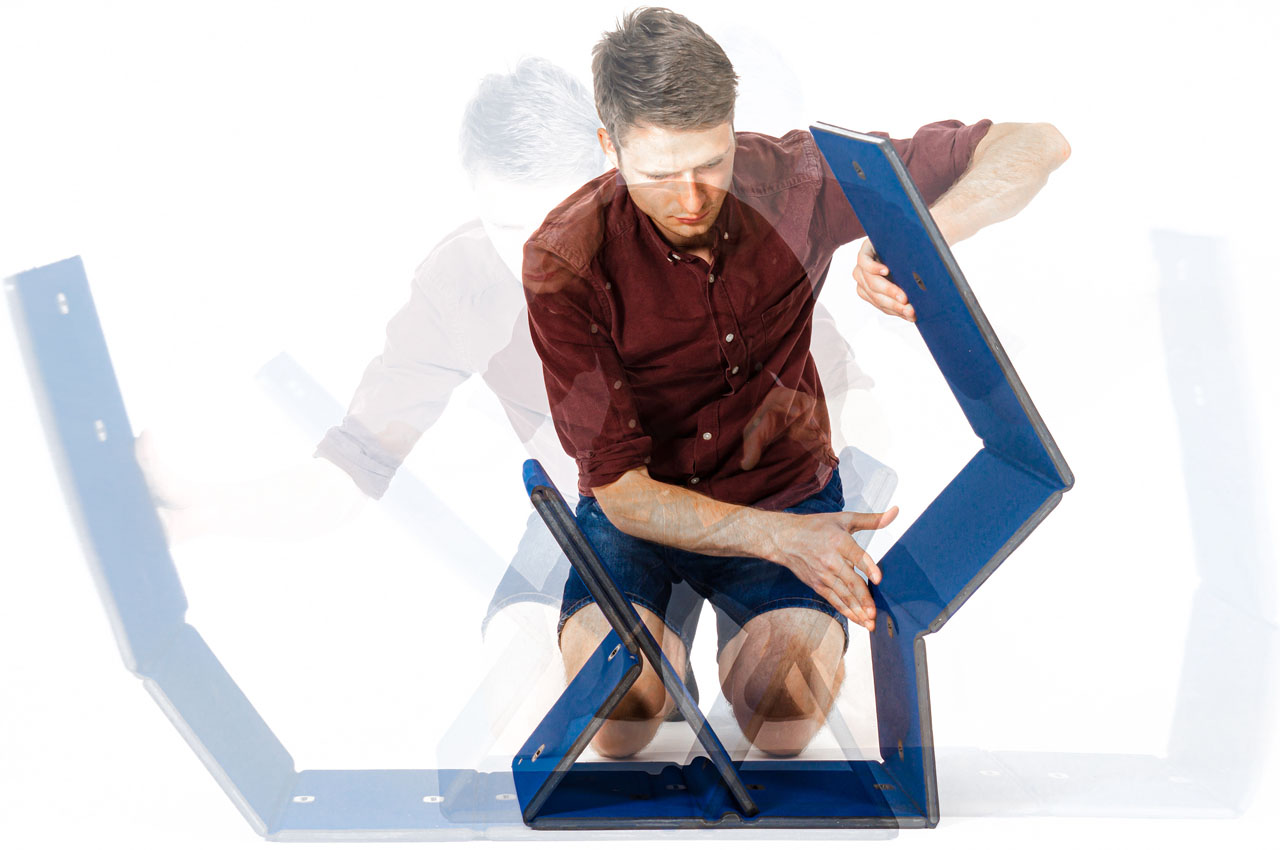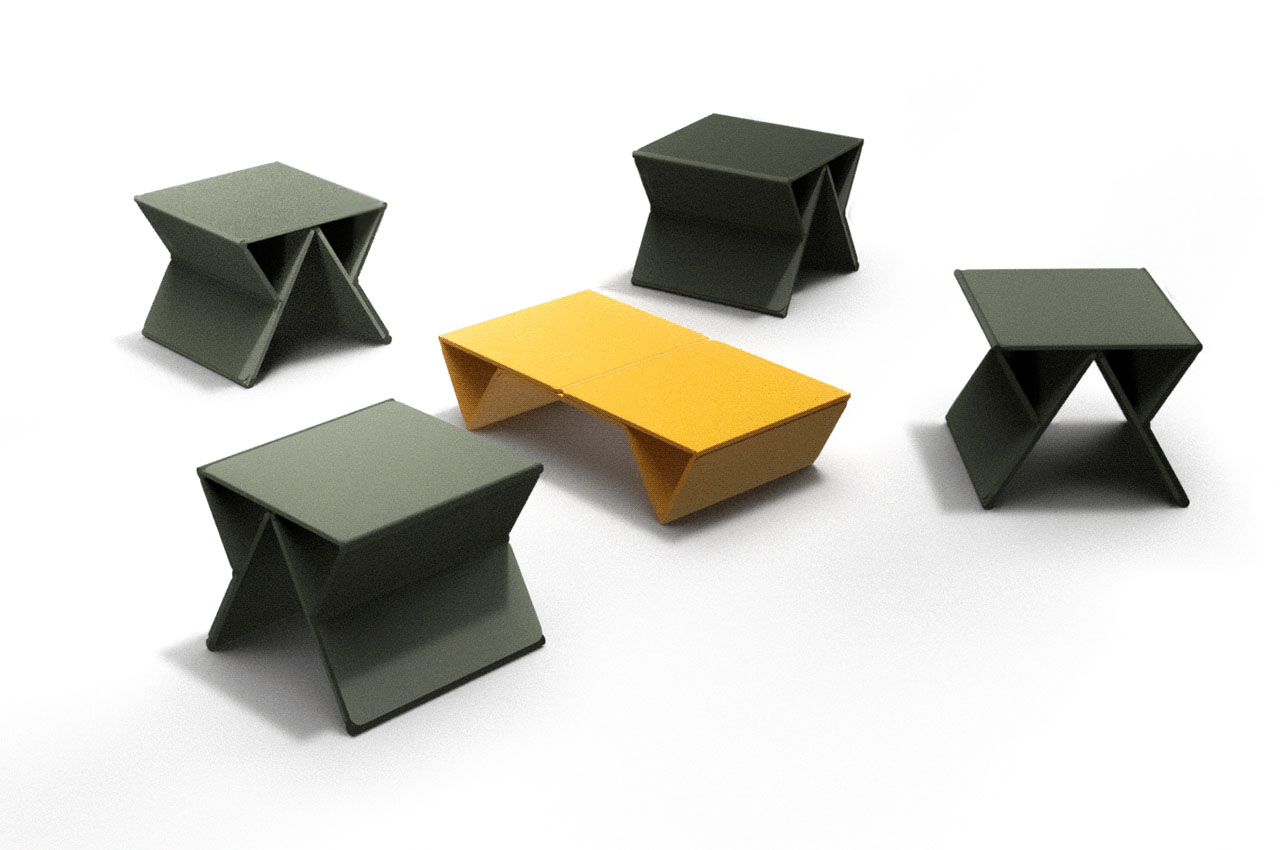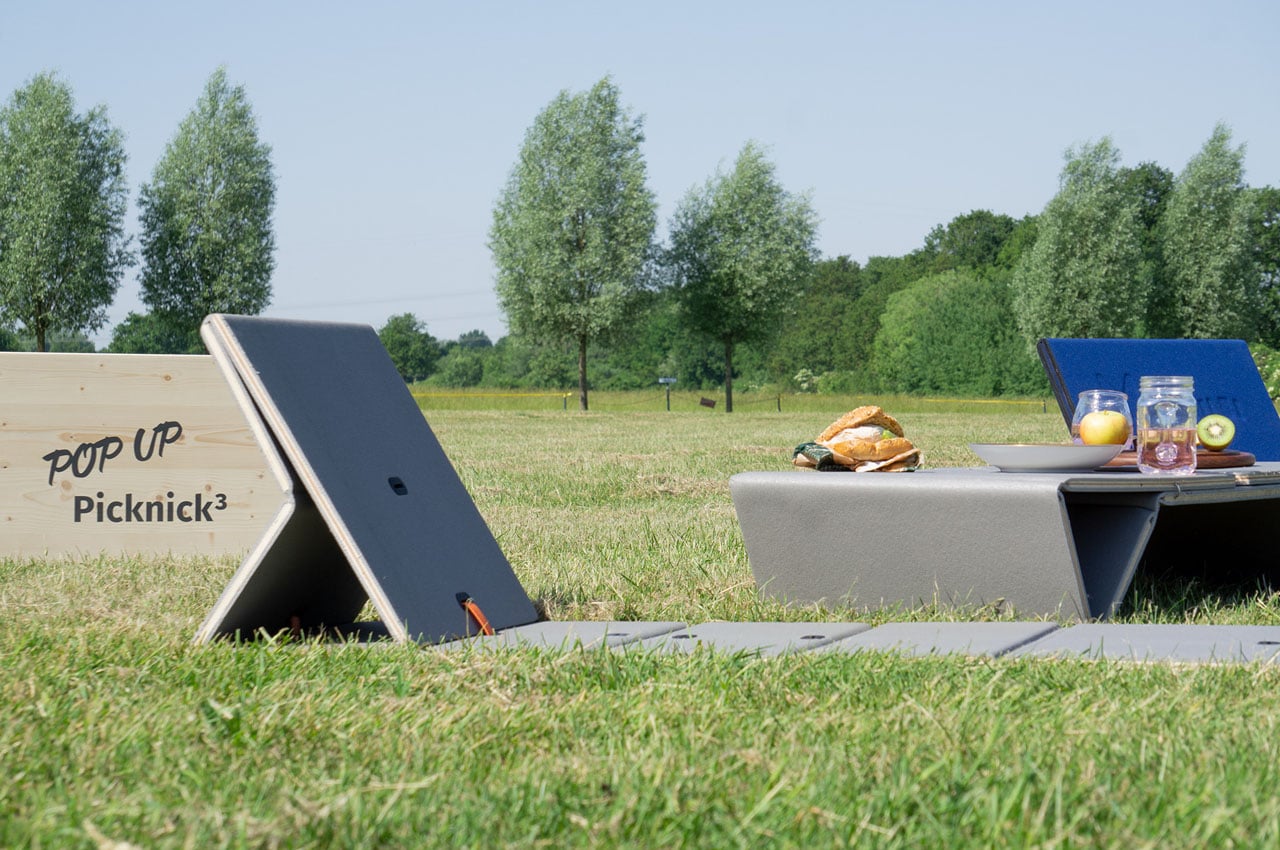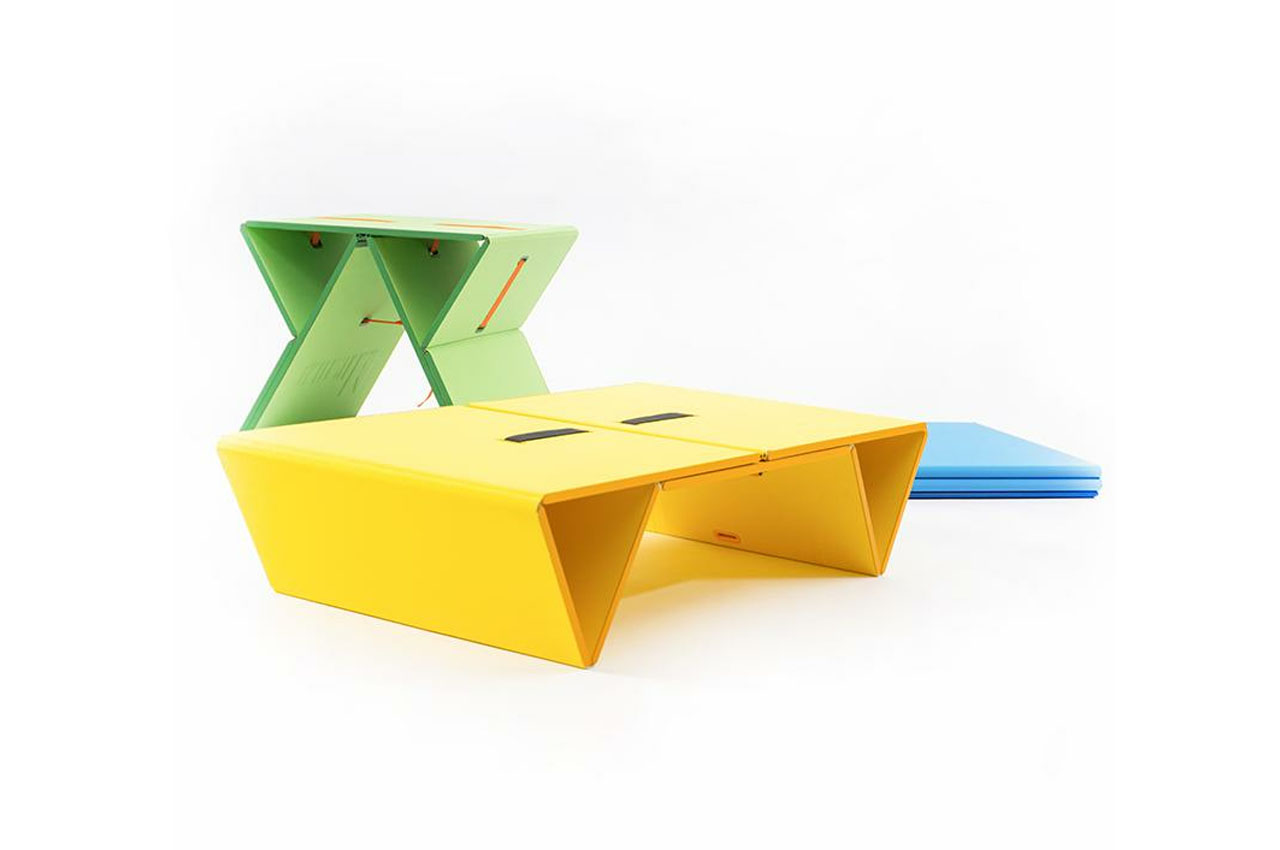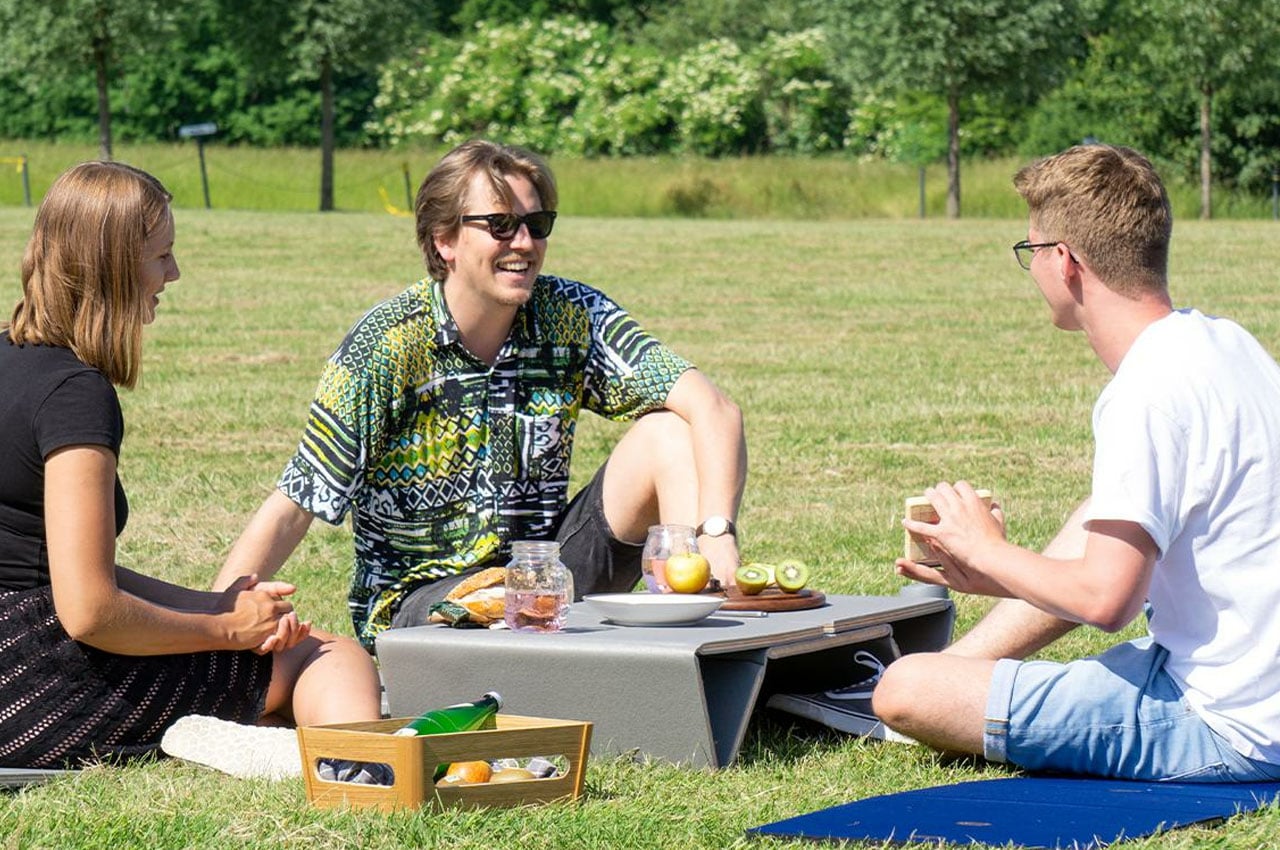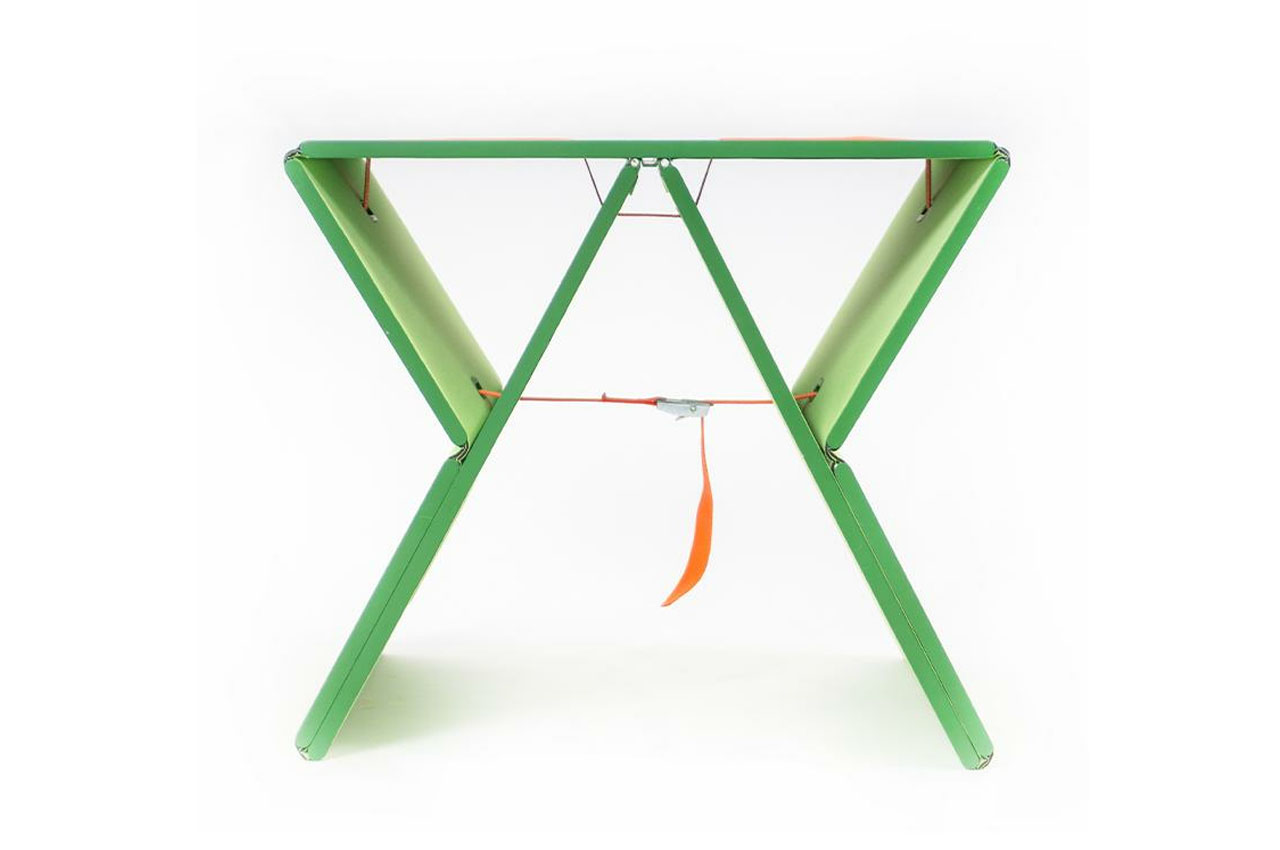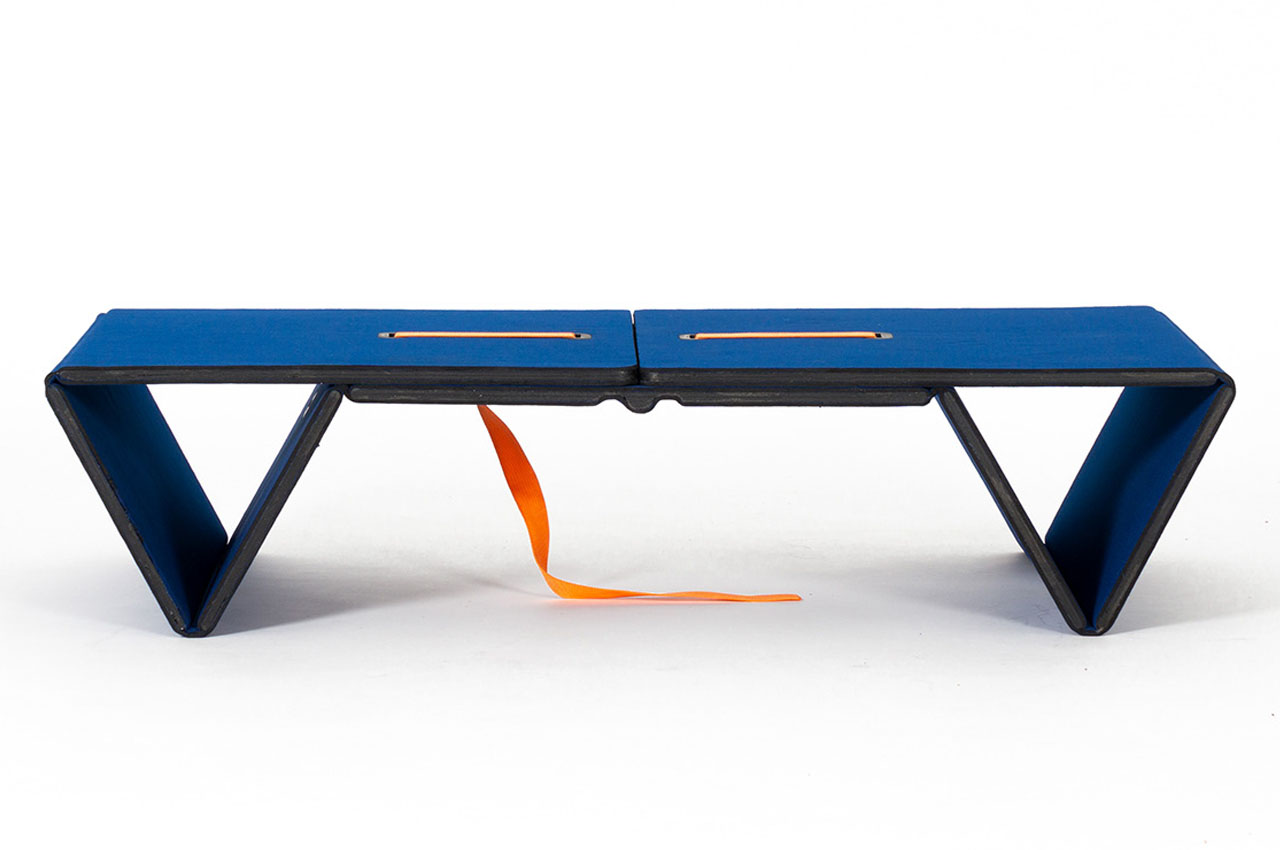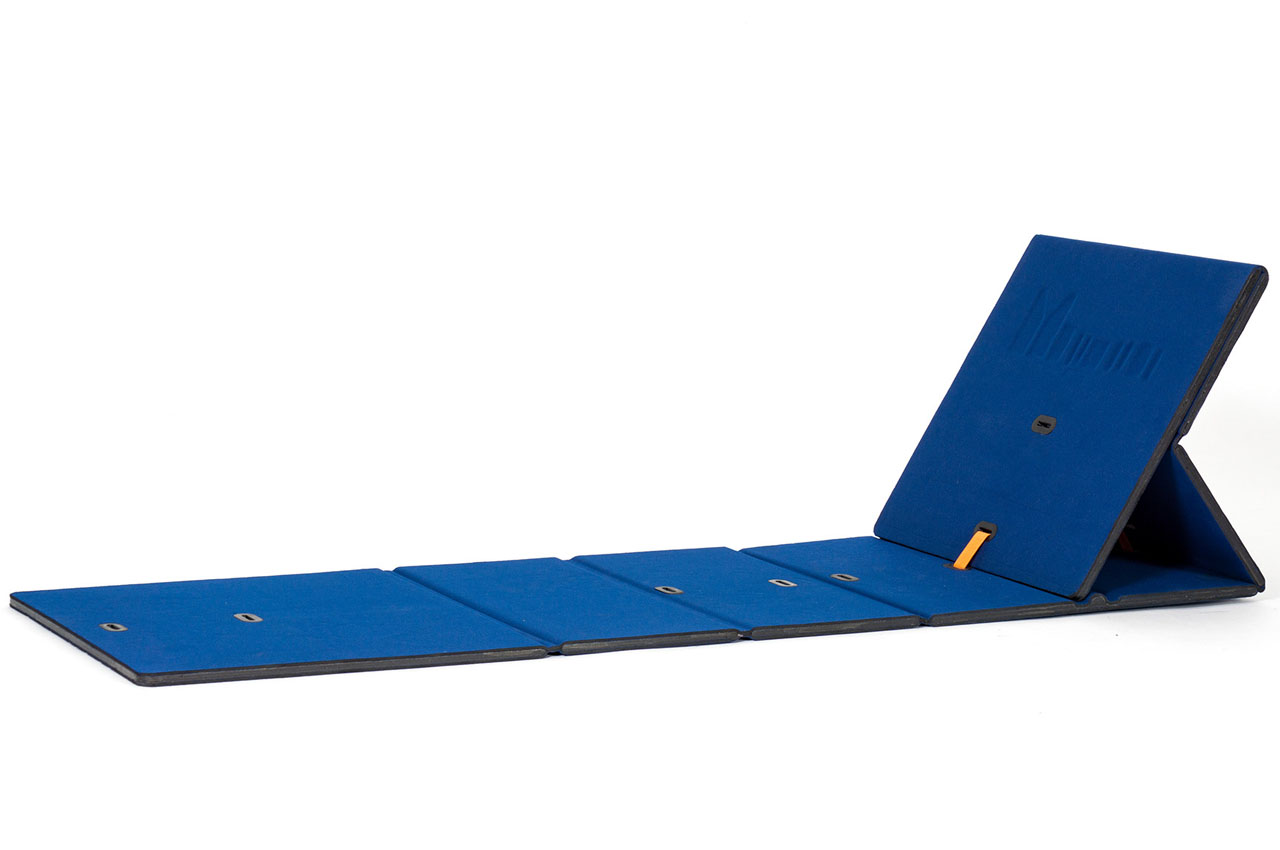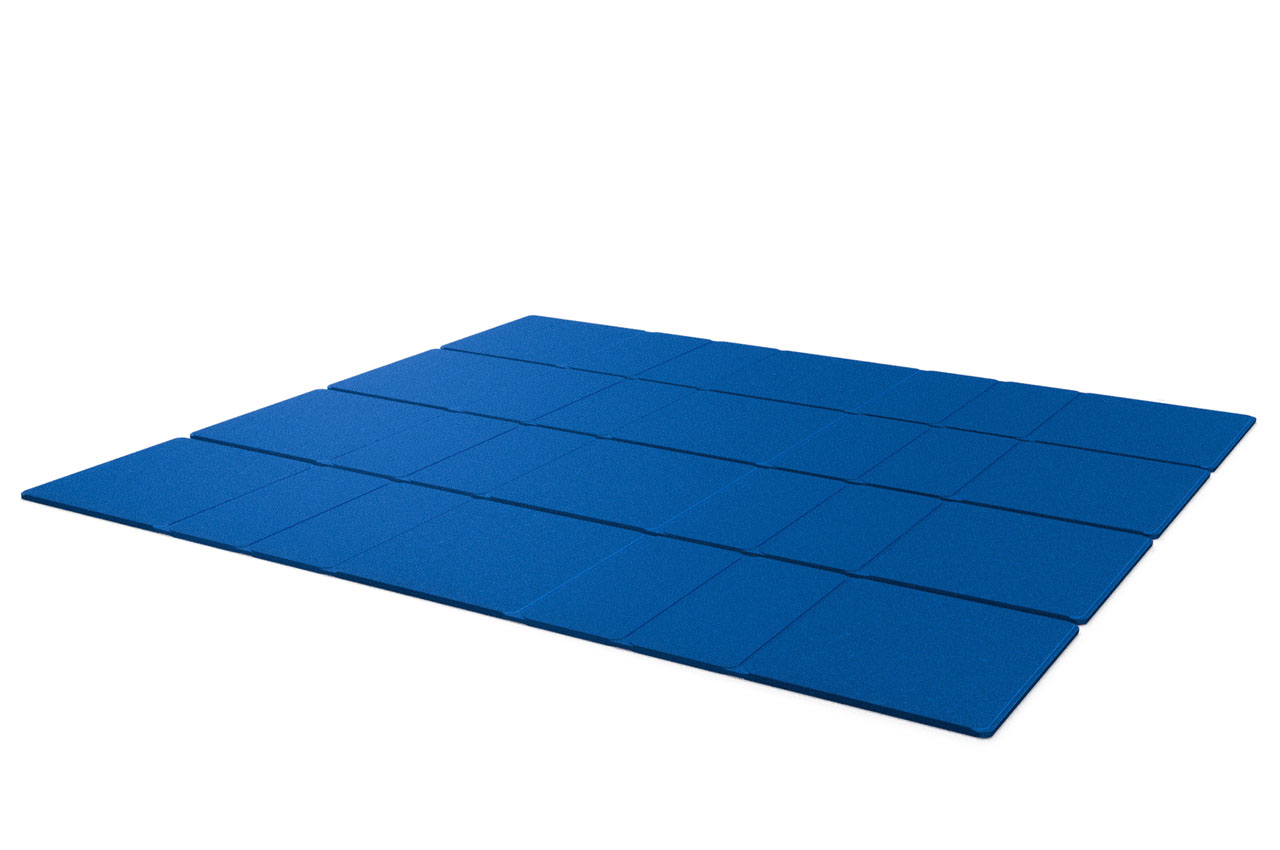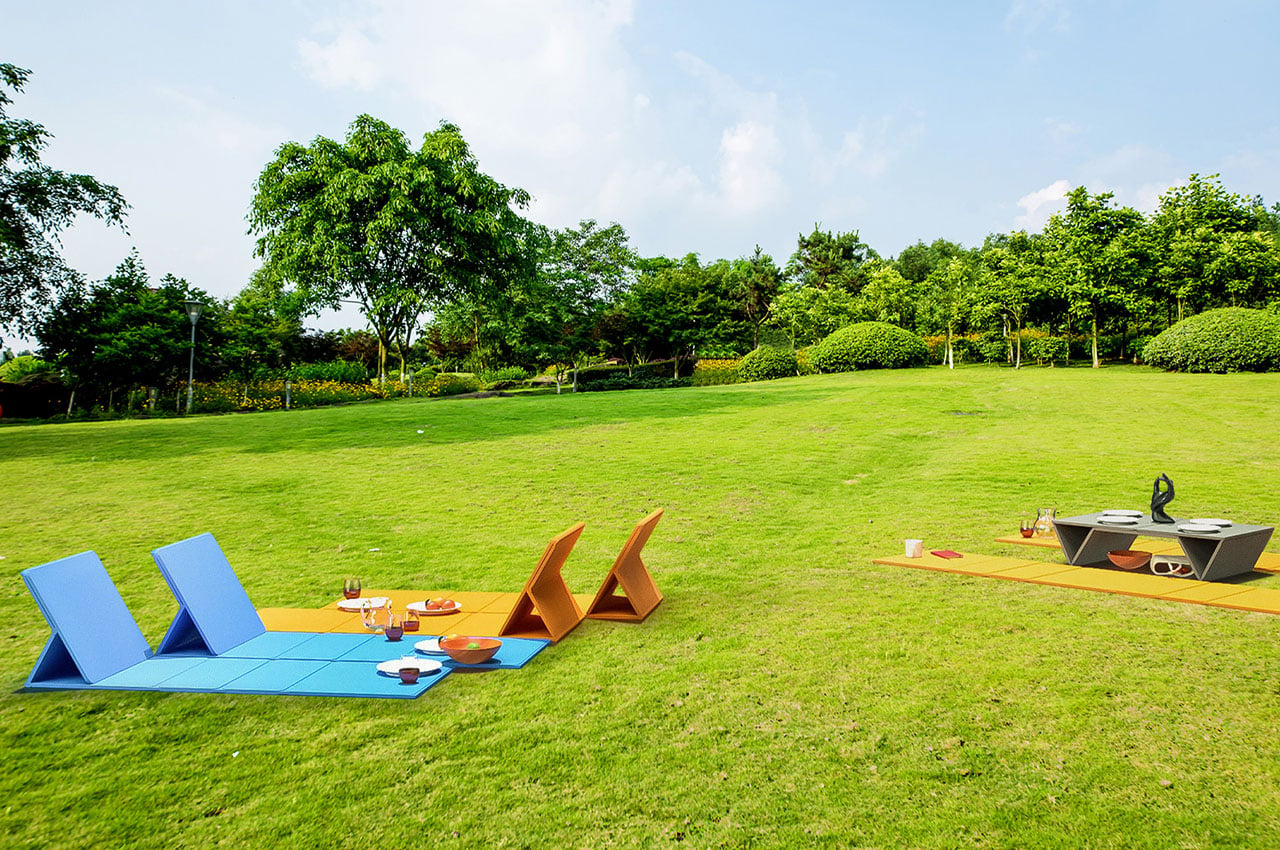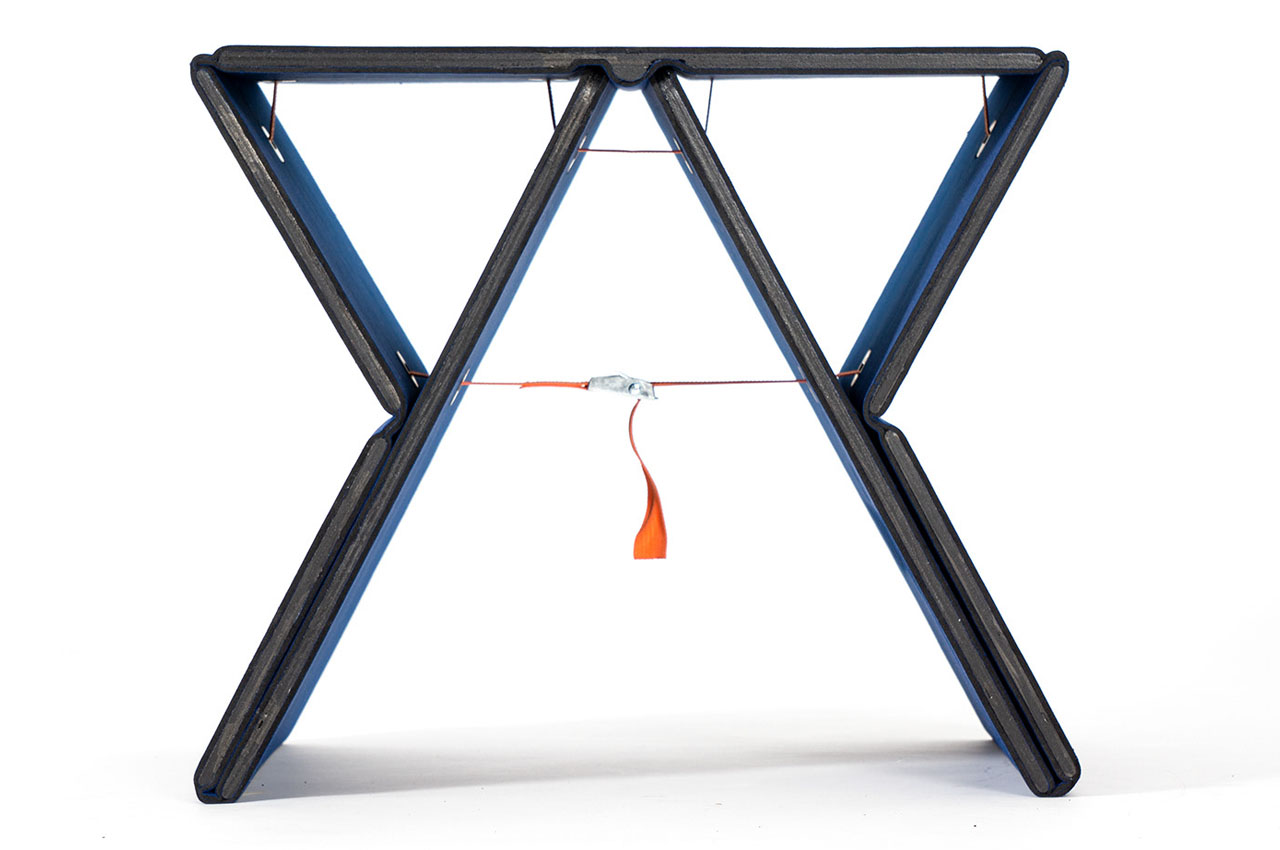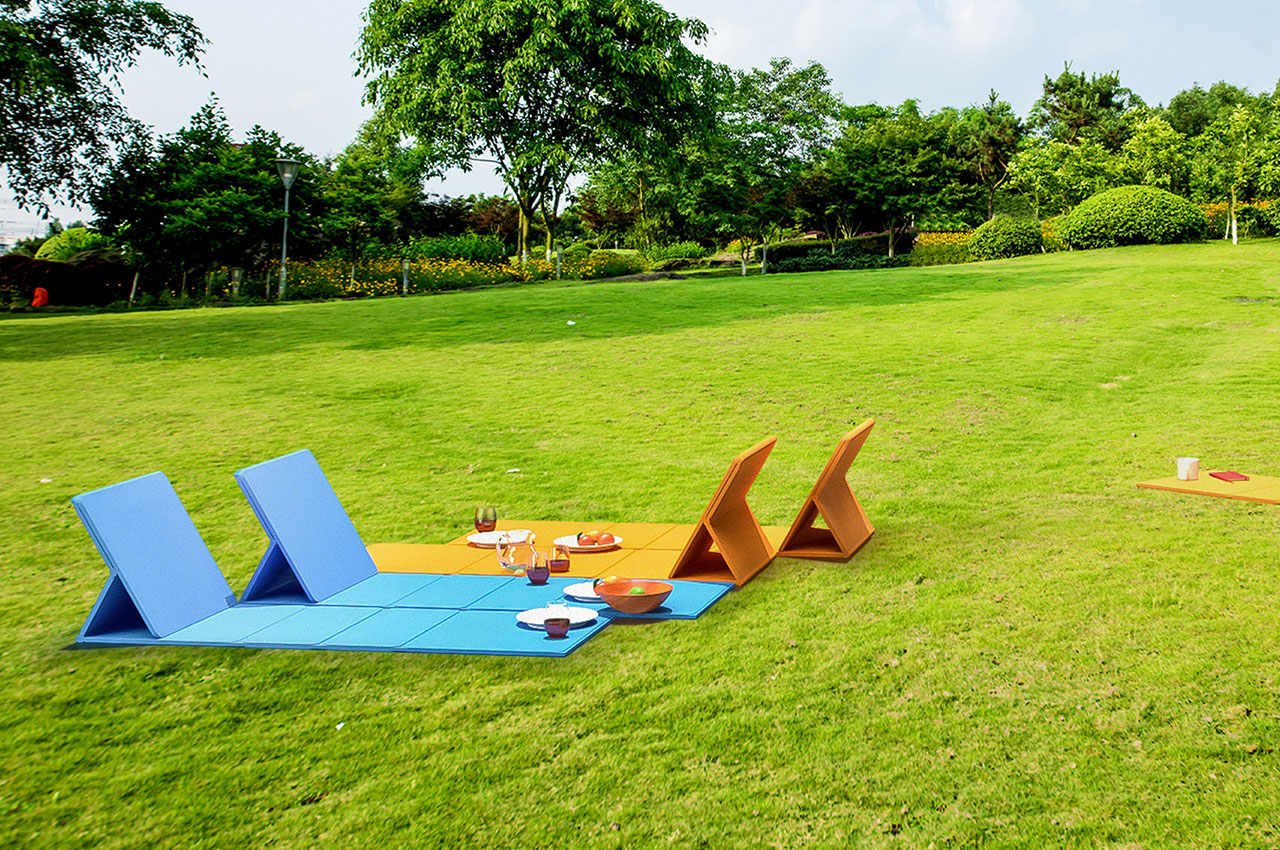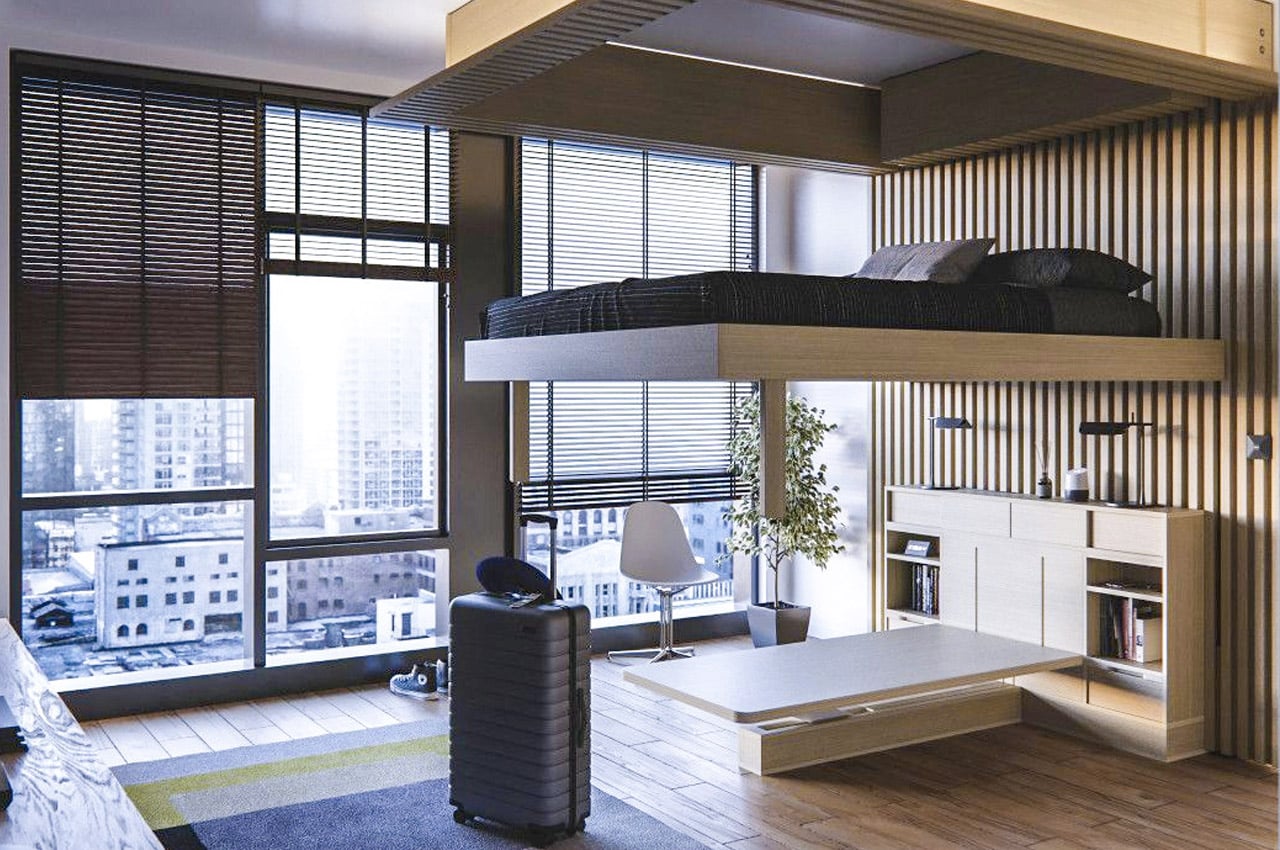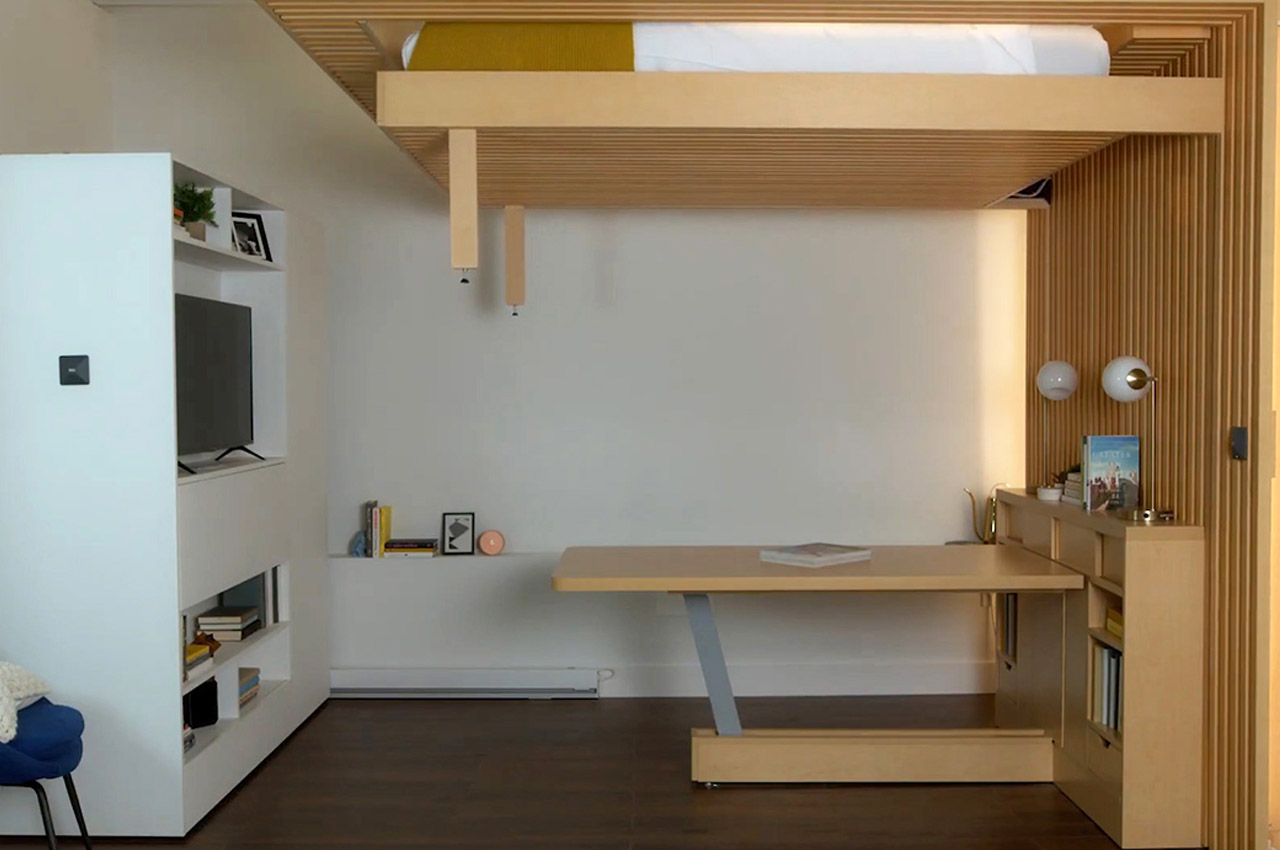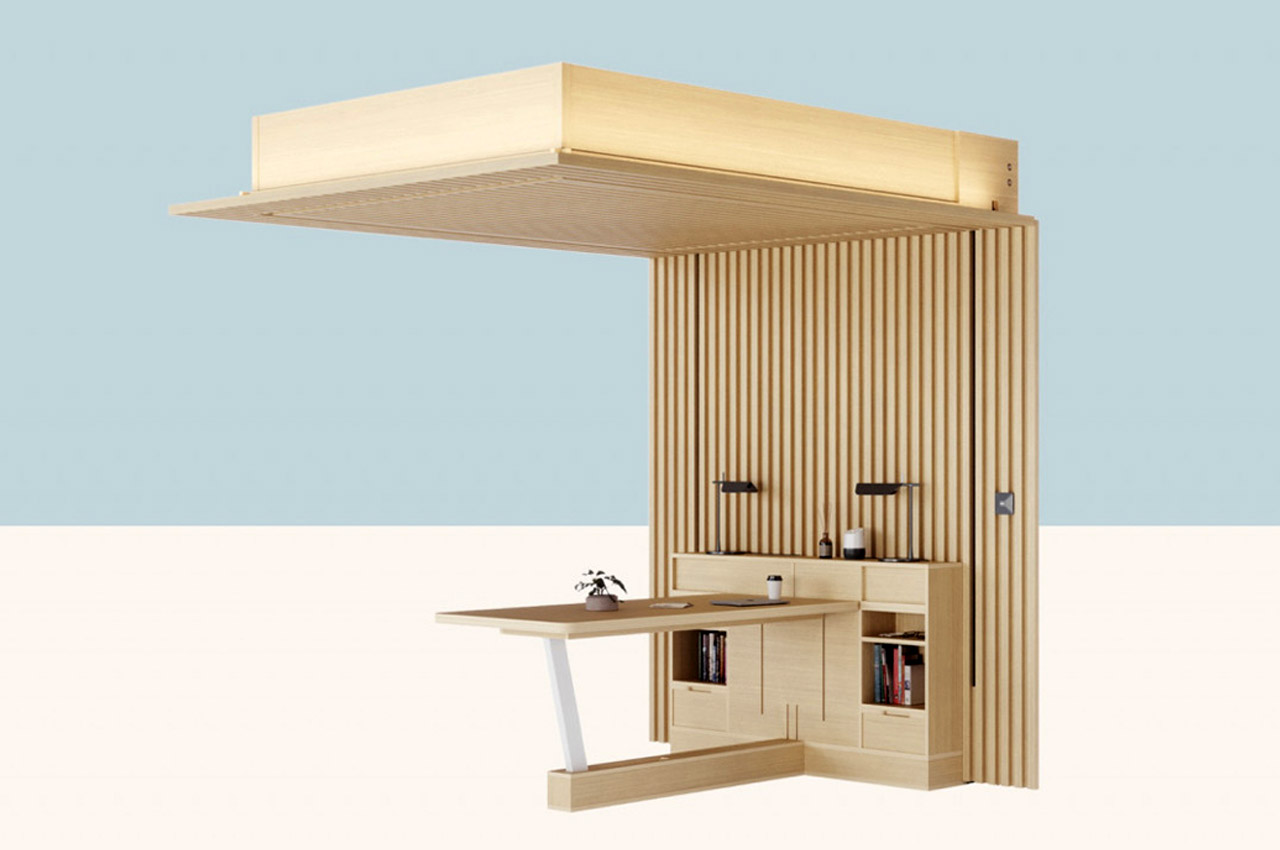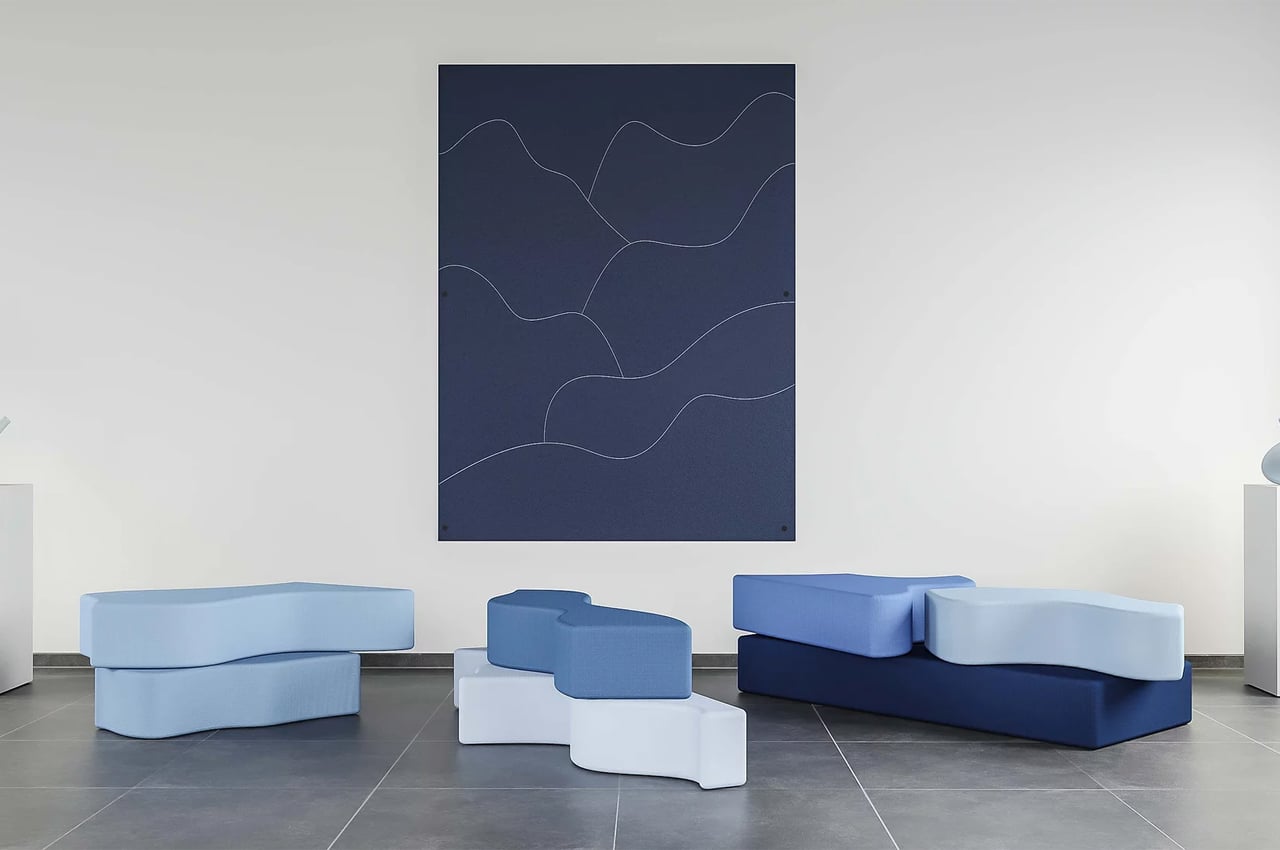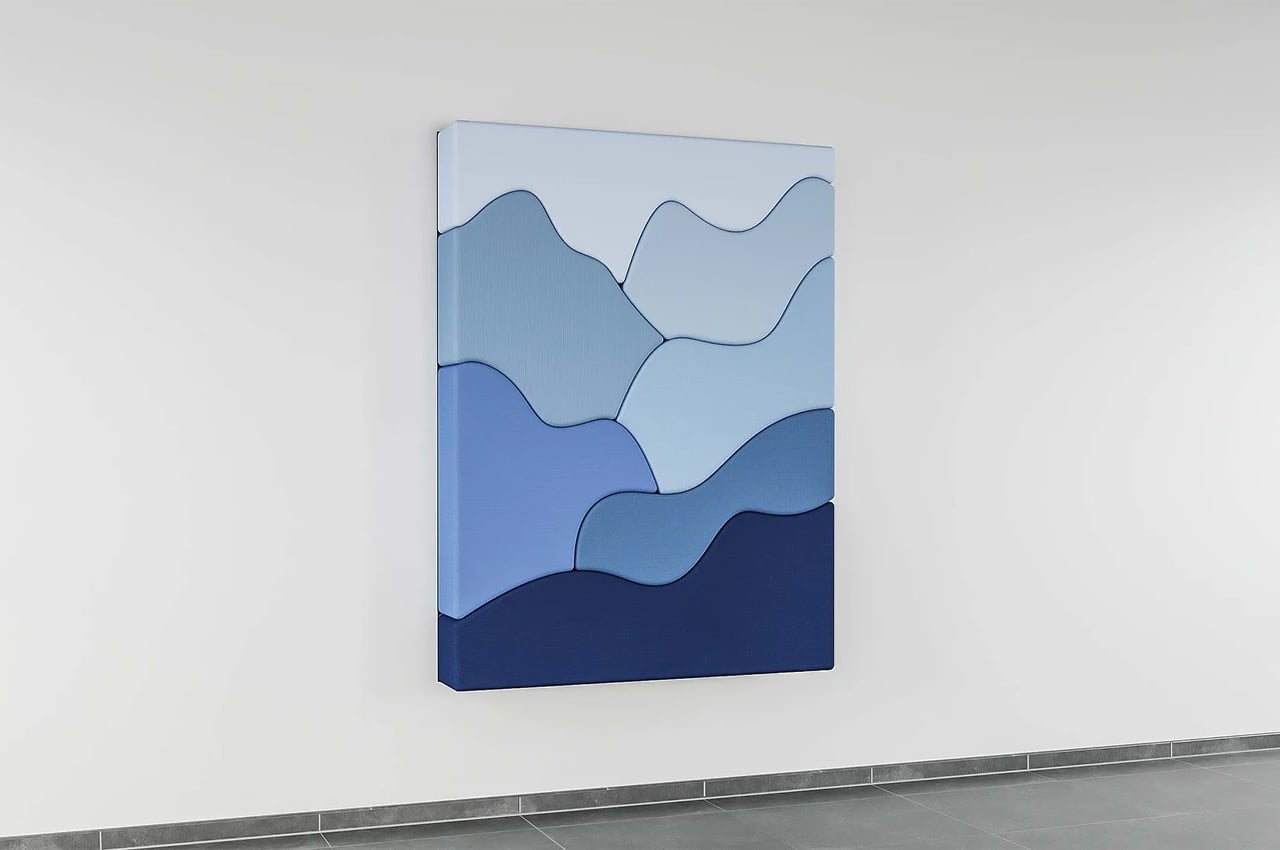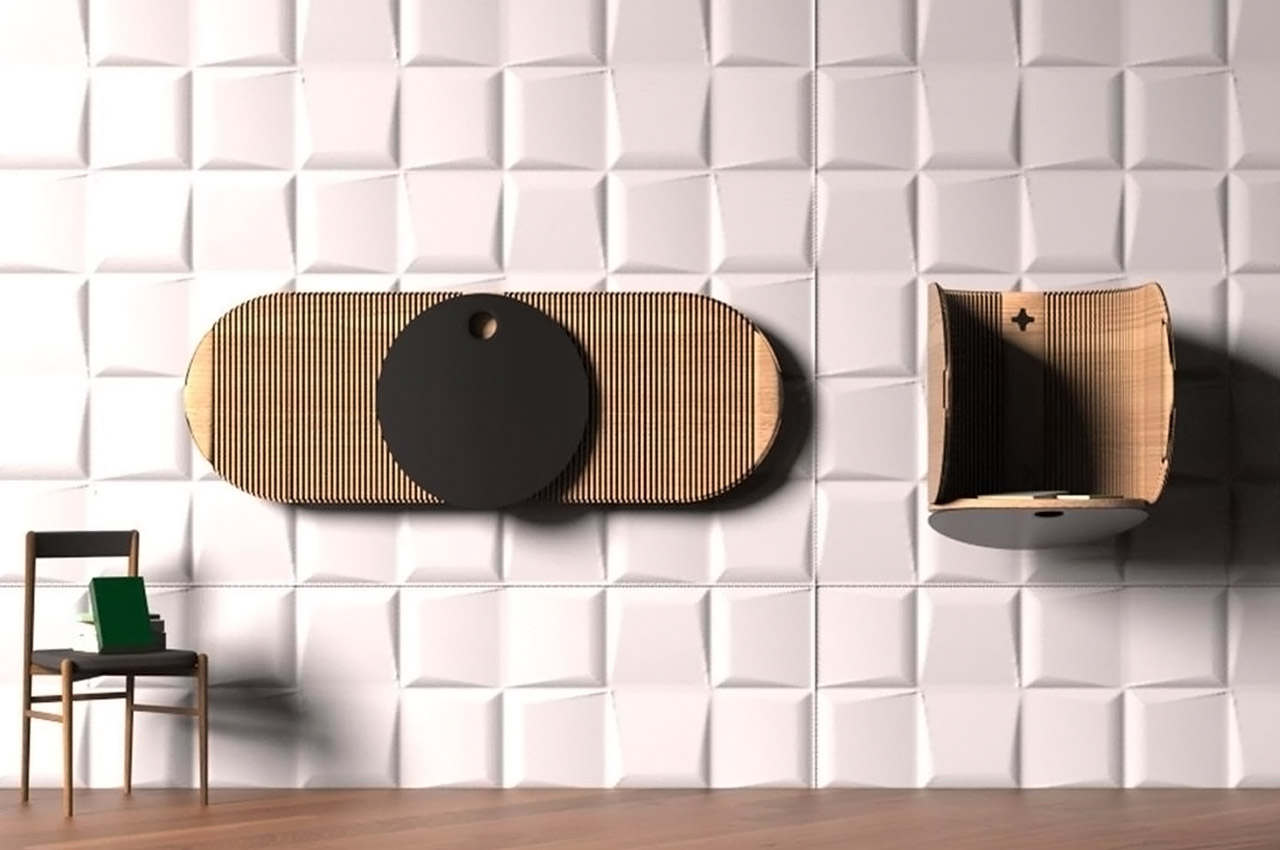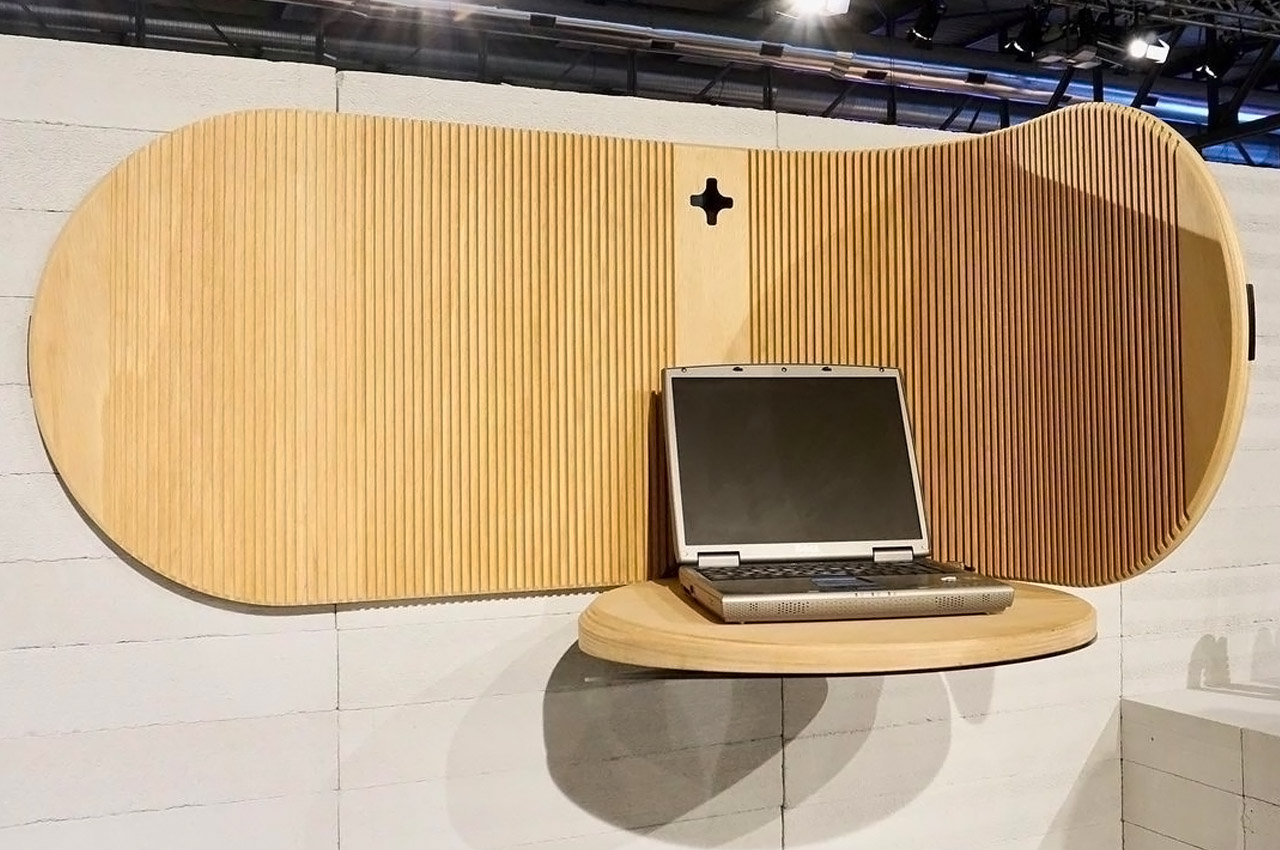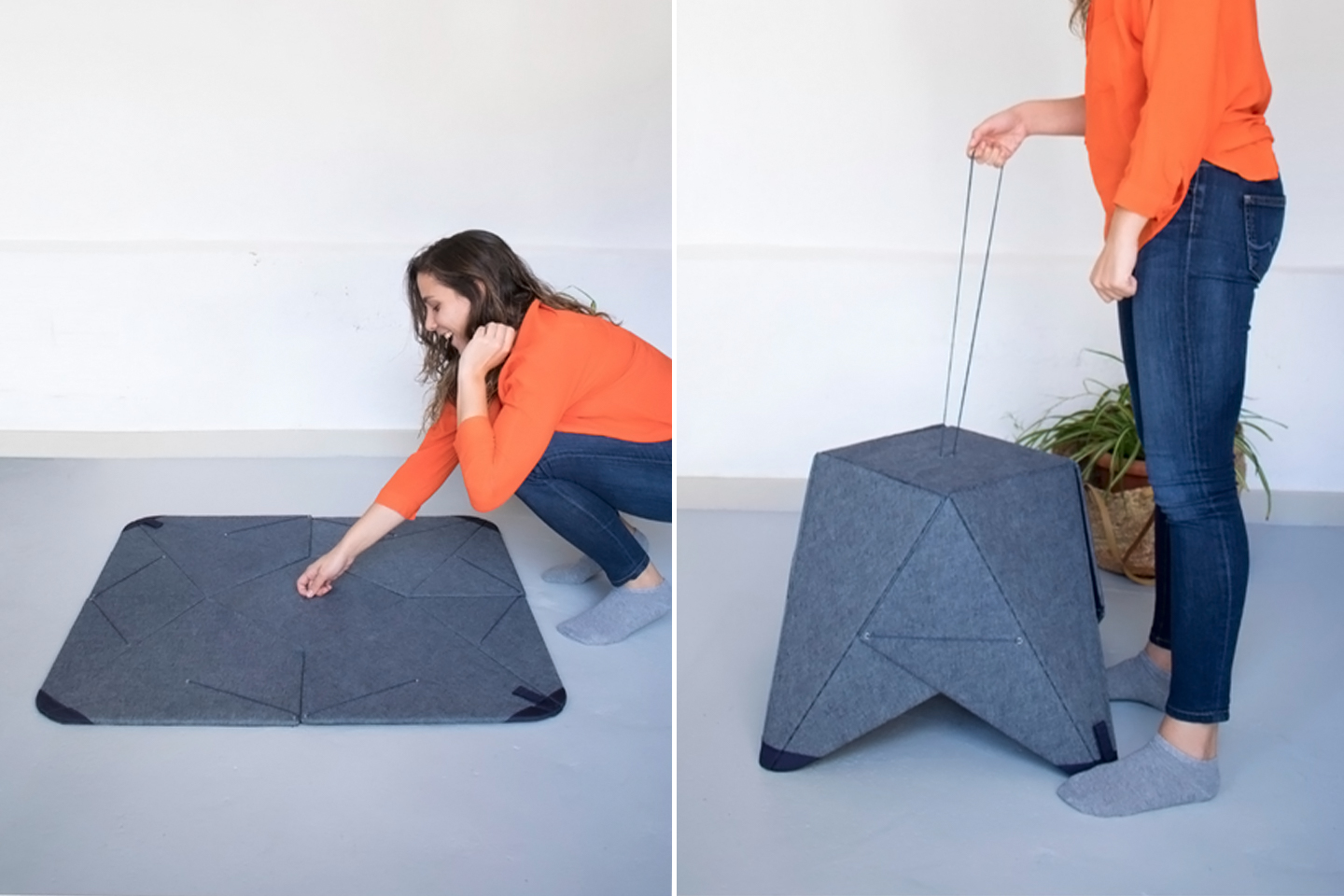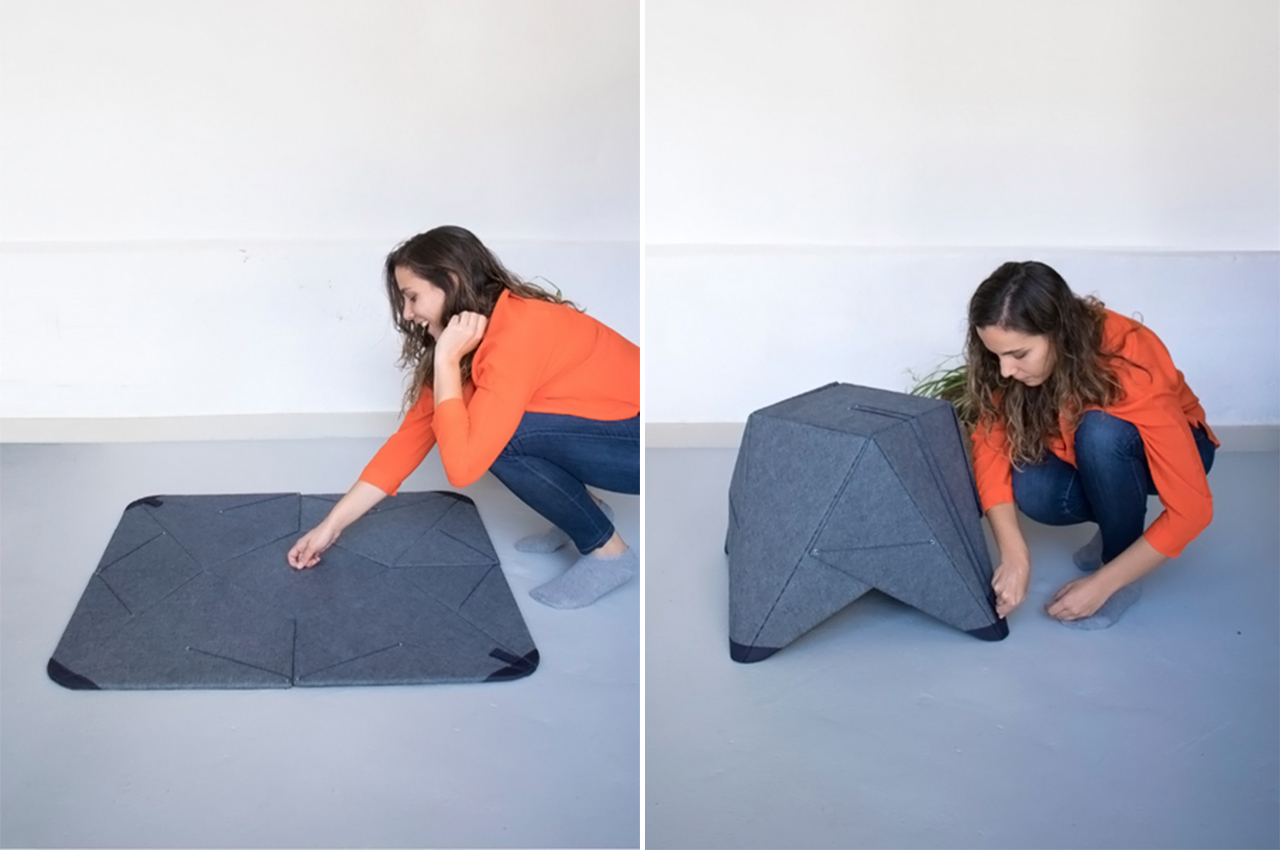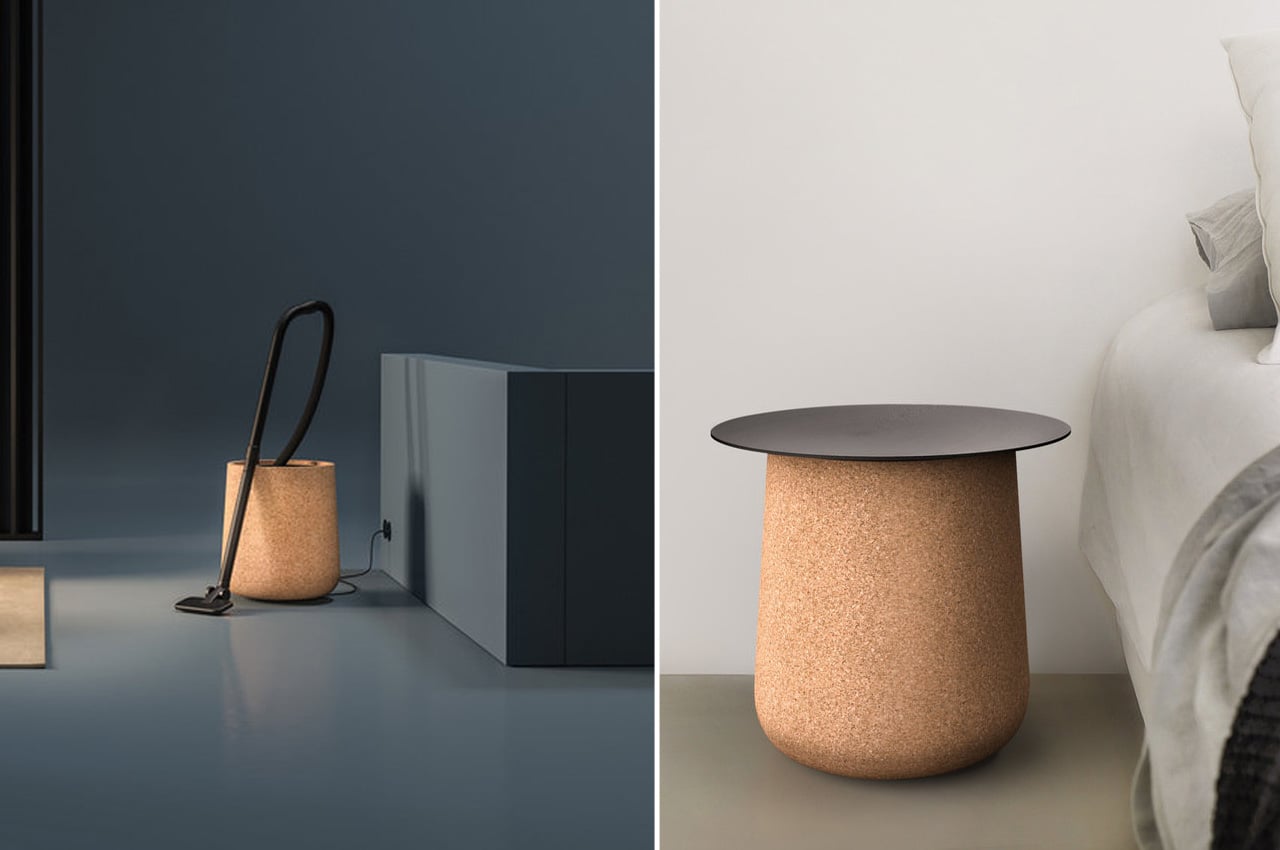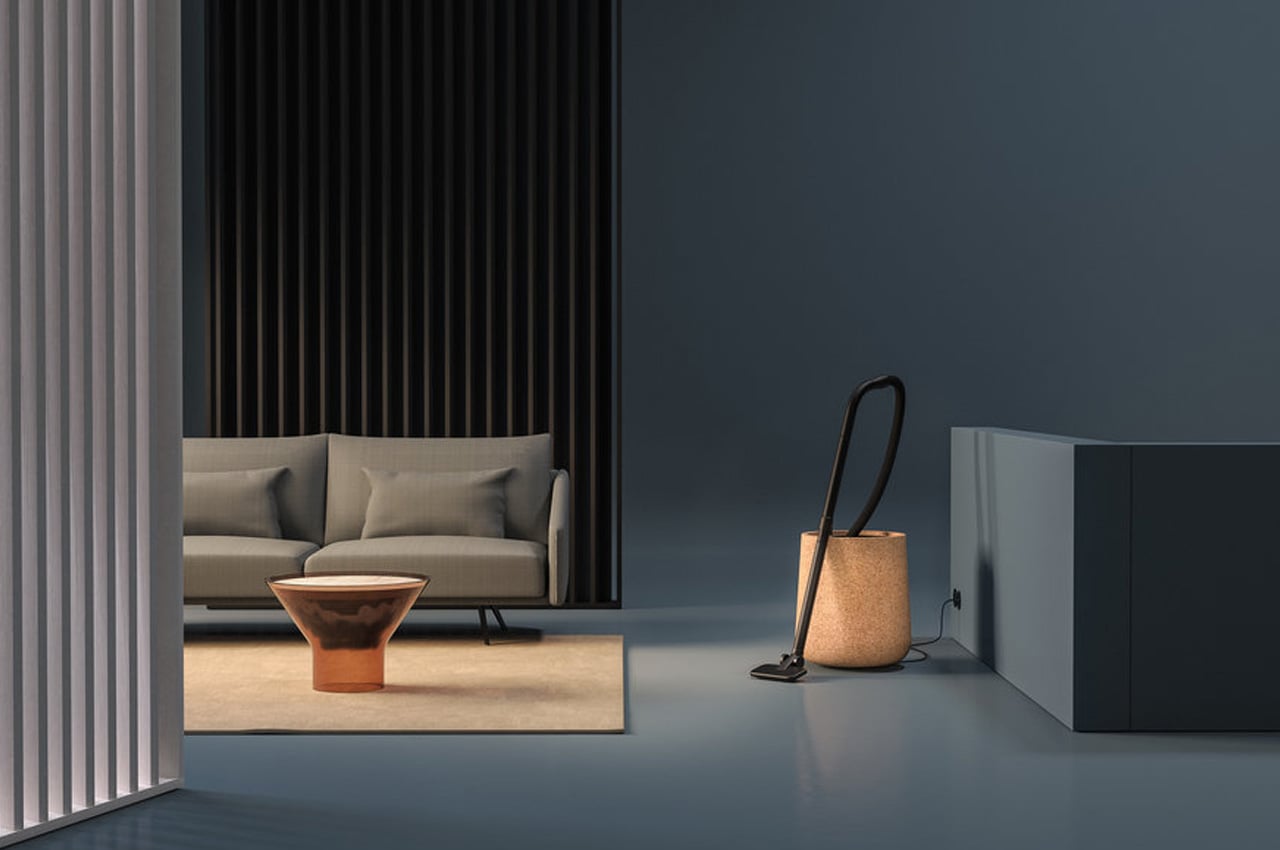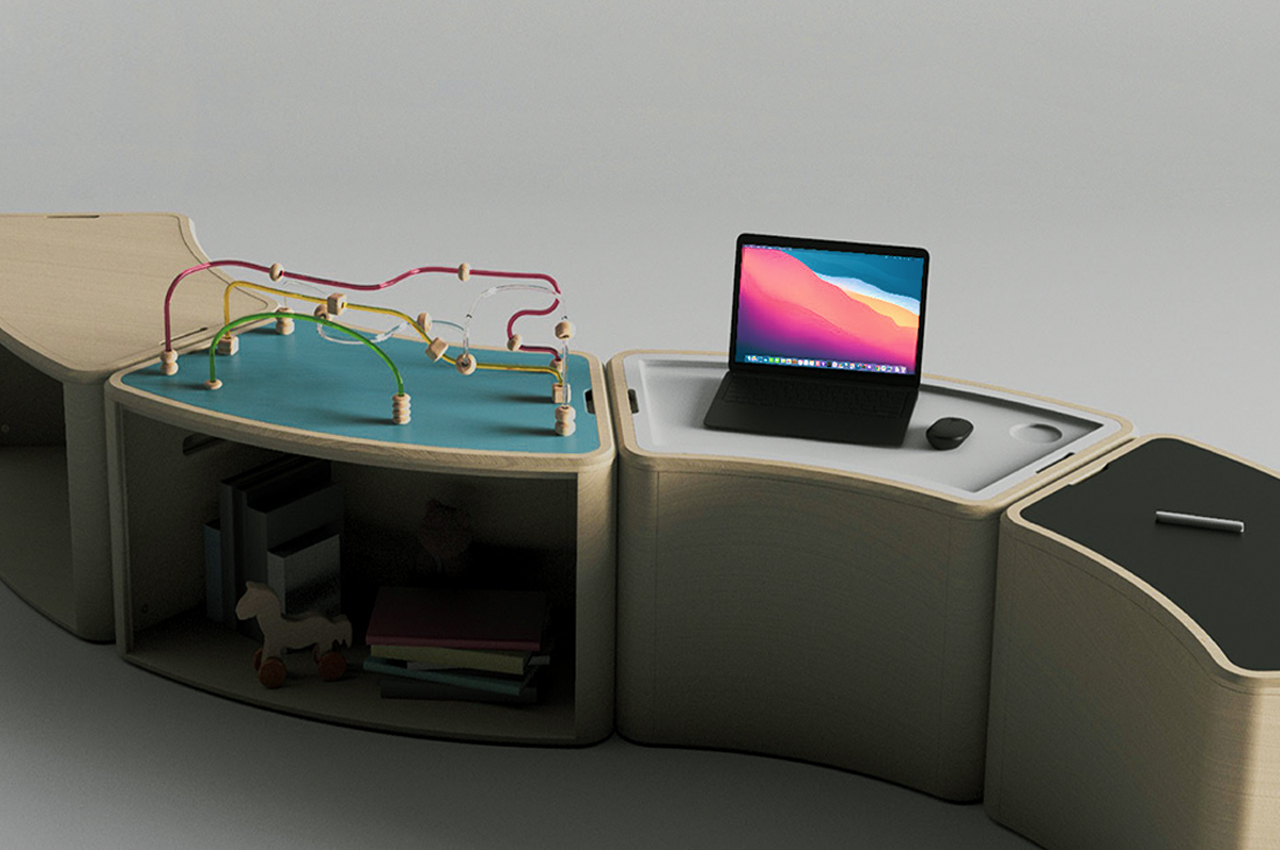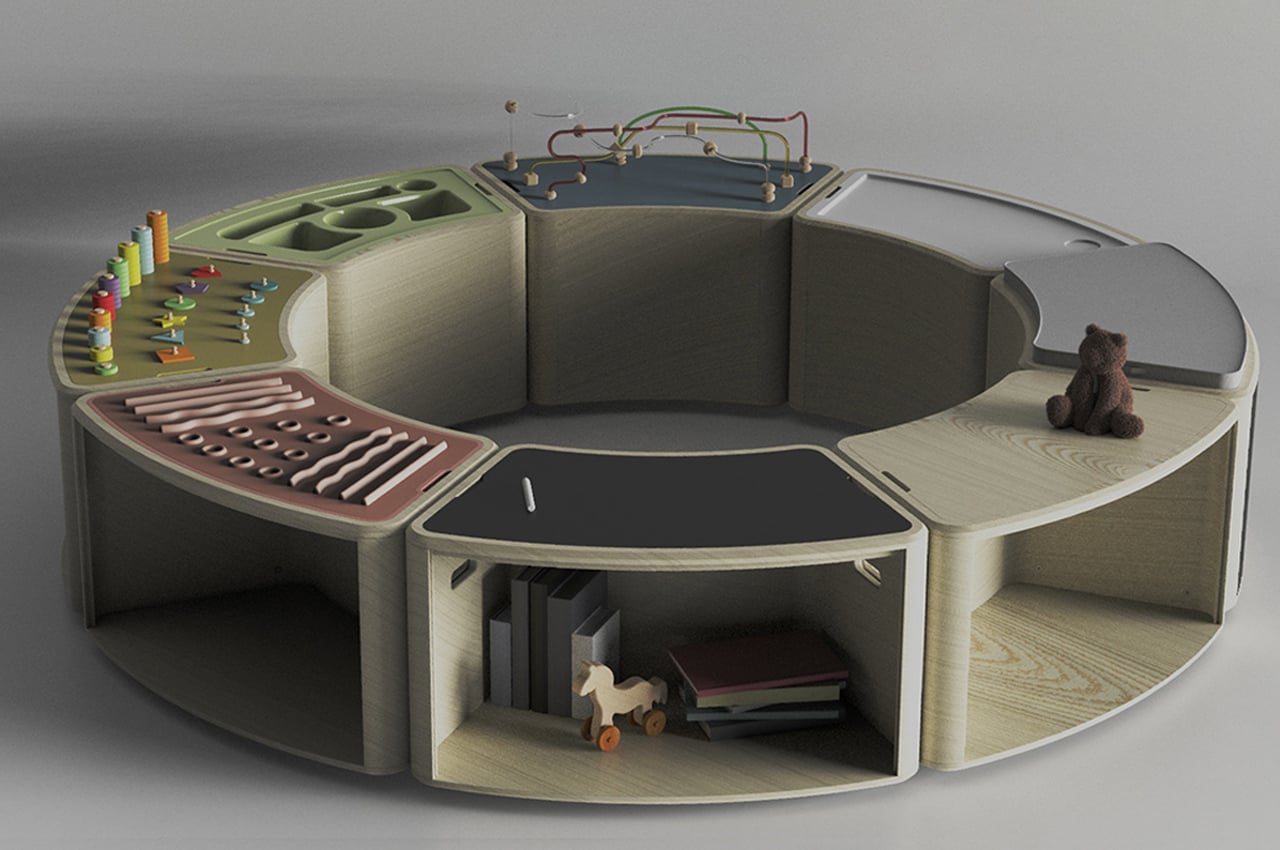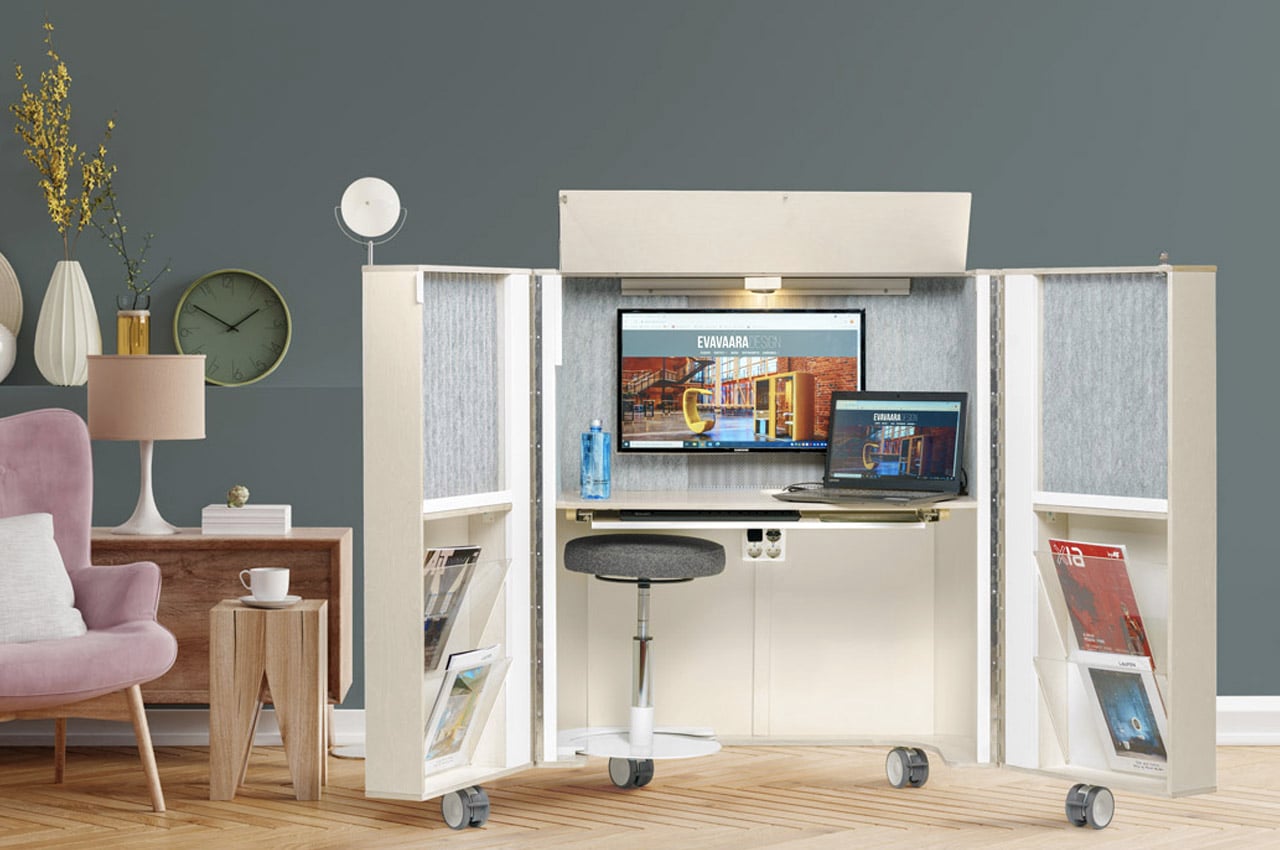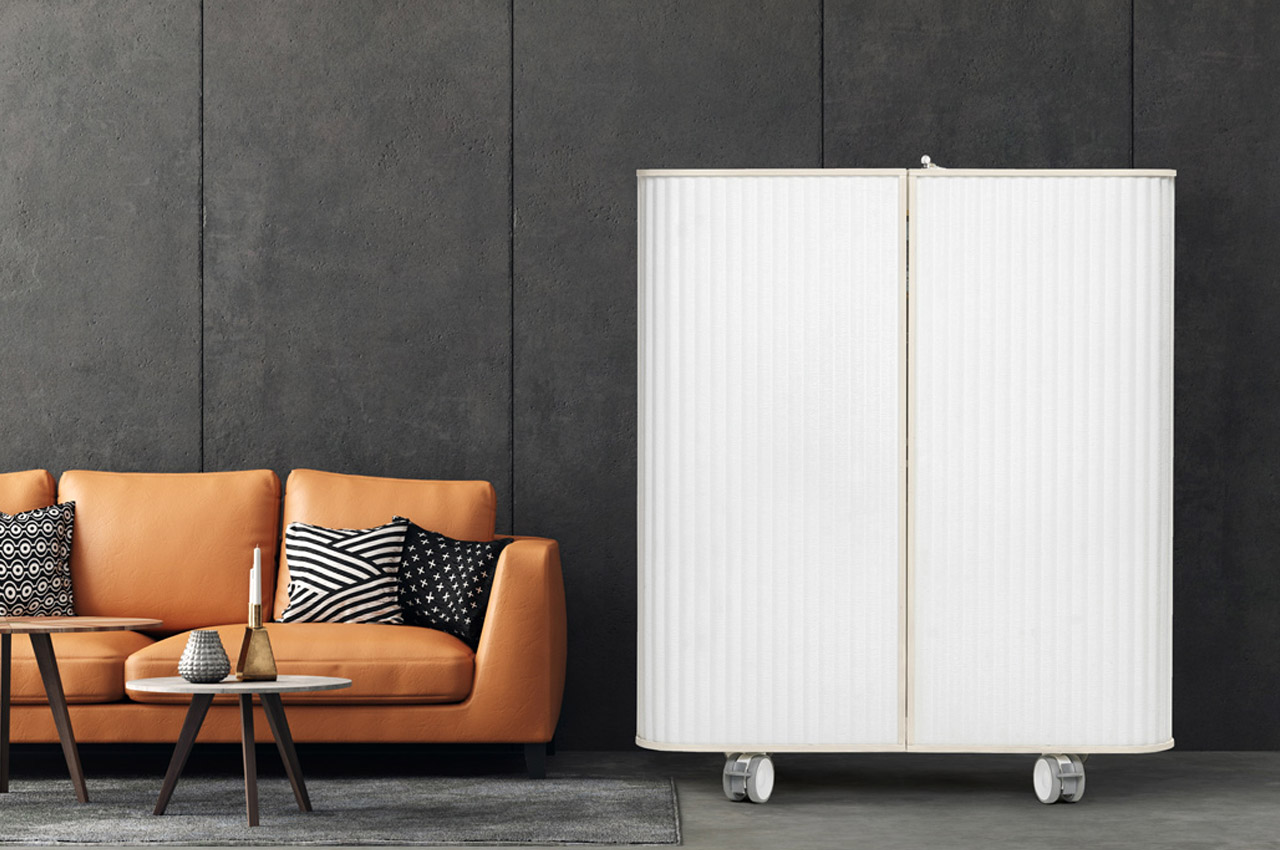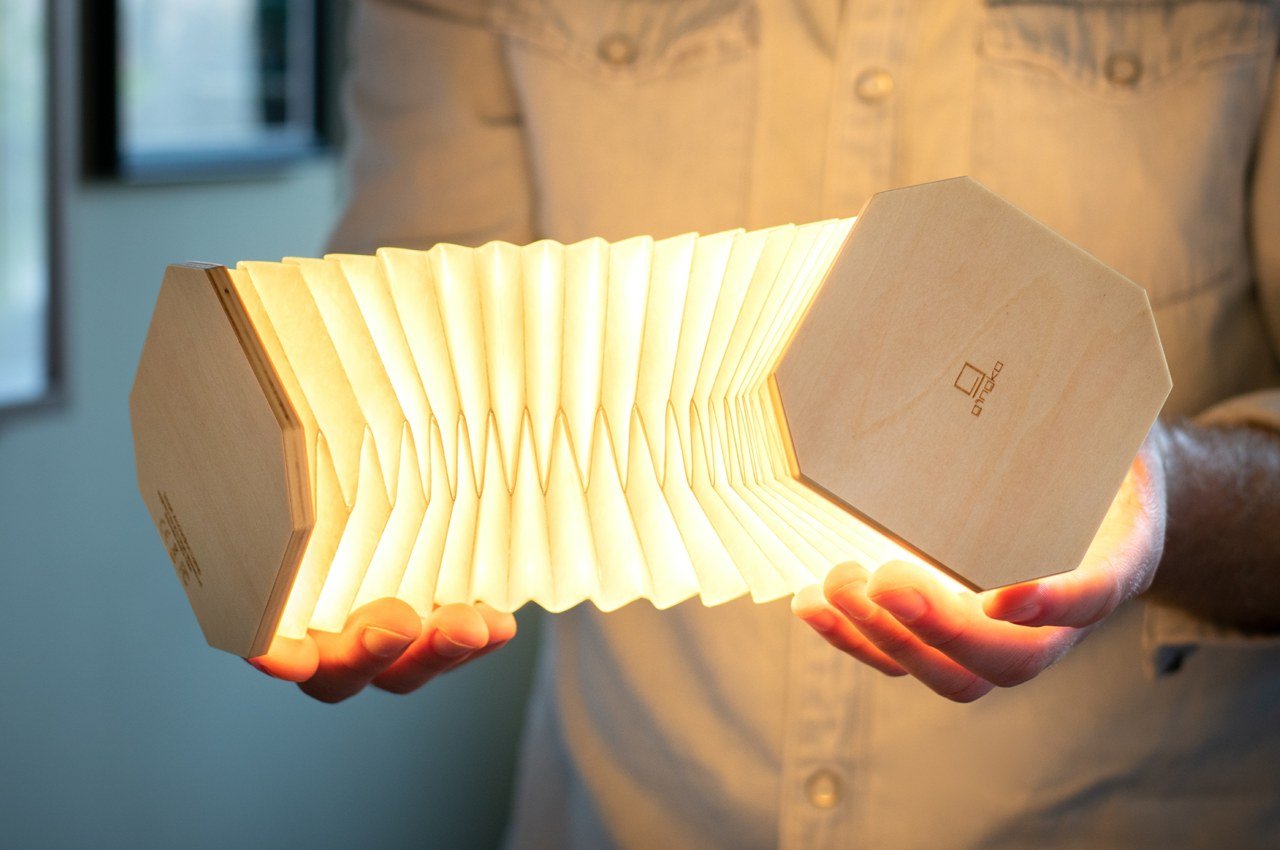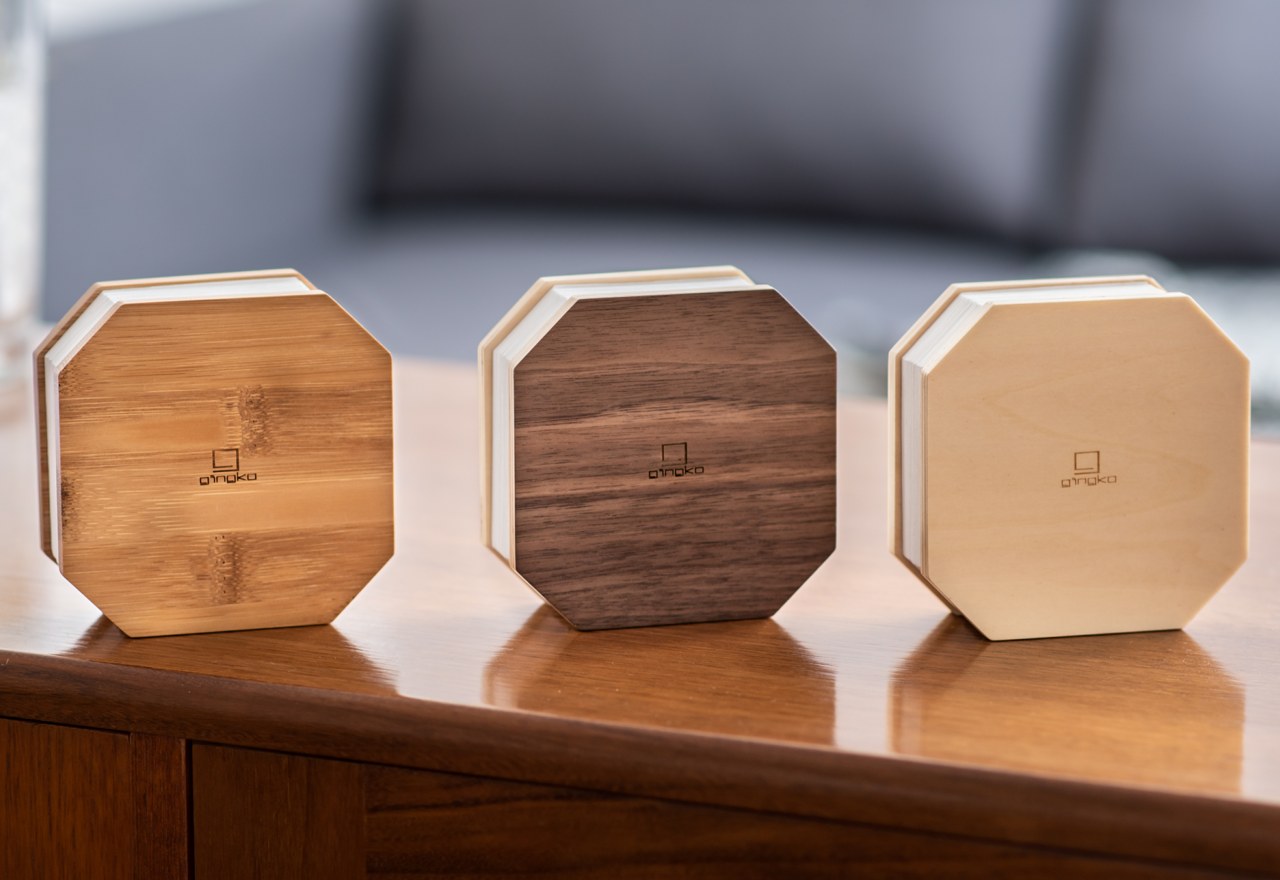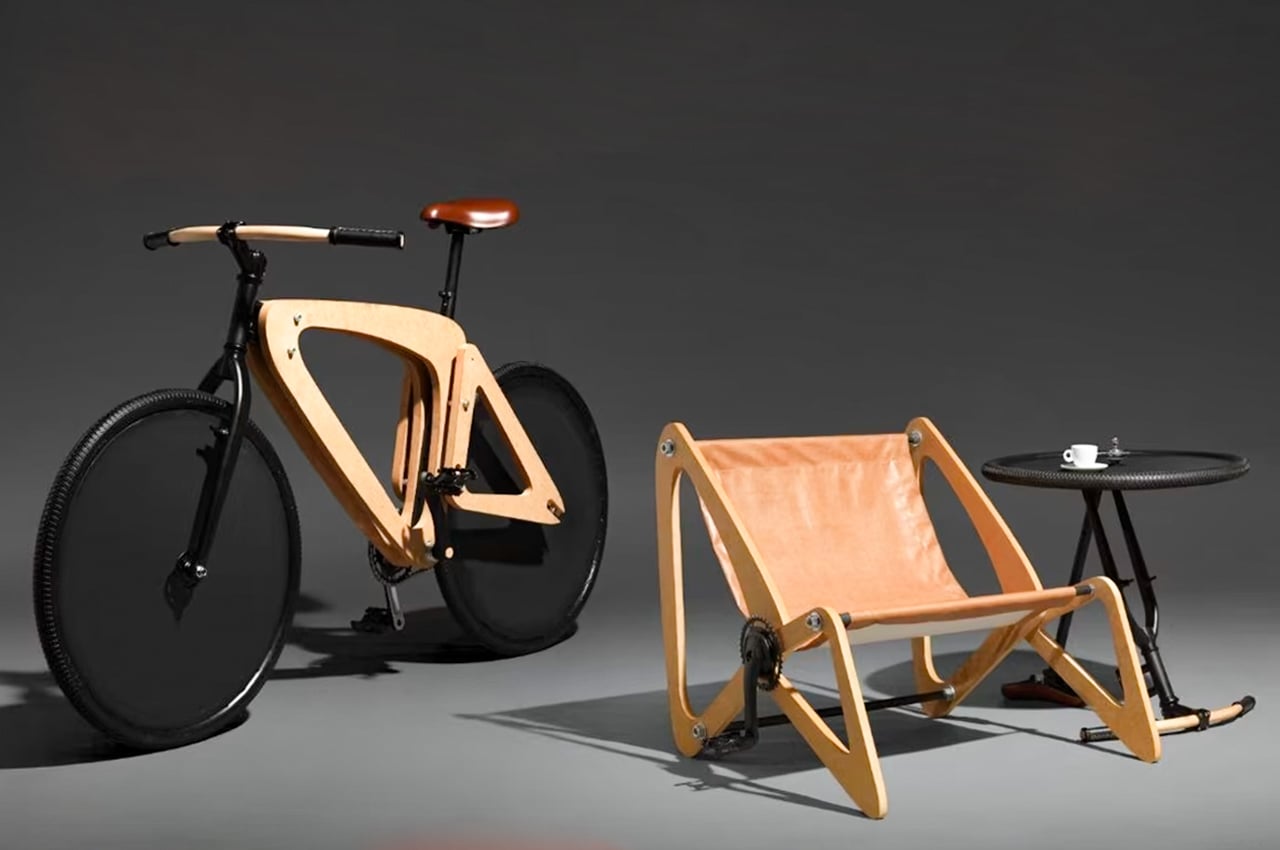
Finding a spacious apartment in our urban cities is a rarity! And if you’ve managed to scrounge one up, then you’re an exception and a very lucky one that is! Because let’s be honest, our modern apartments can be pretty cramped. Space constraint is a major issue, and we often find ourselves squeezing through our own belongings. It’s the ultimate test of our maneuvering skills. However, transforming furniture designs are an ingenious solution to this issue of space restraints. And, we’ve curated a collection of super functional and space-saving furniture designs that promise to not only transform themselves but your living space as well! From a bike that transforms into a chair to a television set that transforms into a bookcase – these innovative furniture designs promise to be the best investments of 2022.
1. The Outlaw Bike
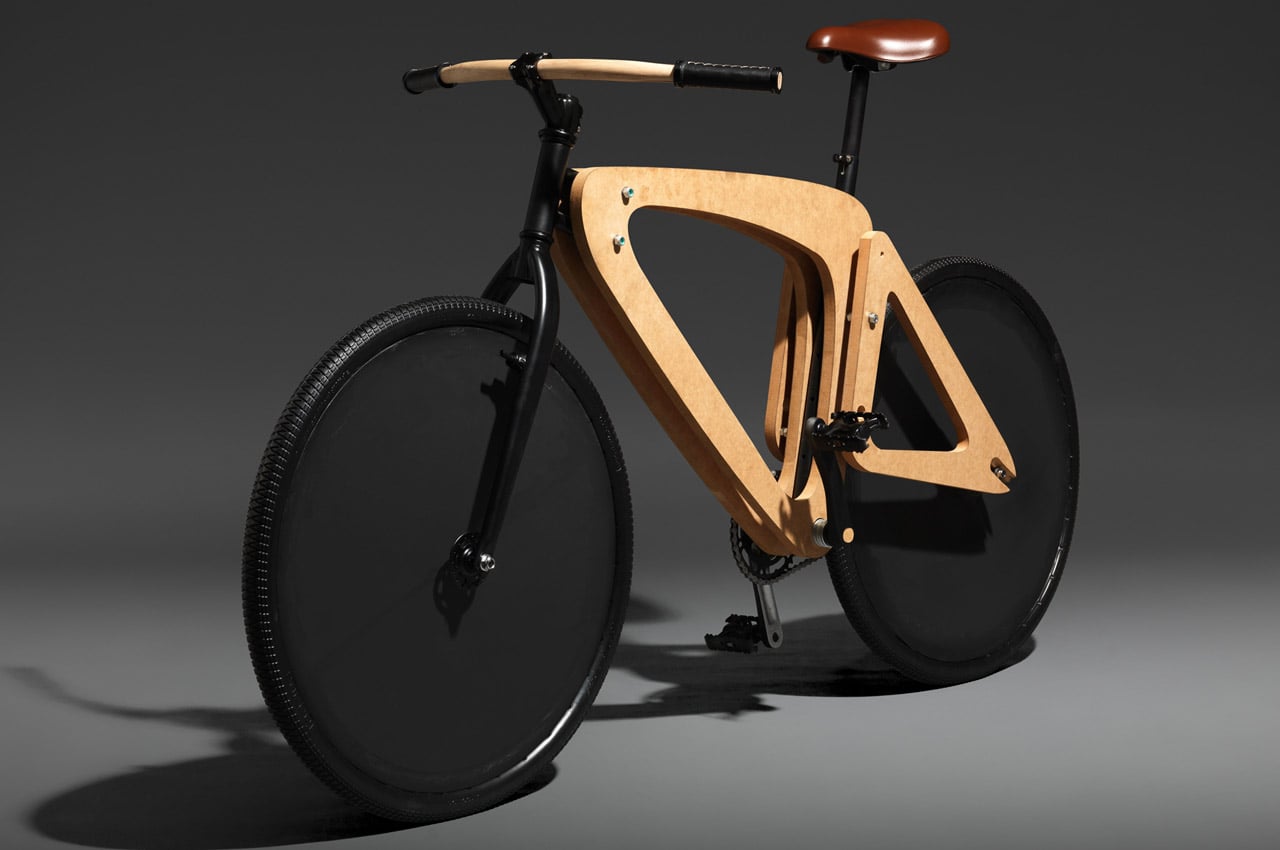
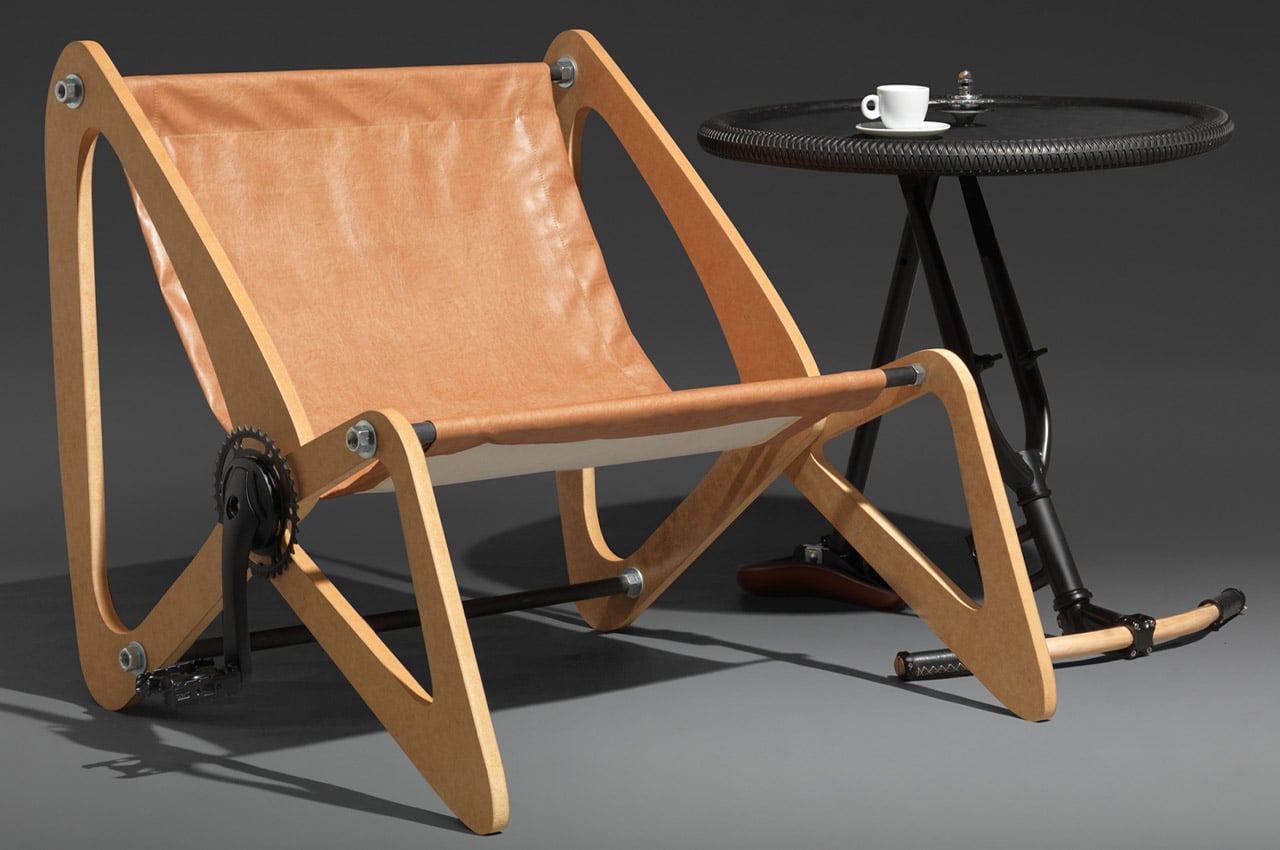
What if you could ride to work on a bike and disassemble it at the destination to reassemble it as an armchair to sit on in the meeting room? It is not easy for industrial designers to create a product disguised as a completely different idea. This is how the Outlaw Bike was born in Brazil though. We can argue, and you will read further why, that the bike is designed as an awareness campaign against the Brazilian tax regime, but it is in fact a project that will have many minds latching onto the idea for industrial gains.
Why is it noteworthy?
The bicycle, a design by Cardoso Cycles for a collaborative awareness drive by Talent Marcel and Bicycling Magazine, can be disassembled instantly to be assembled into an armchair and a table. The idea is to draw the Brazilian tax authority’s attention to the tax burden that affects sales of bicycles in the country.
What we like
- The furniture or bike are made from the same parts and same material. It’s only that they are assembled differently
What we dislike
- The design might seem unnecessary to some
2. D-Tach
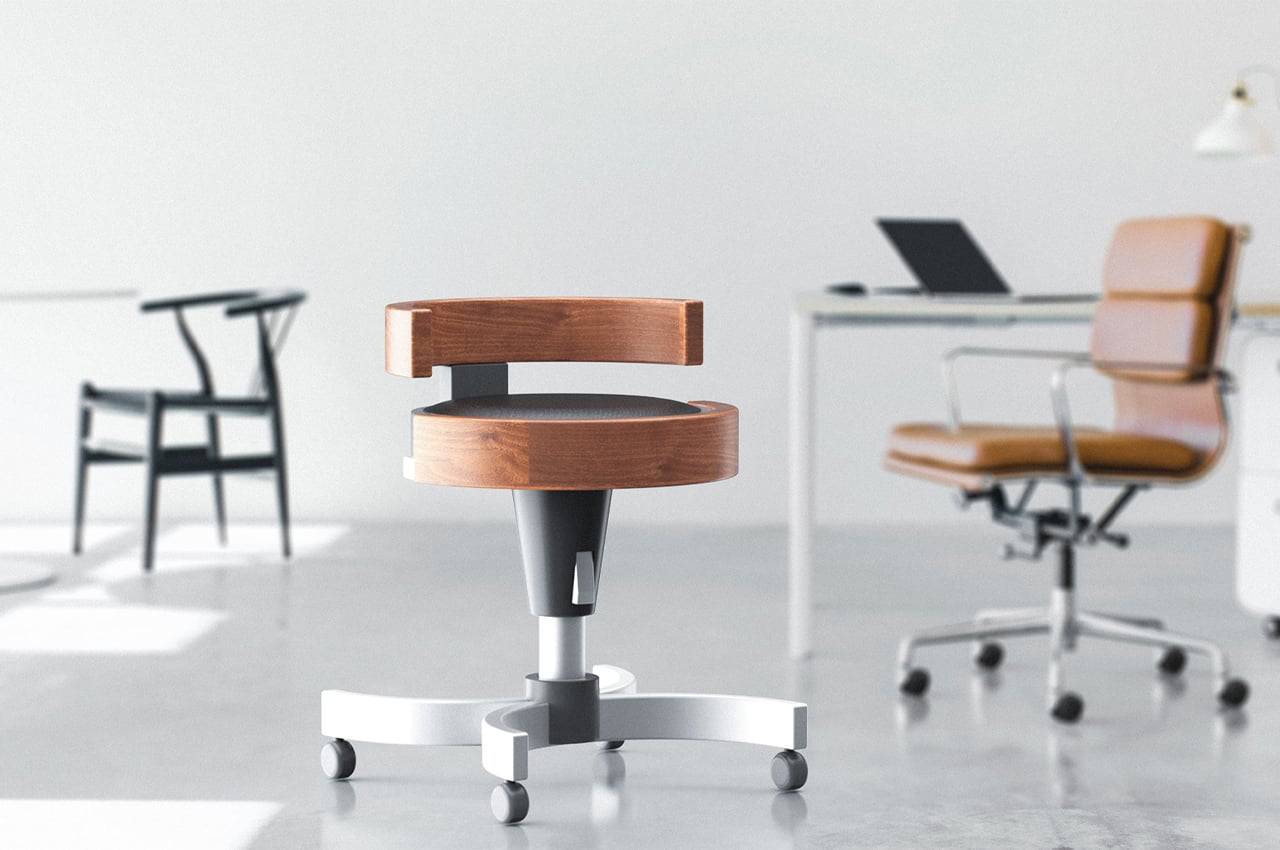
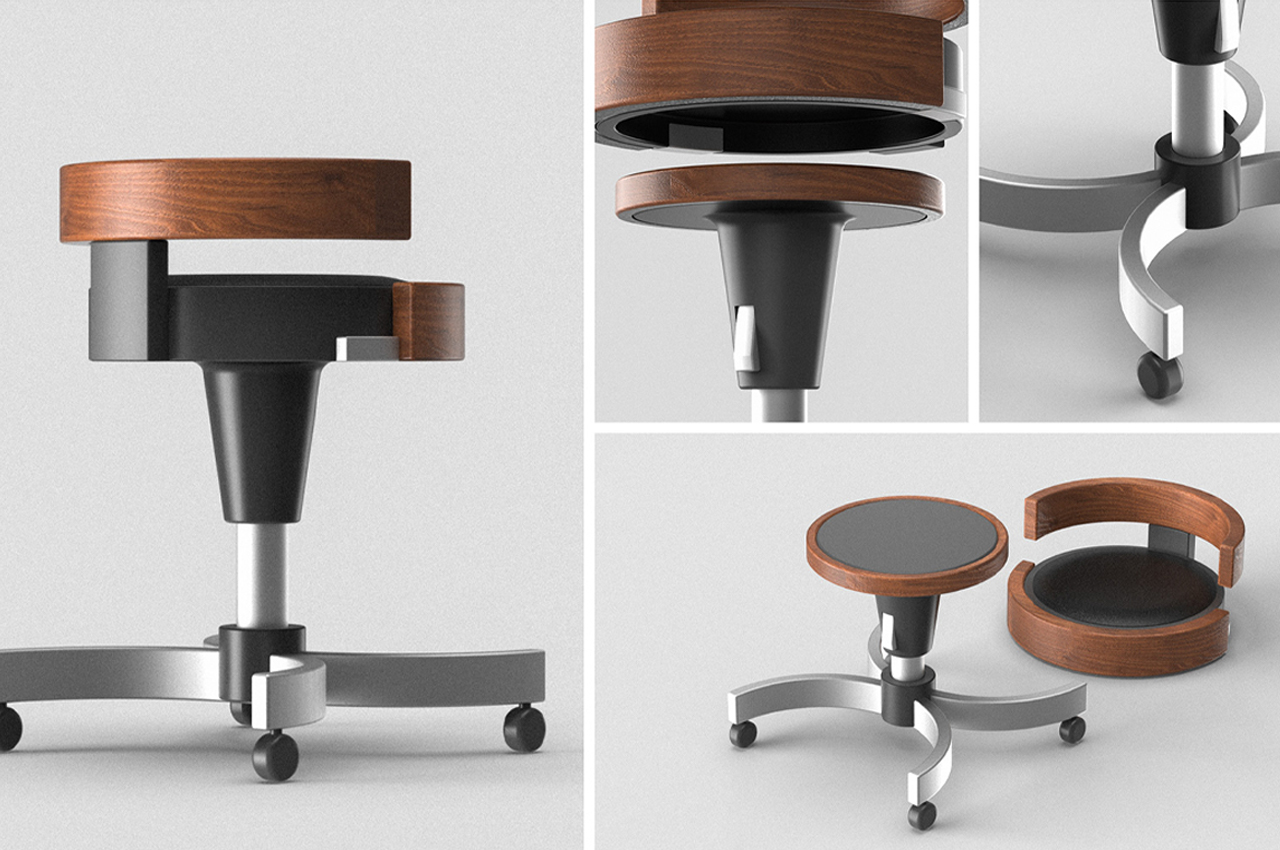
D-Tach is a versatile stool that transforms into a small workspace designed to accommodate today’s mobile work culture. With each day, our world seems to become more and more mobile. Mobile offices, working from home, and freelance careers are increasing in popularity as we move away from corporate offices. With work culture making such a big shift towards mobile lifestyles, our home offices and furniture should reflect that.
Why is it noteworthy?
Industrial design student Andrew Chang decided to create a chair that fits the bill. D-Tach is a modular stool design that functions as a traditional office chair, only to disassemble into parts that provide a small working space on the go.
What we like
- Transforms into a small workspace
- Fits into most modern offices
What we dislike
- We’re unsure how comfortable would the small workspace be to actually work in
3. Giro
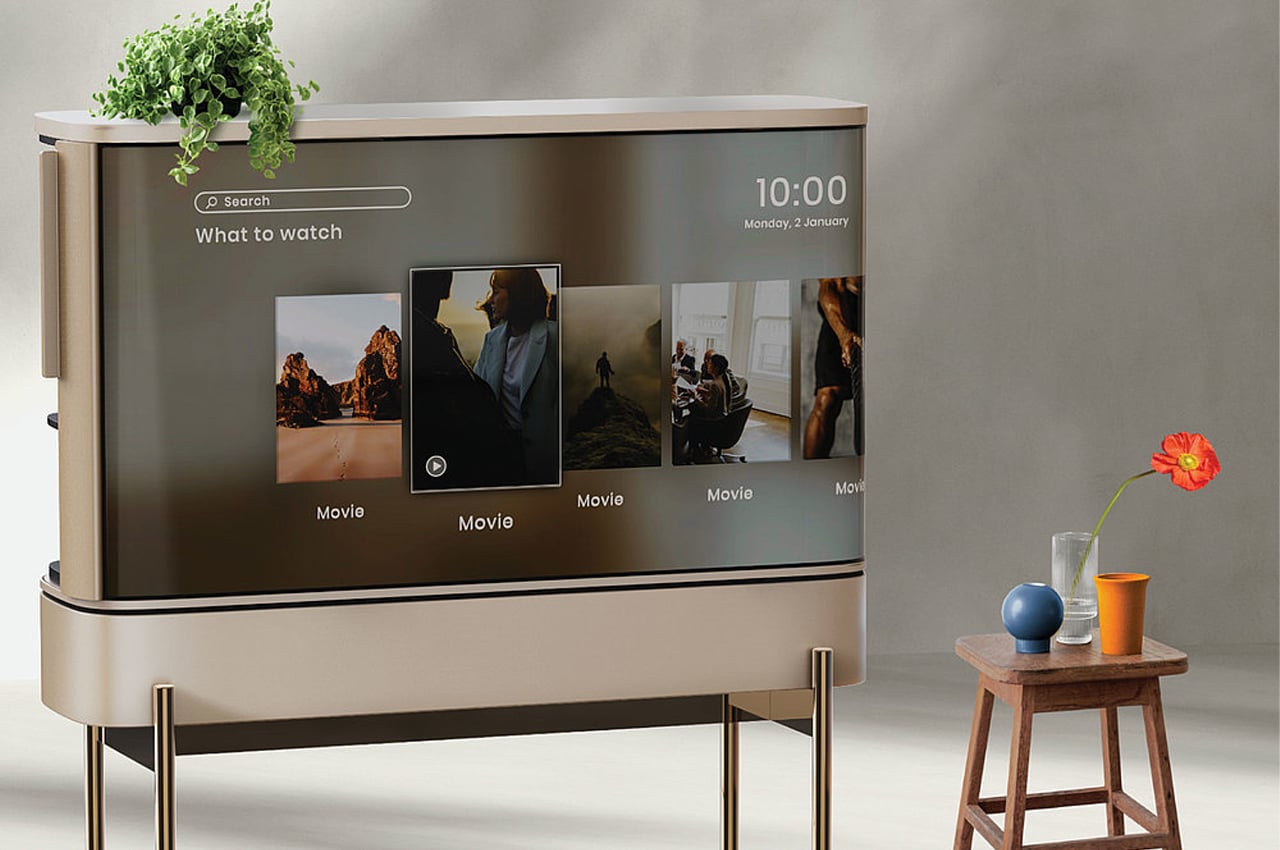
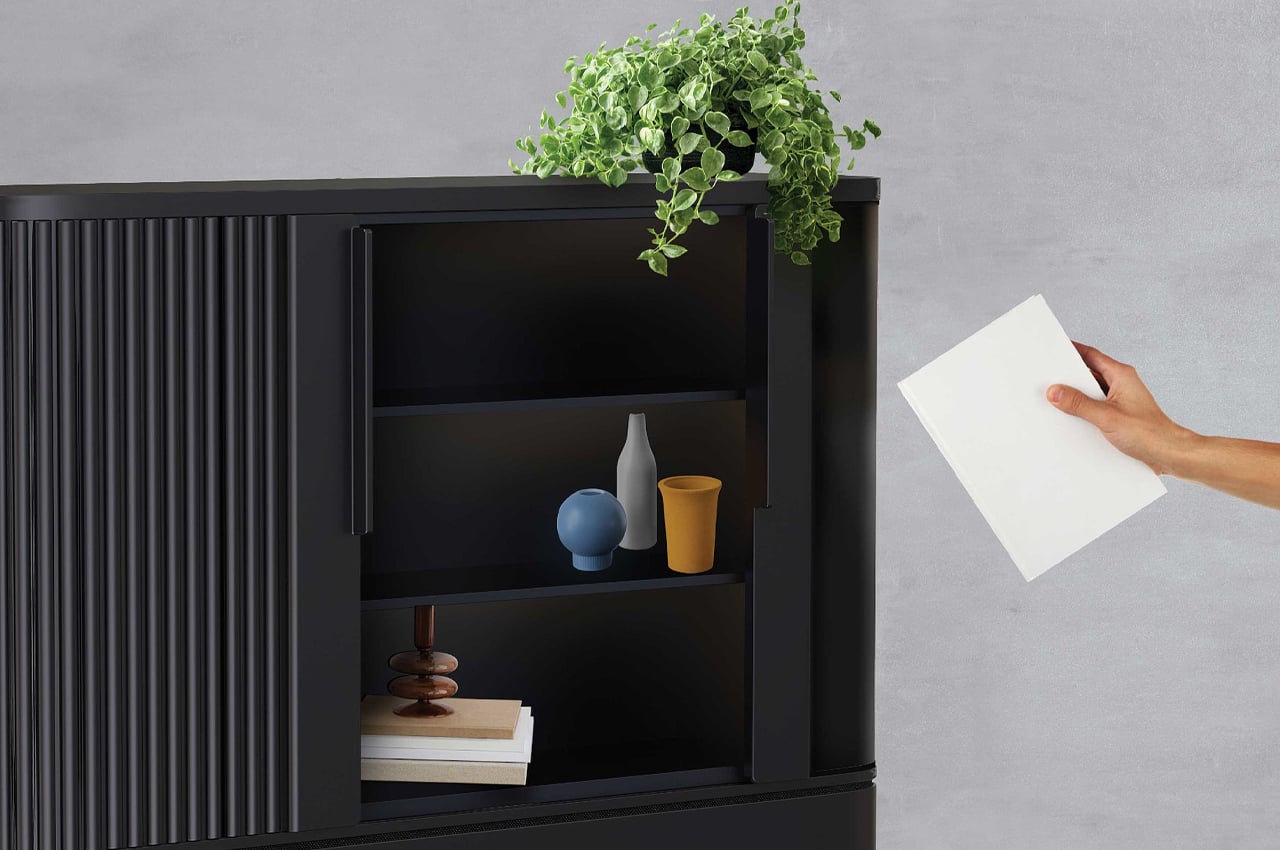
Giro is a multifunctional television with a retractable display screen that slinks away to transform the TV set into a simple bookshelf.
Why is it noteworthy?
To help facilitate all that our living rooms can provide, Giro morphs from a conventional smart television into a simple bookcase with the click of a button. Recognized by the Red Dot Design Awards in its Best of the Best category, Giro is the multifunctional living room appliance that creates customizable spaces as your needs change.
What we like
- Smart space-saving design
- Giro also operates as an everyday television when needed, projecting movies and television shows chosen from a programmed catalog
What we dislike
4. uuma
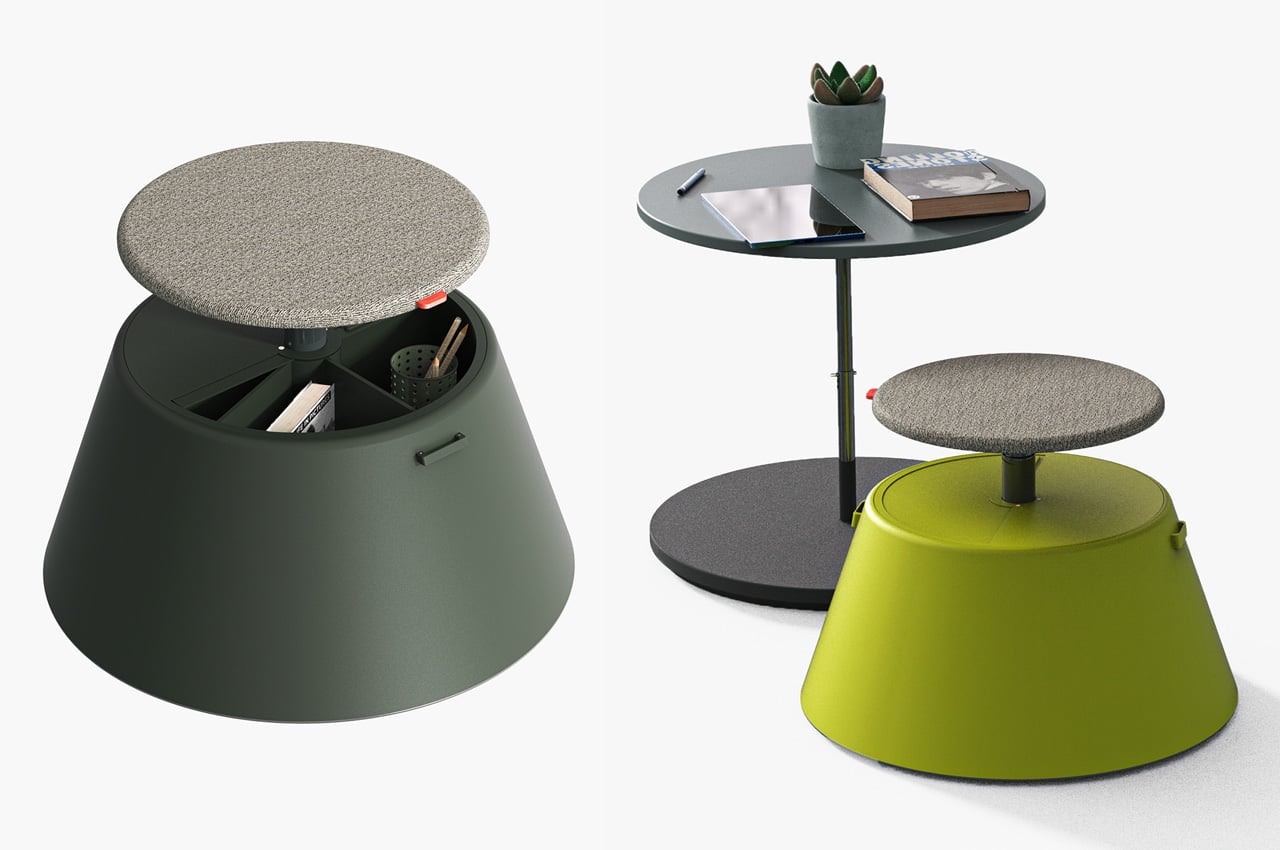
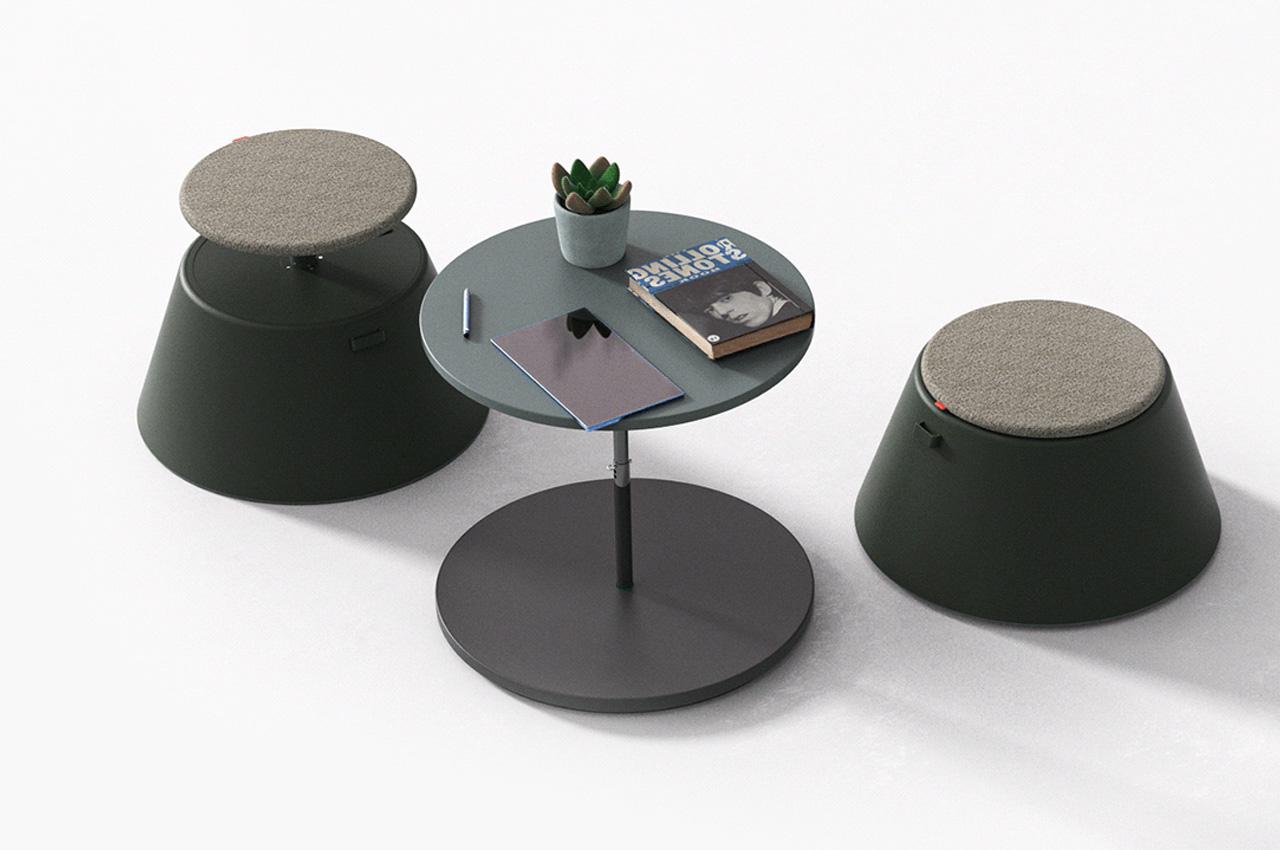
This portable table and chair combo is made from fiberglass, which offers the unit its much-needed portability and durability. Fiberglass by virtue is a sustainable and pretty affordable material, it is also lightweight and robust in nature. The customizable furniture unit comprises four parts primarily that can be removed or put together with minimum know-how. The modular parts of the uuma include a height-adjustable metal leg – forming the central frame – and the lower and upper table layers.
Why is it noteworthy?
During the work from home regime, there may be times when you want to move to the balcony/garden and work while soaking in some sun. It seems easy with the choice of outdoor furniture, but if you have tried – you know – meeting the comfort of the workstation outside is not possible, and you end up cutting the adventure short, only to return to the more efficient work environment. With the umma the scenario is alterable. You can have a comfortable seat that can raise or lower on demand and can be clipped open to reveal a height-adjustable table. This table and chair can then be equally comfortable whether you choose to place it outside or inside in your home-office nook. This means, with uuma you can work wherever and whenever you can find the right motivation and creativity you need for your work.
What we like
- Can be used in multiple setting both indoors and outdoors
- Highly portable and durable
What we dislike
- The design may not be very ergonomic or comfortable to work on for long hours
5. FLUP
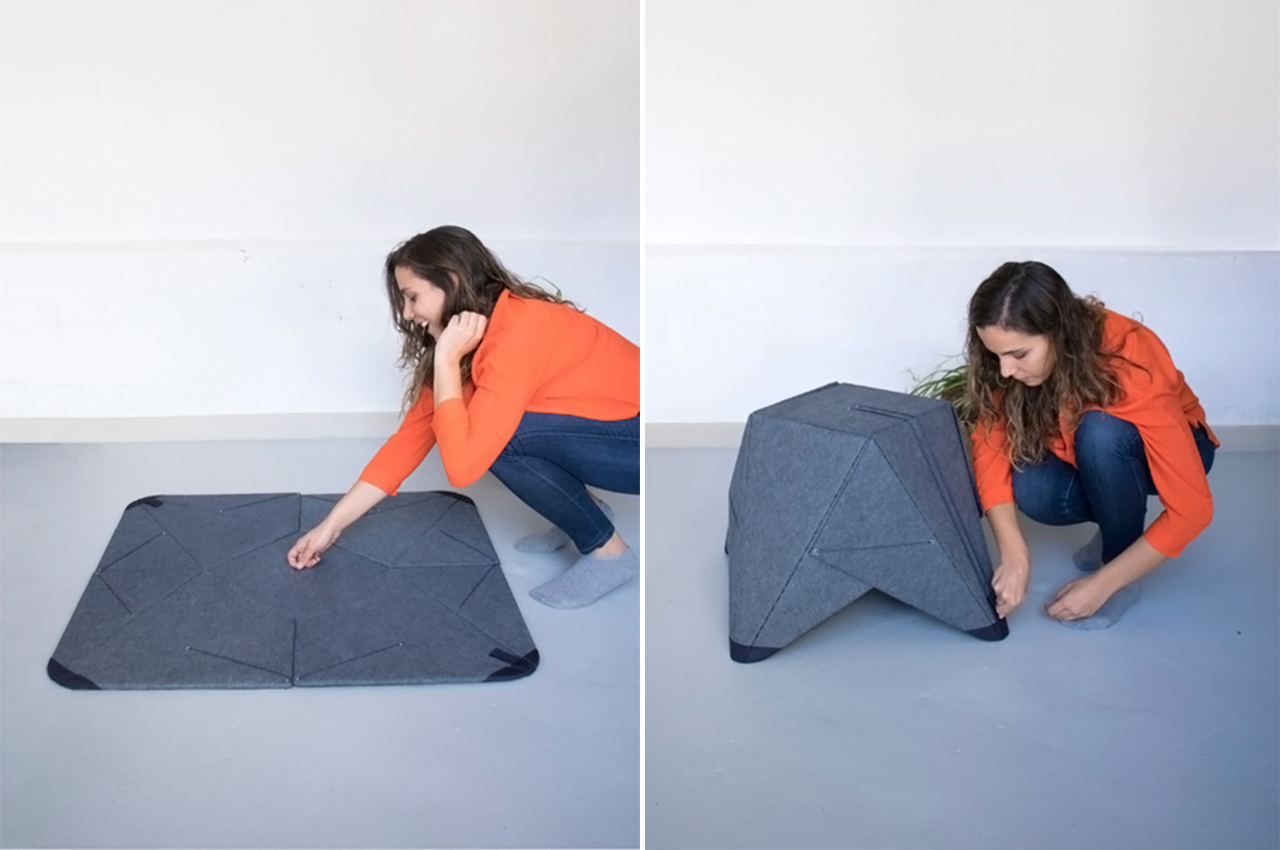
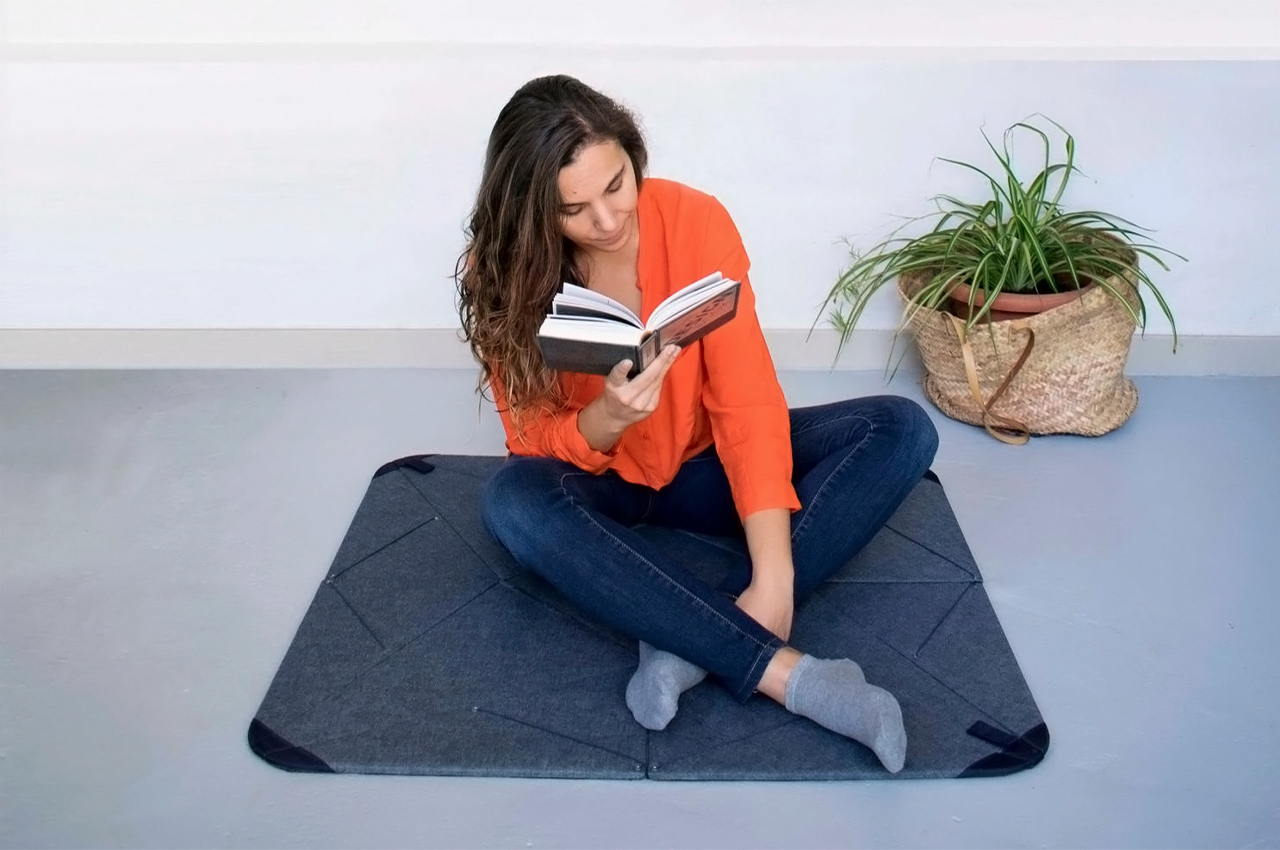
Who isn’t fascinated by transforming furniture designs? I love watching how furniture can serve multiple purposes by simple actions like a pull of a string or folding of a flap. My latest love in the realm of (furniture) transformers is FLUP – a multifunctional furniture piece that is both a rug and a seat! Furniture designs like FLUP are perfect for smaller living spaces, especially with the growing tiny house movement.
Why is it noteworthy?
In the unfolded position, FLUP works like a conventional mat or rug on which we can sit or step without interrupting the movement of people through the space. It transforms from plane to volume, from floor to space while changing the function with its shape. In the folded position, it works as a piece of minimal furniture – it can be used as a pouf, an auxiliary seat, a footrest, a nightstand, etc.
What we like
- Transforming design
- Space-saving
- Ideal for tiny homes
What we dislike
- Doesn’t rate high on aesthetics
6. Bumblebee furniture system
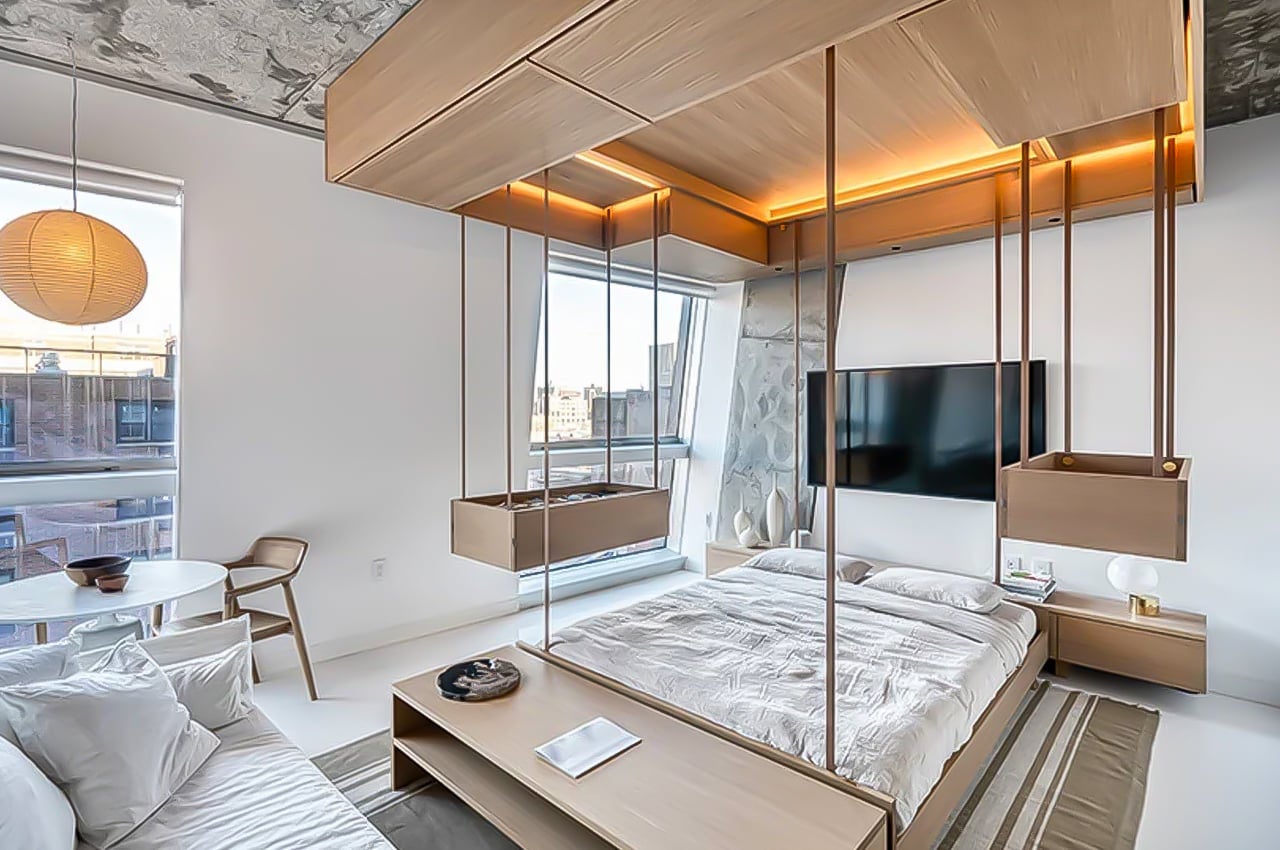
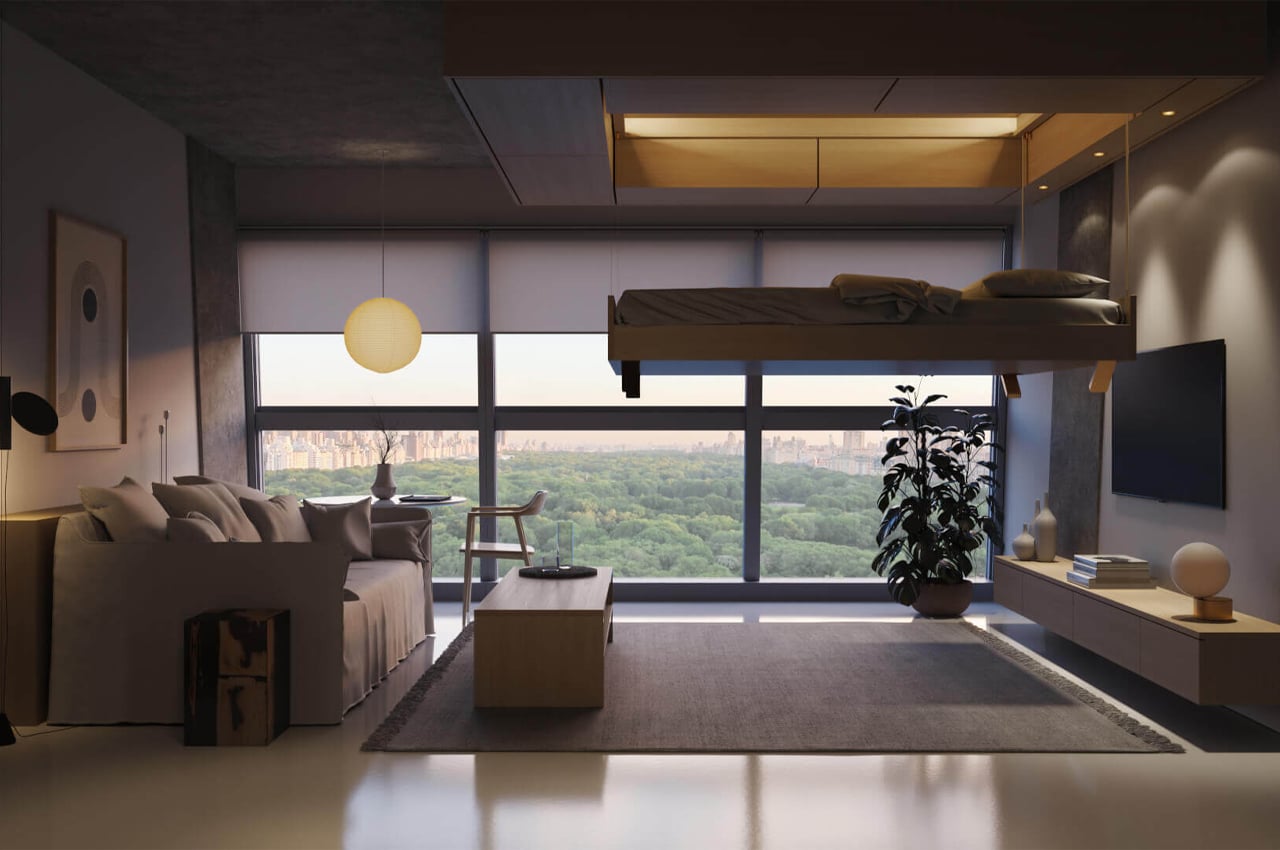
‘The Smile,’ a new apartment complex in East Harlem designed by BIG (Bjarke Ingels Group) features smart furniture systems comprised of stow-away storage units, bed frames, workspaces, and wardrobes that rise into and fall from the ceiling on command.
Why is it noteworthy?
Built around a grid that’s mounted to each unit’s ceiling, the modular furniture systems are comprised of storage cabinets and bed frames that rise and descend according to the changing needs of each resident. When a component of the system isn’t in use, it rises and disappears into the ceiling to enlargen the unit’s available living space. Then, when one is needed, the furniture system recognizes voice commands, remote controls, and programmed settings to initiate a component’s descent from the ceiling to the unit’s floor.
What we like
- Residents can command the bed to merge with the ceiling to conceal it from view
- Bumblebee’s furniture system also remembers where residents left certain pieces of furniture or smaller belongings so looking for your keys won’t keep you from getting a move on
What we dislike
7. The RLDH Alto Standing Desk
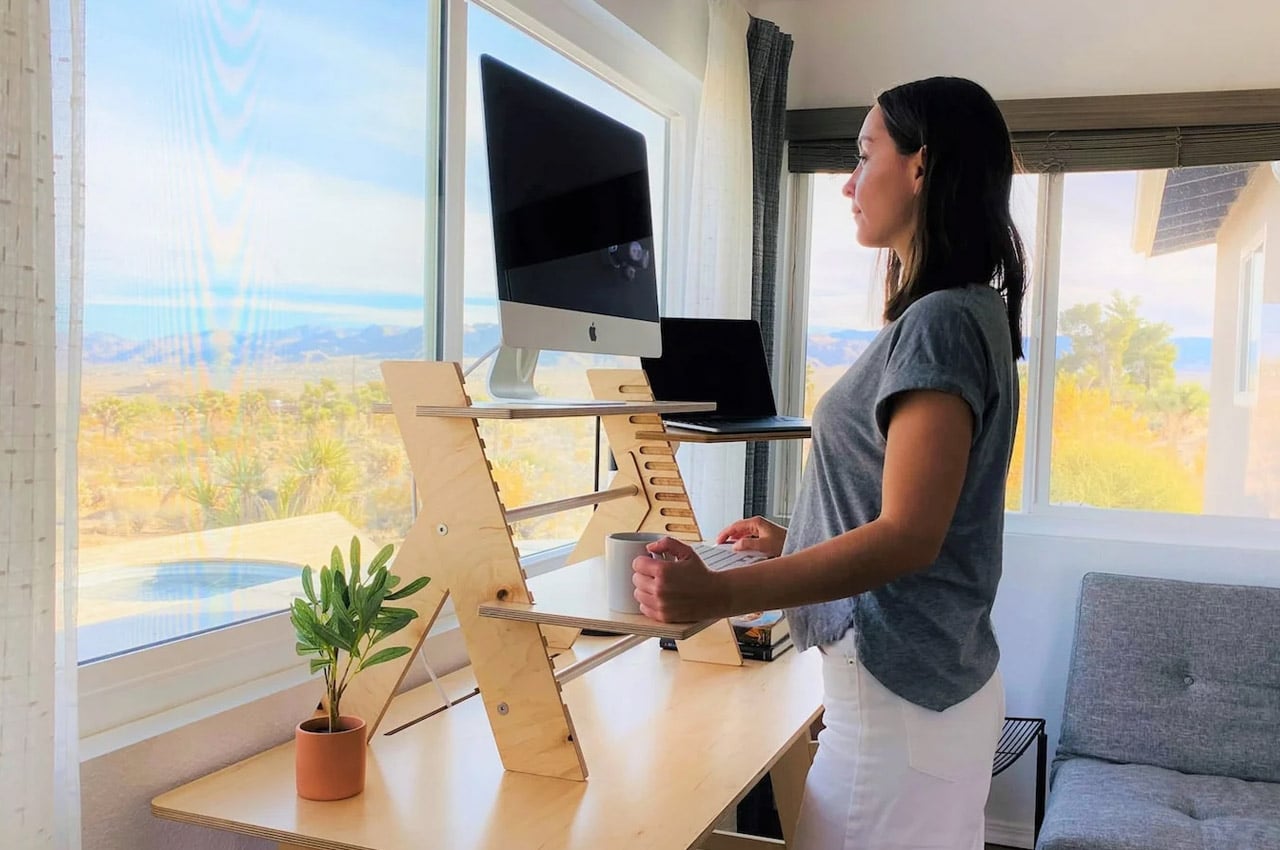

The RLDH Alto Standing Desk is a thoughtful flat-pack accessory designed keeping in mind your multiple needs if you can’t invest in a height-adjustable desk.
Why is it noteworthy?
The RLDH Alto Standing Desk is a thoughtful flat-pack accessory designed keeping in mind your multiple needs if you can’t invest in a height-adjustable desk. It is simple to carry and disassemble, with the option to adjust the height of your keyboard and mouse tray, giving it the flexibility of use with your laptop. Yes, this stylish yet functional standing desk is tailored for use with your laptop – virtually transforming your table into a standing desk when the need arises. Its flat-pack and lightweight (weighing just 6.5 lbs) nature give you the freedom to tuck it away when not needed or even to take it along during travel for remote work regimes.
What we like
- Transforms your table into a standing desk when needed
- Great replacement for a height-adjustable desk
What we dislike
8. The Threefold
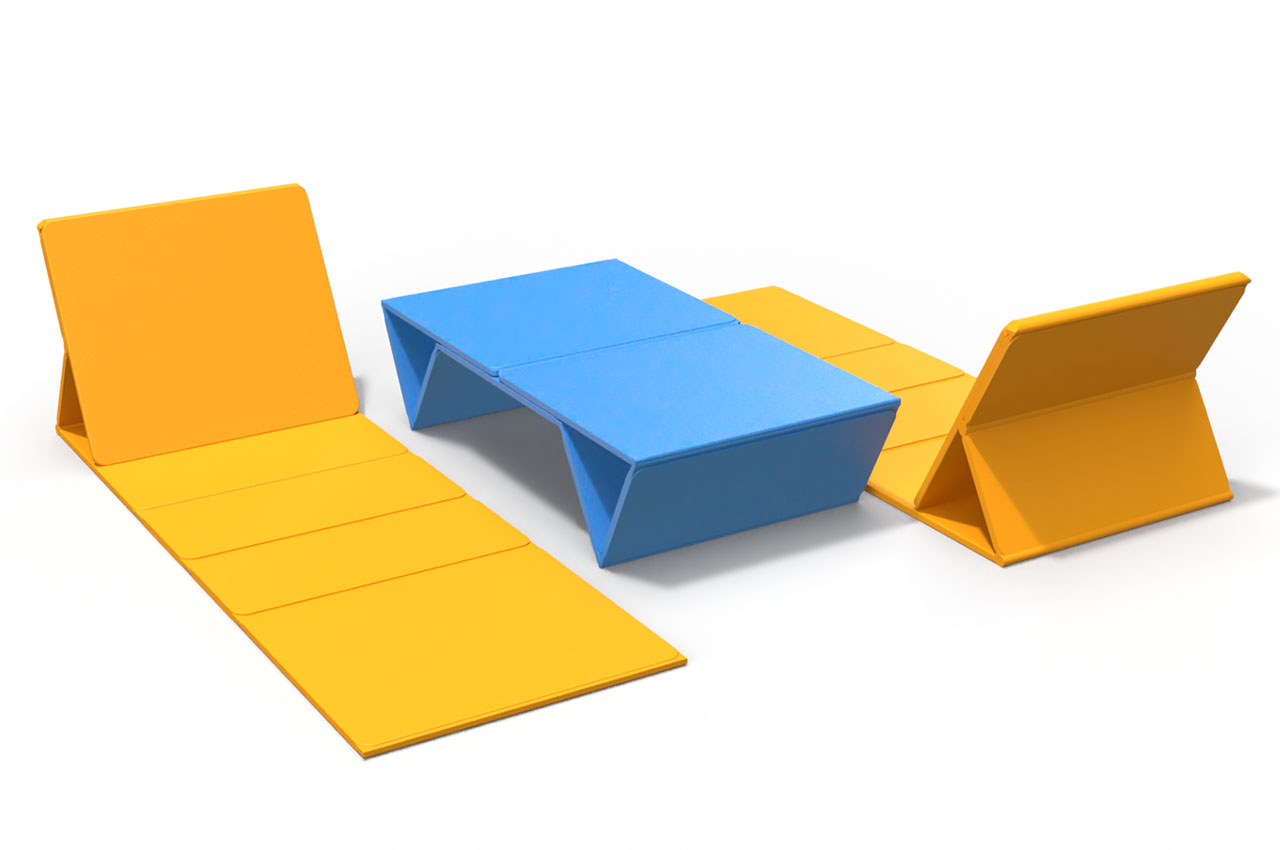
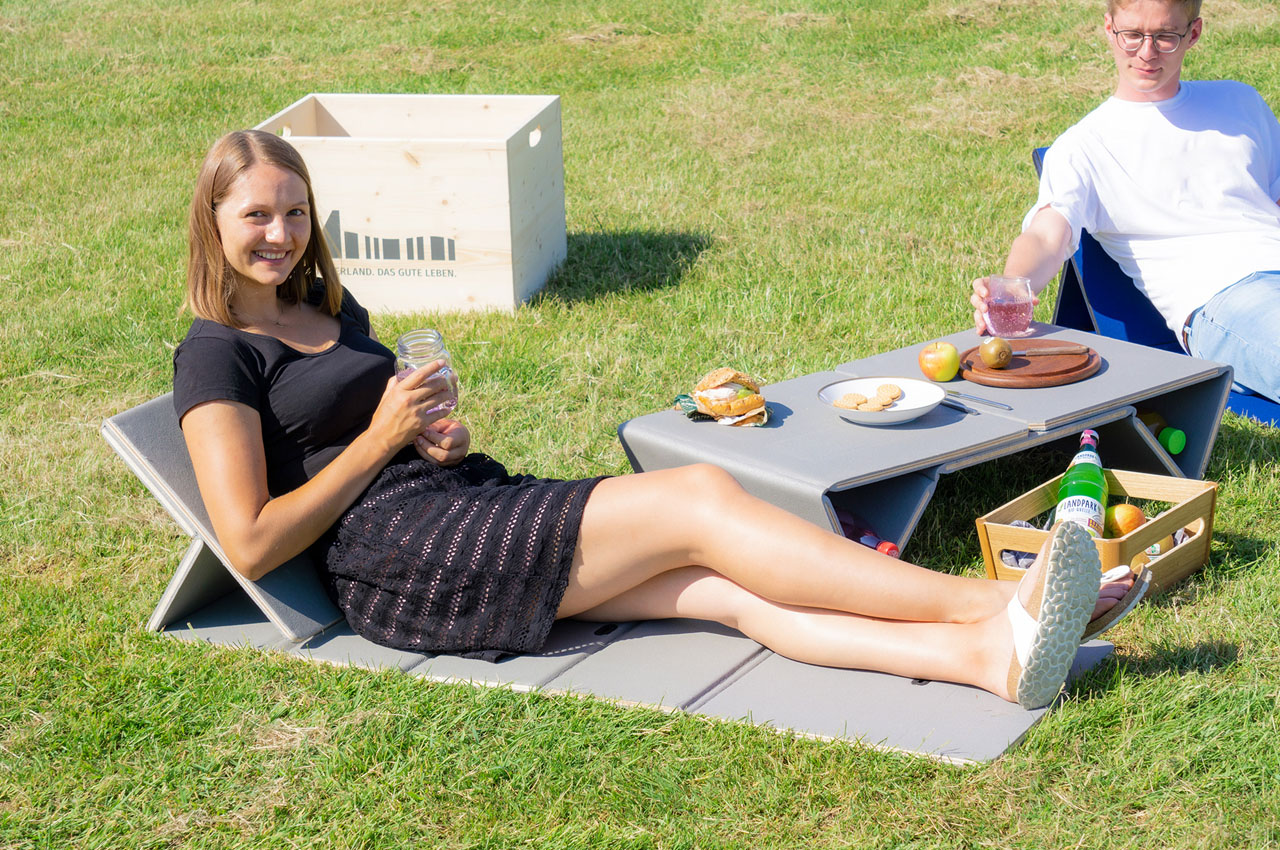
This modular furniture brings to the users a lounger they can lay back on with support, or it can instantly transform into a low stool for the aged who cannot sit cross-legged on the ground. And when you want to keep your food or a board game you’re carrying along, the Threefold can become a sturdy table. A perfect companion for picnics and camping, the Threefold construction is supported by stretchers and is safe and secure to use.
Why is it noteworthy?
There is frankly no dearth of adaptable furniture for picnics, camping, and outdoor events, but the Threefold presents its own use case, courtesy of its incredible versatility and effortless, timesaving flip in form. This is essentially true since the traditional mats we carry to the outdoors are limited in form. The fabric mats would offer more comfort, versus a semi-wooden mat as the Threefold, however, it has limited application. If you’d have realized, it excludes a section of users who cannot sit on the ground from convenience and comfort, compelling you to carry an additional folding chair. The conceptual Threefold outdoor furniture here extends adaptability to each individual’s needs in one useful unit.
What we like
- Transforms into a lounger, stool, and coffee table
- Safe + sturdy design
What we dislike
- Not very aesthetically pleasing
9. Home Tool


Normally when we see modular furniture, it’s meant for certain parts of the house. We’ve seen shelves and storage spaces for kitchen or work areas that also work as bookshelves and stationery storage space. There are also tons of closet space-saving furniture and systems out there. But this Home Tool seems to combine all of these things and more into a tiny package that will occupy just 0.45 square meters of your floor space.
Why is it noteworthy?
When “deactivated” or all the other panels are closed, you’re left with two open shelves where you can place books, decorations, or even jars of snacks that you’d want to have within reach. There’s a “desk” or work area that you can bring down where you can place your laptop or you can write or study on. Under that is another pullout type where you can place wine bottles. That way you can reward yourself instantly after you finish work or a task.
What we like
- The Home Tool has enough compartments and space to place various things that you need to be stored or displayed
What we dislike
10. Puffa
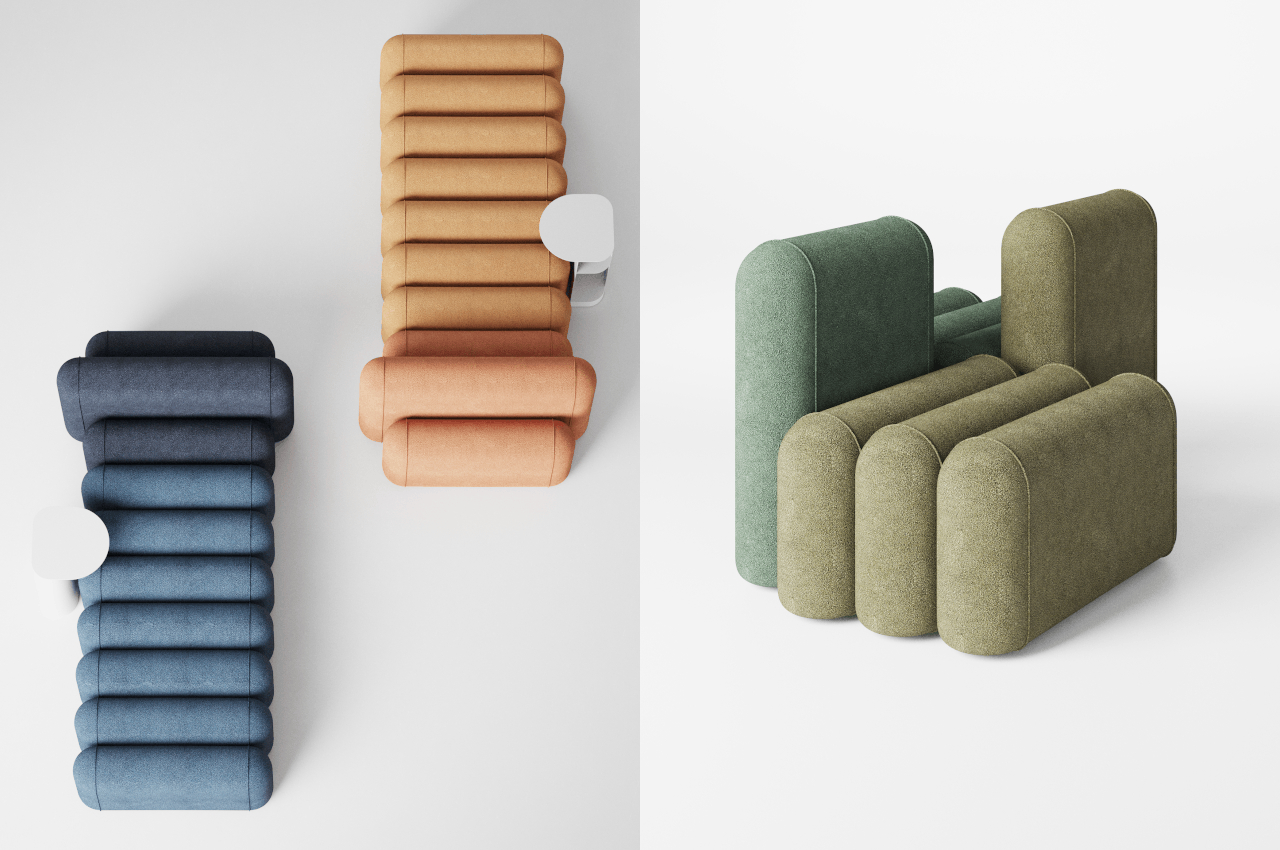

A pouf, however, often only accommodates one person, which means you might want to have more of them if you want to seat more. You could get a sofa, but that ties you into a fixed size that will forever take up a portion of the area, at least until you throw it out. Combining pouf and sofa, the “Puffa” tries to let you have the best of both worlds while leaving plenty of room to change your mind repeatedly later on.
Why is it noteworthy?
The Puffa is designed to be modular so that you can combine or remove segments as the need arises. You can have a single pouf-like arrangement with three standard size capsule-like cushions, or you can have a long sofa that combines a number of cushions with one extra tall piece for the backrest. You can even have two chairs if you don’t need a full sofa taking up a single stretch of floor space.
What we like
- Combines a pouf + sofa
- Puffa is envisioned to come in different colors, and you can mix and match them to your heart’s desires or aesthetic tastes
What we dislike
- Might not be the most comfortable thing to sit on!
The post Transforming designs that are pushing the boundaries of modern furniture design first appeared on Yanko Design.
